Cars
From cars to motorcycles, Jalopnik is your go-to site covering everything with an engine—including automotive news, buying guides, and expert commentary from our staff.
You Need This Customized Manta Mirage Can-Am Kit Car With Plymouth Prowler Wheels And Lamborghini Paint
- News
- Found For Sale
=This Can-Am–style kit car has been heavily modified, even fitted with wheels from a Plymouth Prowler, and you know what? It's kinda awesome.
=This Can-Am–style kit car has been heavily modified, even fitted with wheels from a Plymouth Prowler, and you know what? It's kinda awesome.
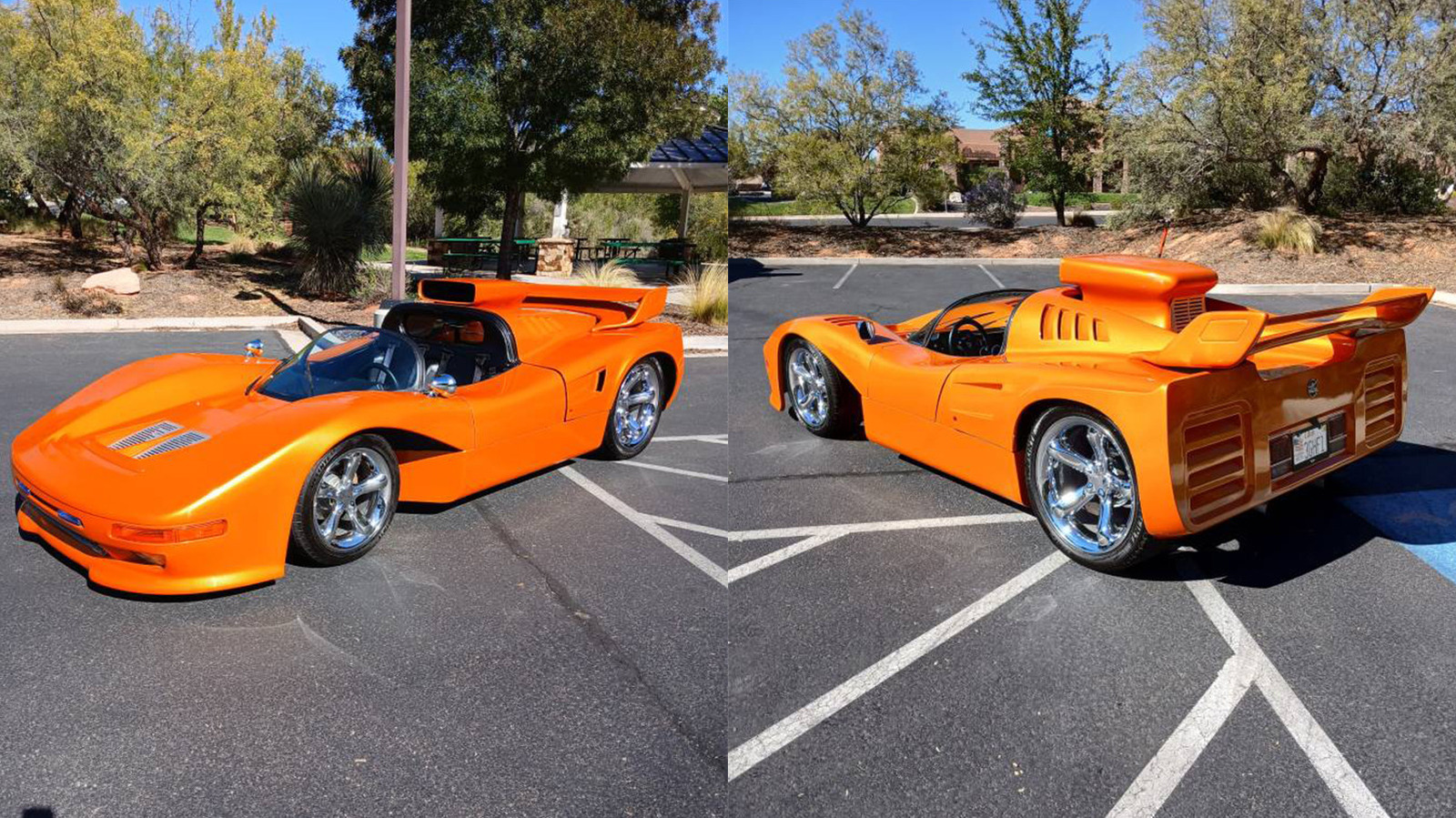
In Rare Show Of Whimsy, Porsche Patents Tunnel Mode That Will Automatically Make The Exhaust Louder And Open Windows
- Technology
- News
- Porsche
- Sports Cars
The feature could also activate sport mode, open the windows, crank the heater if it's cold out, downshift by at least one gear, and drop the convertible top.
The feature could also activate sport mode, open the windows, crank the heater if it's cold out, downshift by at least one gear, and drop the convertible top.
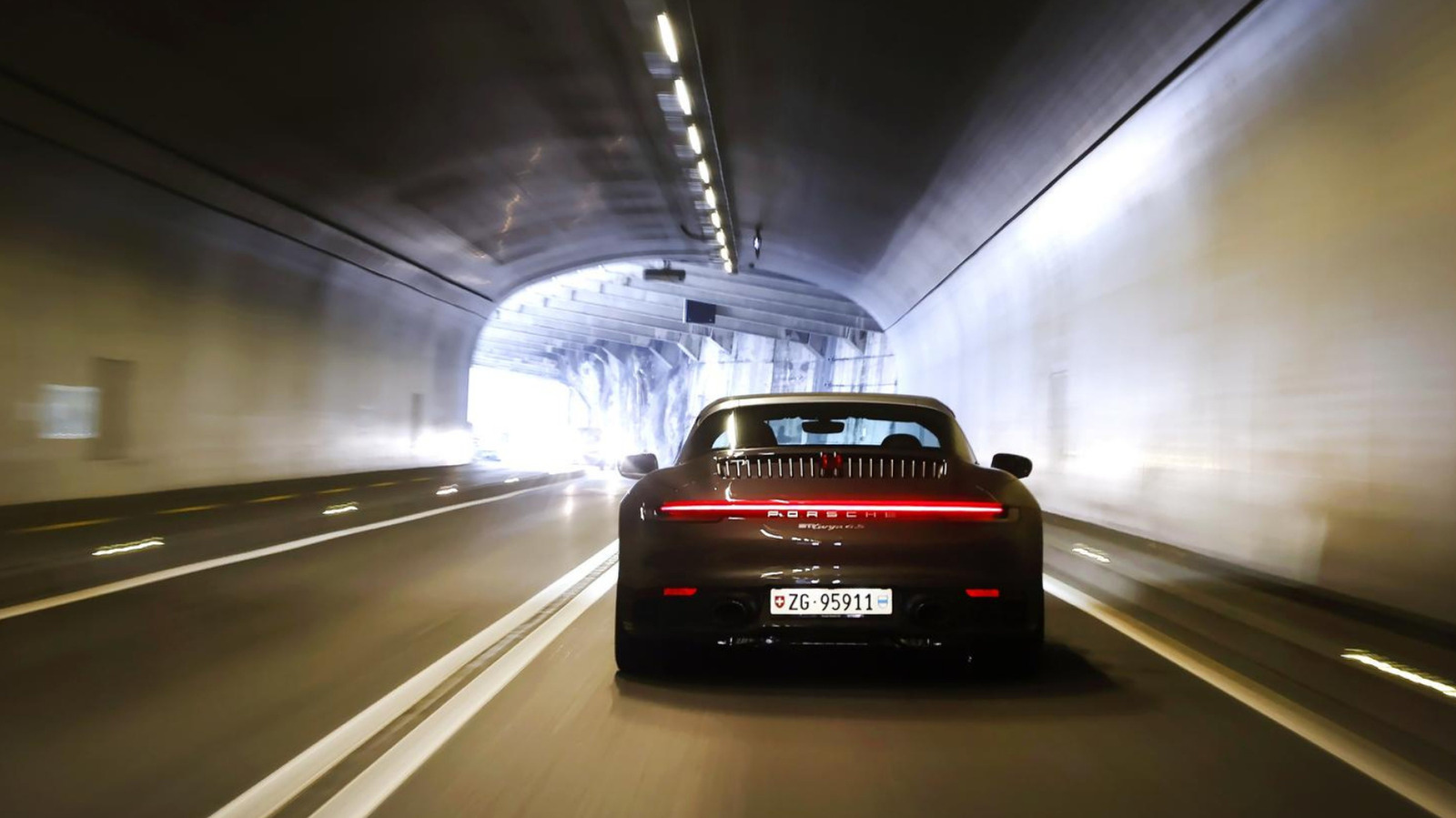
Rally Champion Sets Distance Record For 1,759 Miles On A Single Fill-Up In A Diesel Skoda
- News
The current European Rally Champion, Miko Marczyk, has set a new world record for driving 1,759 miles on a single tank of fuel.
The current European Rally Champion, Miko Marczyk, has set a new world record for driving 1,759 miles on a single tank of fuel.
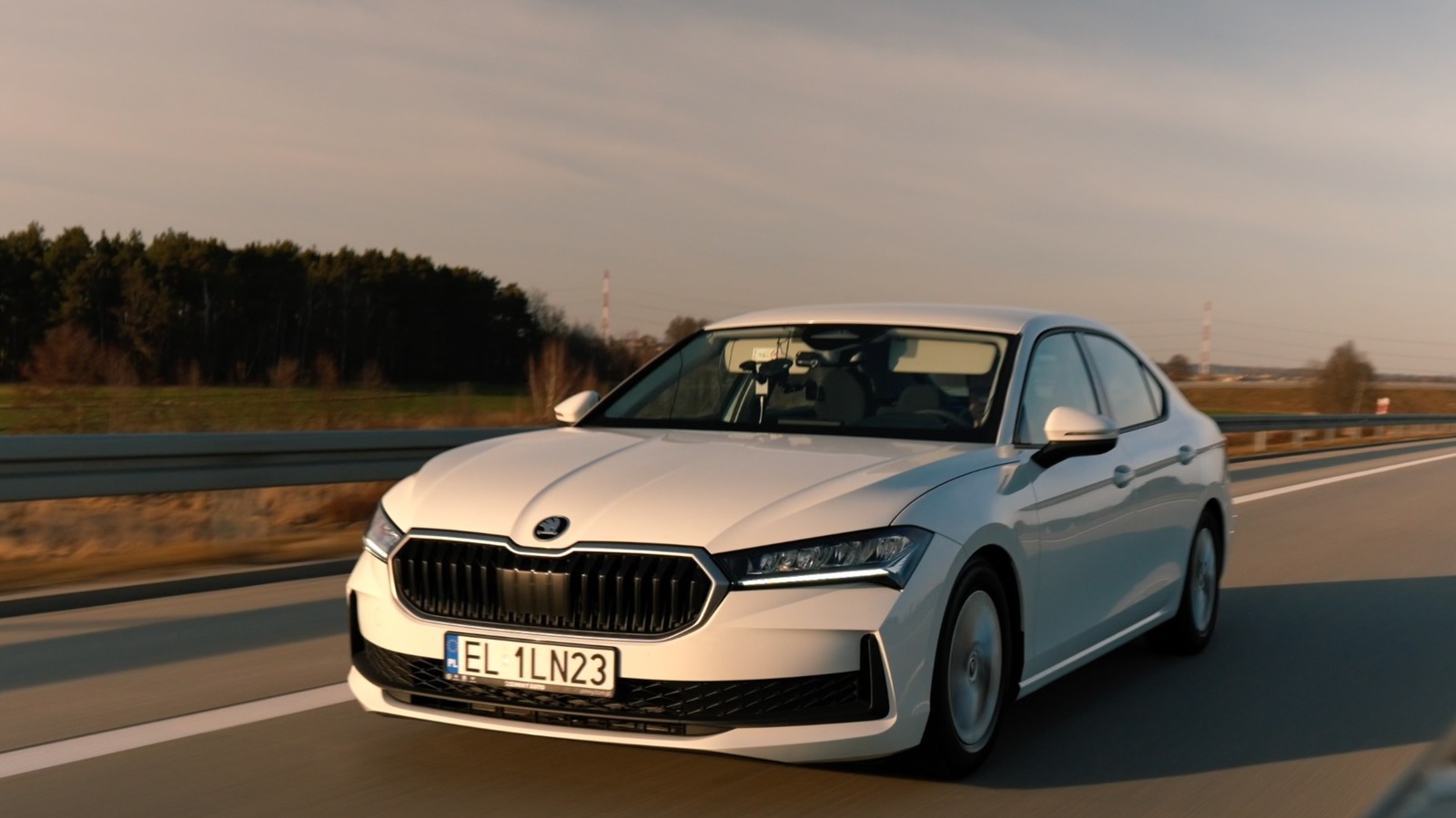
Please, Honda, Let Me Hoon The Civic Type R HRC Rally XP
- News
- Honda
Honda even says the car is still street legal, despite all the mods, and is built to meet the specs of ARA rally.
Honda even says the car is still street legal, despite all the mods, and is built to meet the specs of ARA rally.

Flight Attendant Fight Delays United Flight By 4 Hours
- News
- Planelopnik
There wasn't a blow-by-blow report, so it's not clear what happened before the passengers were deplaned.
There wasn't a blow-by-blow report, so it's not clear what happened before the passengers were deplaned.

These Are The Most Recognizable Exhaust Notes, According To Our Readers
- News
- QOTD
As some of you rightfully pointed out, an exhaust sound doesn't actually have to be good or appealing to be recognizable and iconic.
As some of you rightfully pointed out, an exhaust sound doesn't actually have to be good or appealing to be recognizable and iconic.
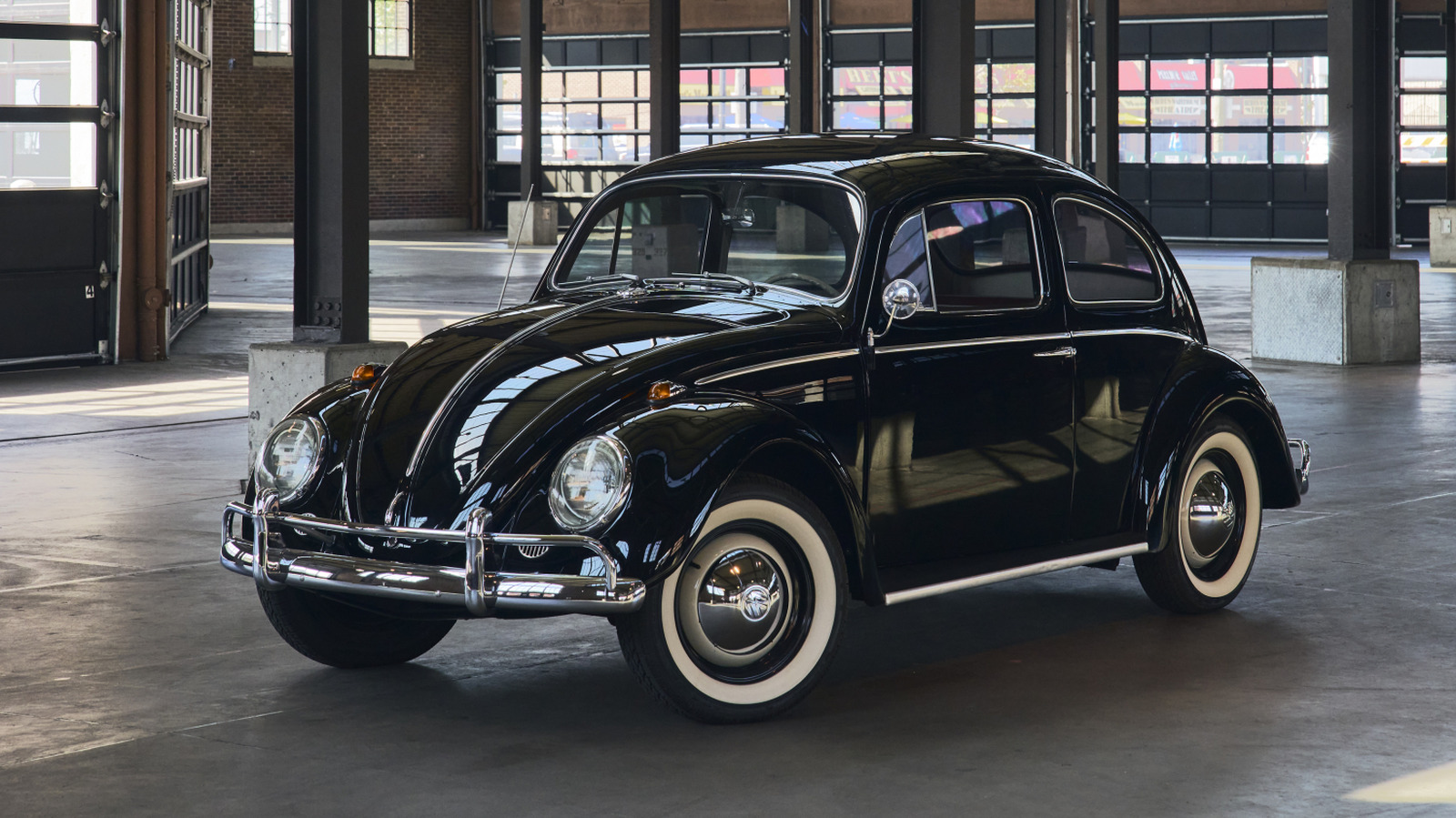
The New Chip Shortage Is Already Hitting Suppliers
- News
- The Morning Shift
We're looking at the new chip shortage, as well as Audi adjusting its earnings estimates in the face of economic headwinds.
We're looking at the new chip shortage, as well as Audi adjusting its earnings estimates in the face of economic headwinds.

What's The Greatest Japanese Car Ever Built?
- News
- QOTD
There have been a lot of incredible Japanese cars over the years, but which one is best?
There have been a lot of incredible Japanese cars over the years, but which one is best?
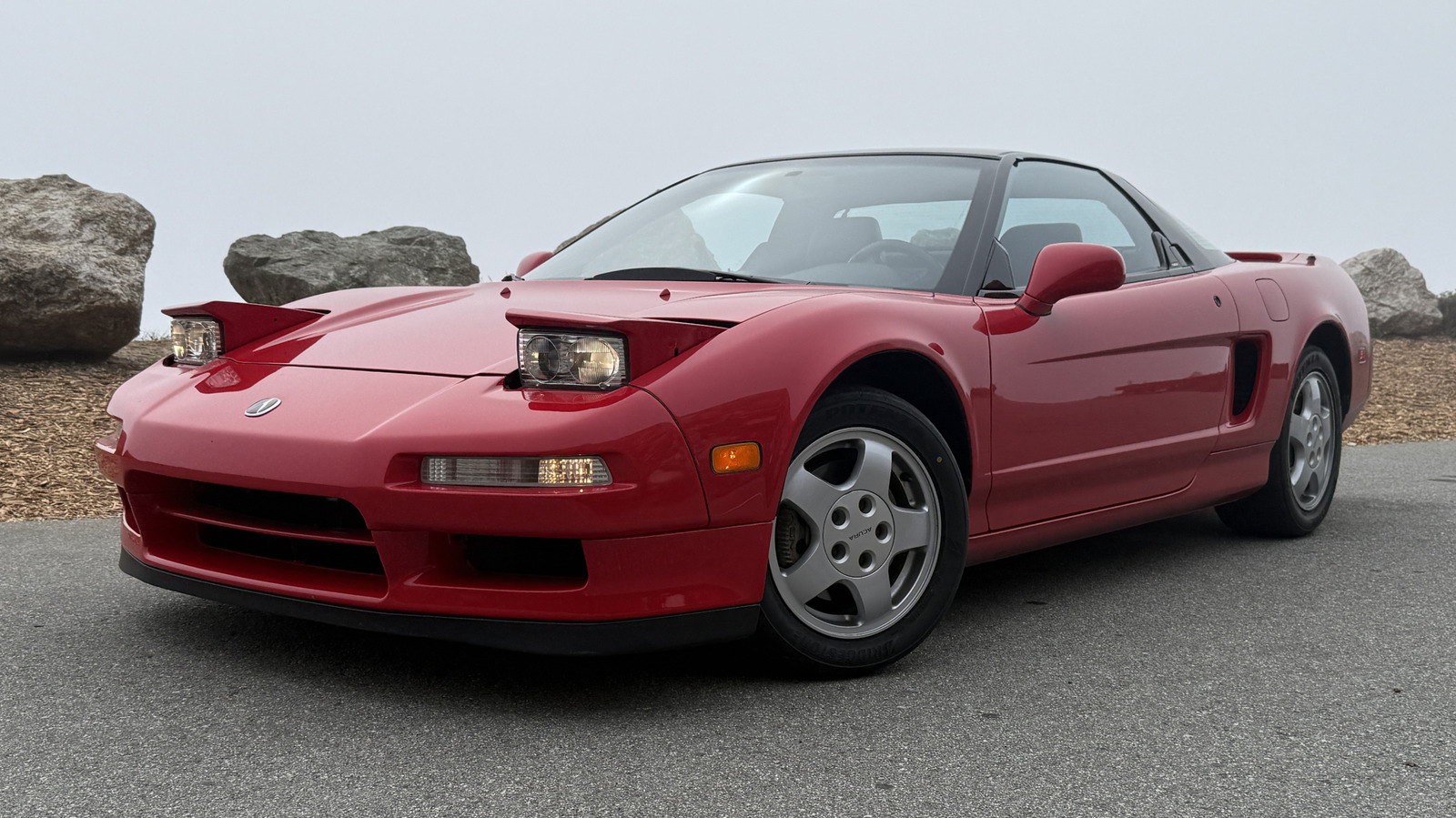
At $819,980, Is This 2025 Rolls-Royce Phantom Mansory A Trick Or A Treat?
- News
- Sedans
- Found For Sale
- Nice Price or No Dice
Striking terror into the hearts of the tasteful, is this customized behemoth a fitting scare for October 31st?
Striking terror into the hearts of the tasteful, is this customized behemoth a fitting scare for October 31st?
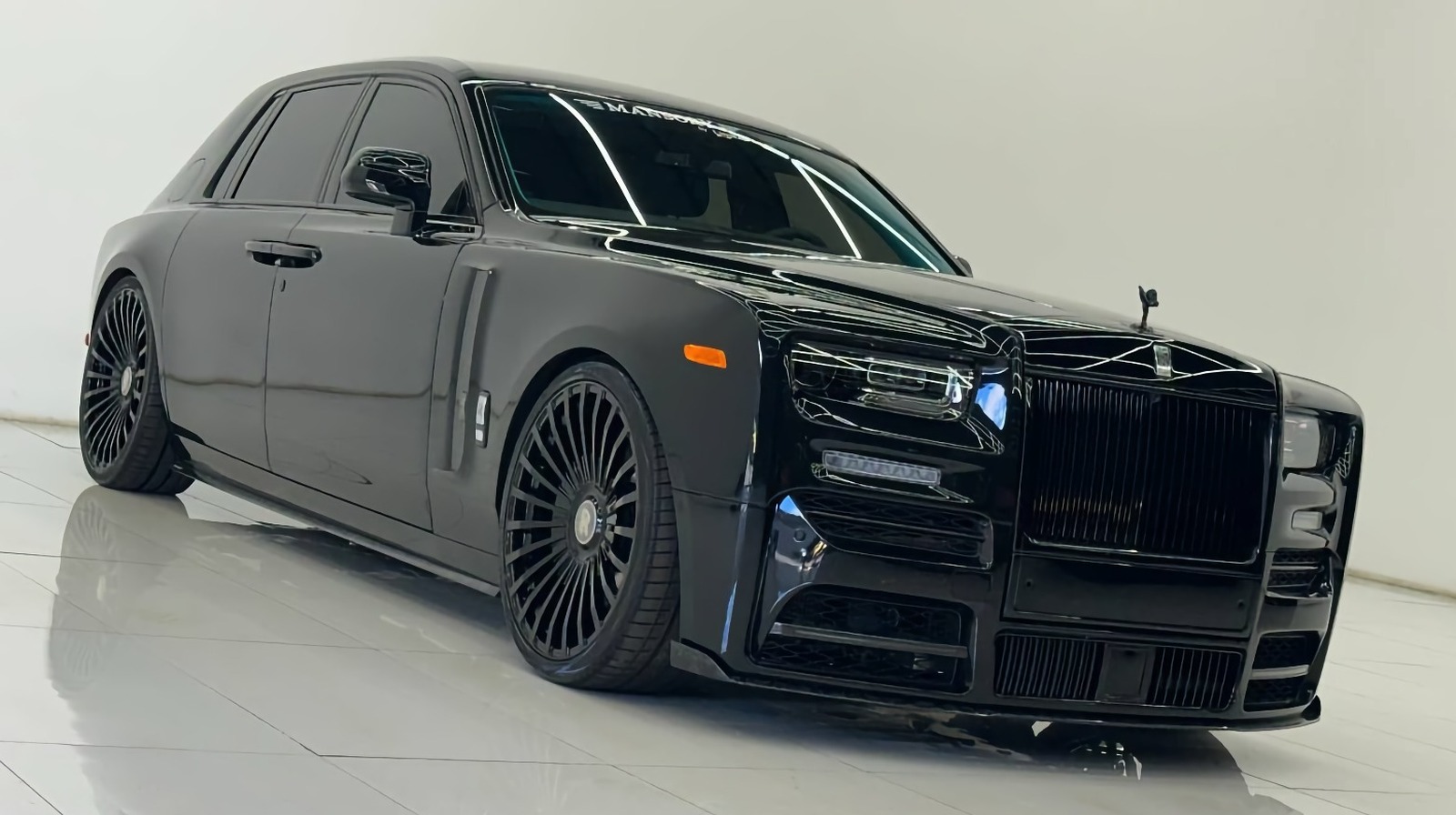
These Are The Oldest Highways In The U.S. Still Being Used Today
- Transportation
A road trip is a great way to see the country and rediscover your freedom, especially when that trip leads you down one of the oldest highways in the U.S.
A road trip is a great way to see the country and rediscover your freedom, especially when that trip leads you down one of the oldest highways in the U.S.
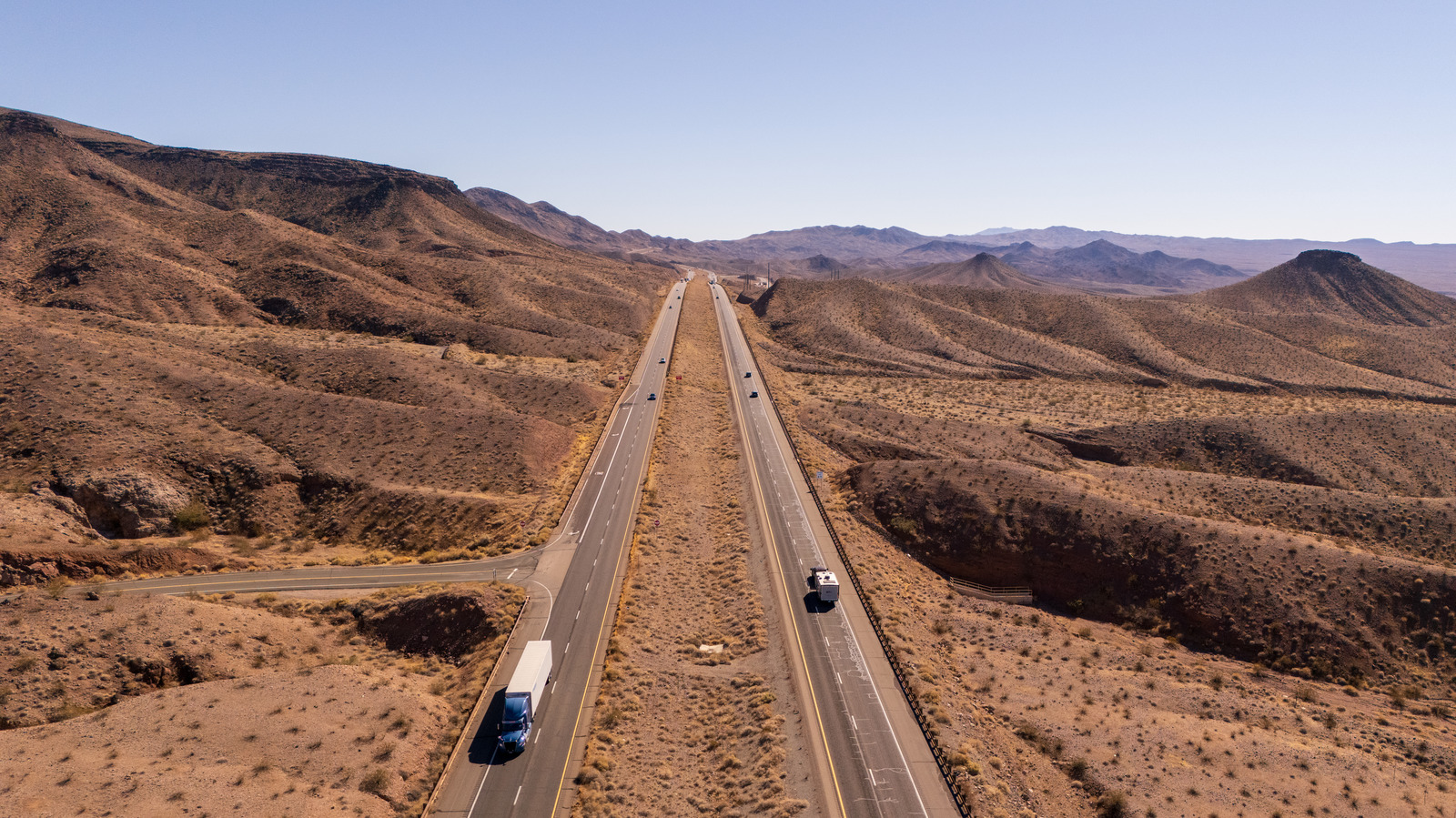
Former Stellantis CEO Says Elon Musk Might Ditch Car Business To Focus On Robots And Spaceships
- News
- Tesla
"I'm not sure that Tesla will still exist in 10 years," he reportedly said. "It's an innovative group, but they'll be beaten by BYD's efficiency."
"I'm not sure that Tesla will still exist in 10 years," he reportedly said. "It's an innovative group, but they'll be beaten by BYD's efficiency."

Delays To Boeing's 777X Airliner Just Cost The Company A Staggering $5 Billion
- News
- Planelopnik
The 777X delays and cost overruns are embarrassing for Boeing, but the news isn't all bad.
The 777X delays and cost overruns are embarrassing for Boeing, but the news isn't all bad.

Why The Chevy Camaro Emblem Looks Like A French Flag
- Chevrolet
Americans don't have a monopoly on red, white, and blue; these colors are used on many flags around the world. So what does the Camaro's emblem really show?
Americans don't have a monopoly on red, white, and blue; these colors are used on many flags around the world. So what does the Camaro's emblem really show?
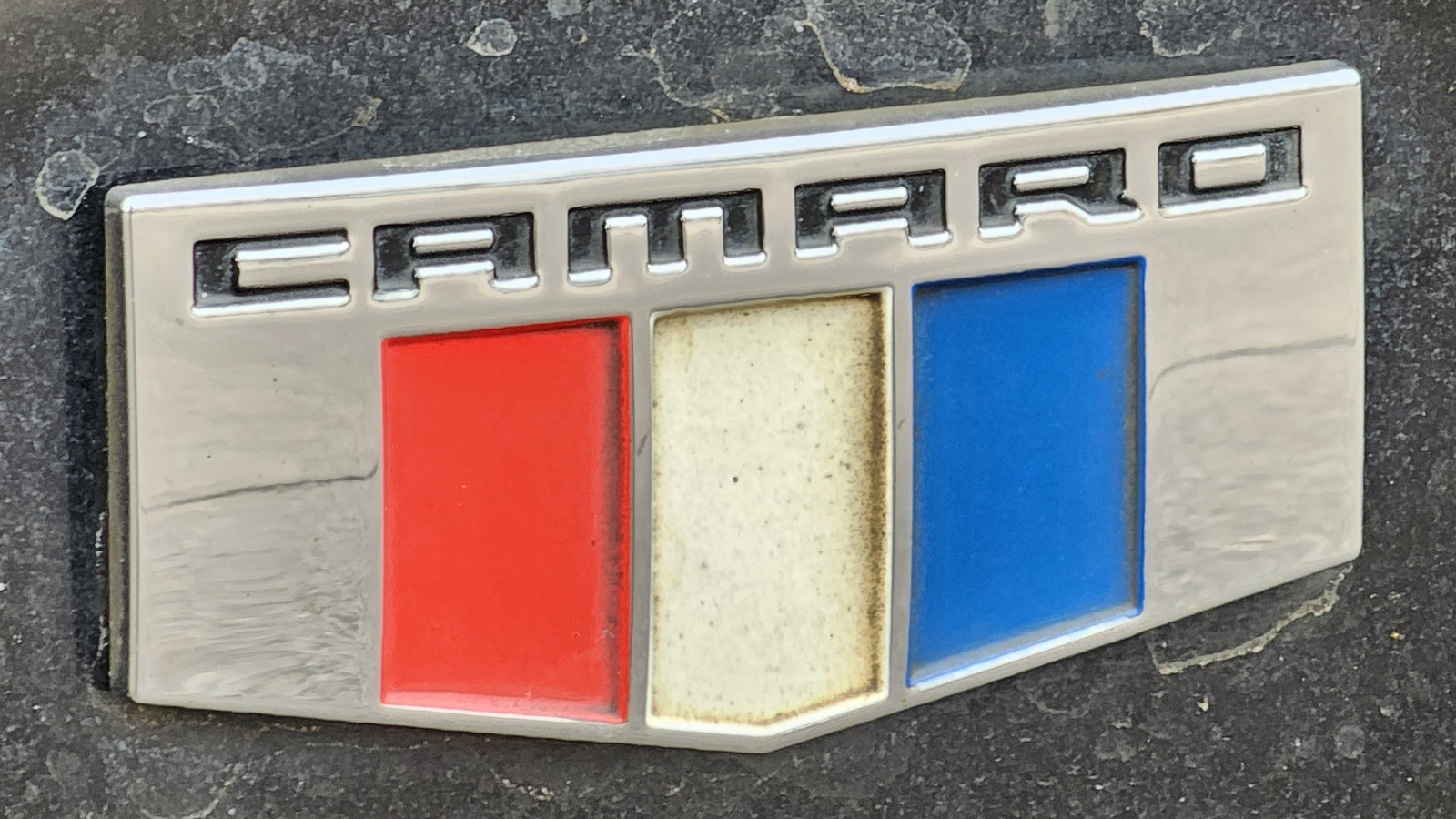
2009 F1 Champion Jenson Button Will Call It A Career After WEC Finale In Bahrain
- News
- Racing
Jenson Button confirmed on Wednesday that he will end his professional racing career after the 8 Hours of Bahrain in November.
Jenson Button confirmed on Wednesday that he will end his professional racing career after the 8 Hours of Bahrain in November.

I Just Moved To Florida, Now I Need A Convertible! What Car Should I Buy?
- News
- Advice
Nick moved out of NYC to sunny Florida, and he can finally justify buying a convertible. With a budget up to $30,000 what car should he buy?
Nick moved out of NYC to sunny Florida, and he can finally justify buying a convertible. With a budget up to $30,000 what car should he buy?
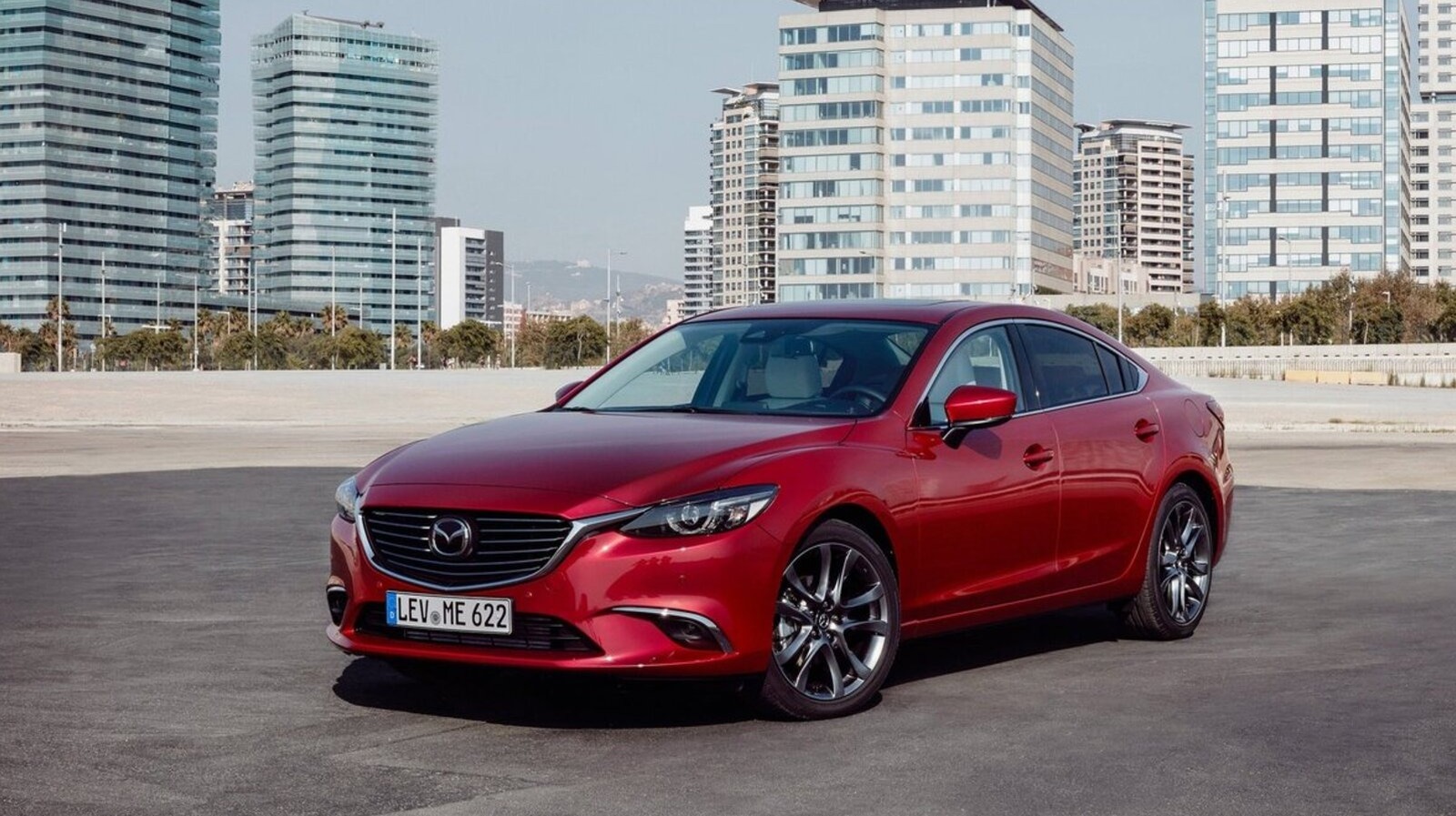
Anyone Can Drive Volvo's New VNL Semi Truck, But That Won't Make You A Trucker
- News
- Reviews
- Transportation
The only gig tougher than driving these trucks might be selling these made-in-the-USA trucks in Trump's America.
The only gig tougher than driving these trucks might be selling these made-in-the-USA trucks in Trump's America.
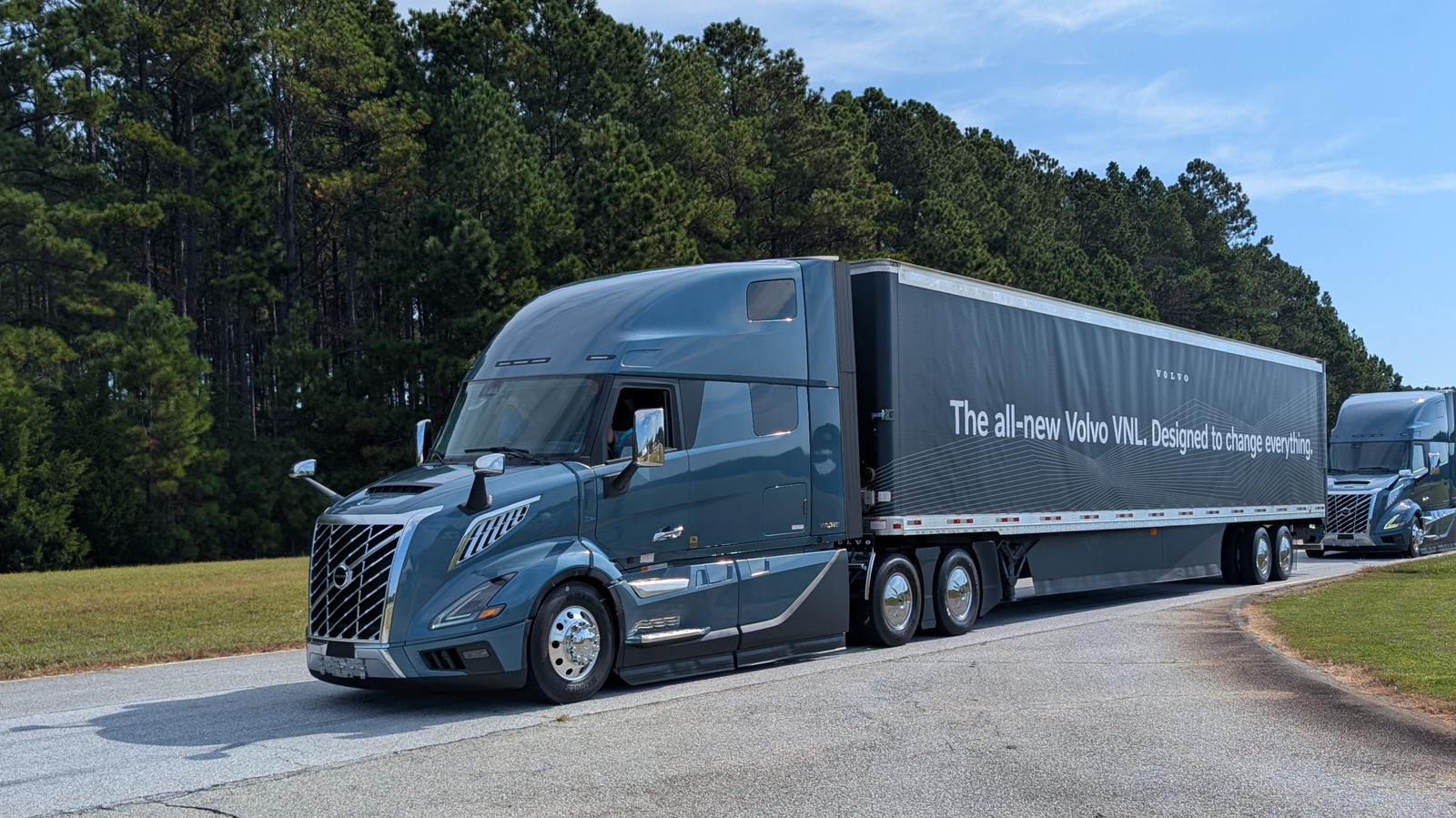
These Are Actually The Best Cars To Have Sex In, According To Our Readers
- News
- QOTD
We're not like other car blogs; we're a cool car blog.
We're not like other car blogs; we're a cool car blog.
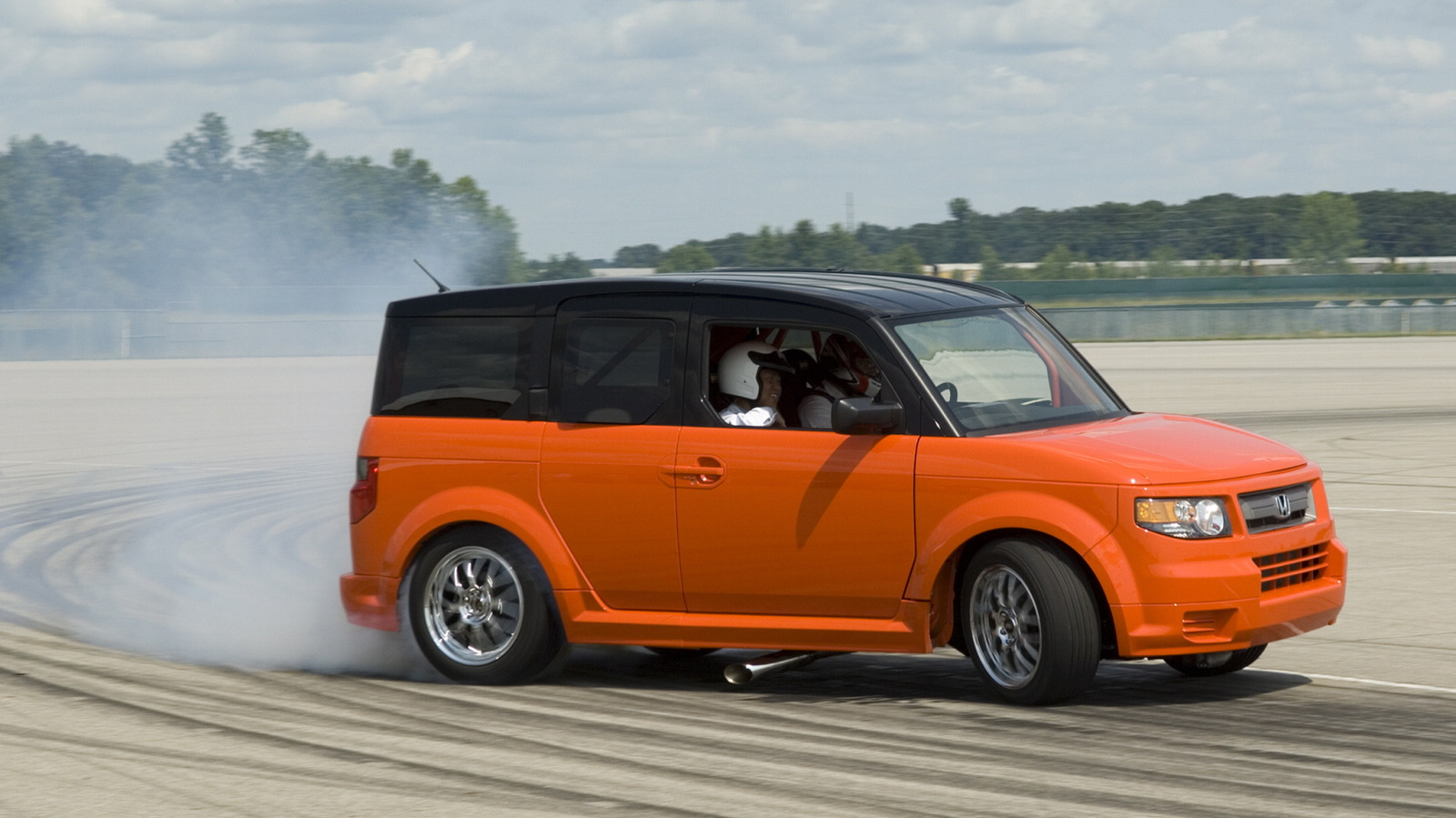
GM Pauses Factory Zero, Indefinitely Laying Off Workers
- News
- The Morning Shift
We're looking at GM's Factory Zero pause, as well as BYD's less-than-stellar third quarter, and more.
We're looking at GM's Factory Zero pause, as well as BYD's less-than-stellar third quarter, and more.

What State Or City Deserves A Special Edition Car?
- News
- QOTD
The world we live in is full of beautiful things to recognize and celebrate, and yet so few cars have special editions that honor specific places.
The world we live in is full of beautiful things to recognize and celebrate, and yet so few cars have special editions that honor specific places.
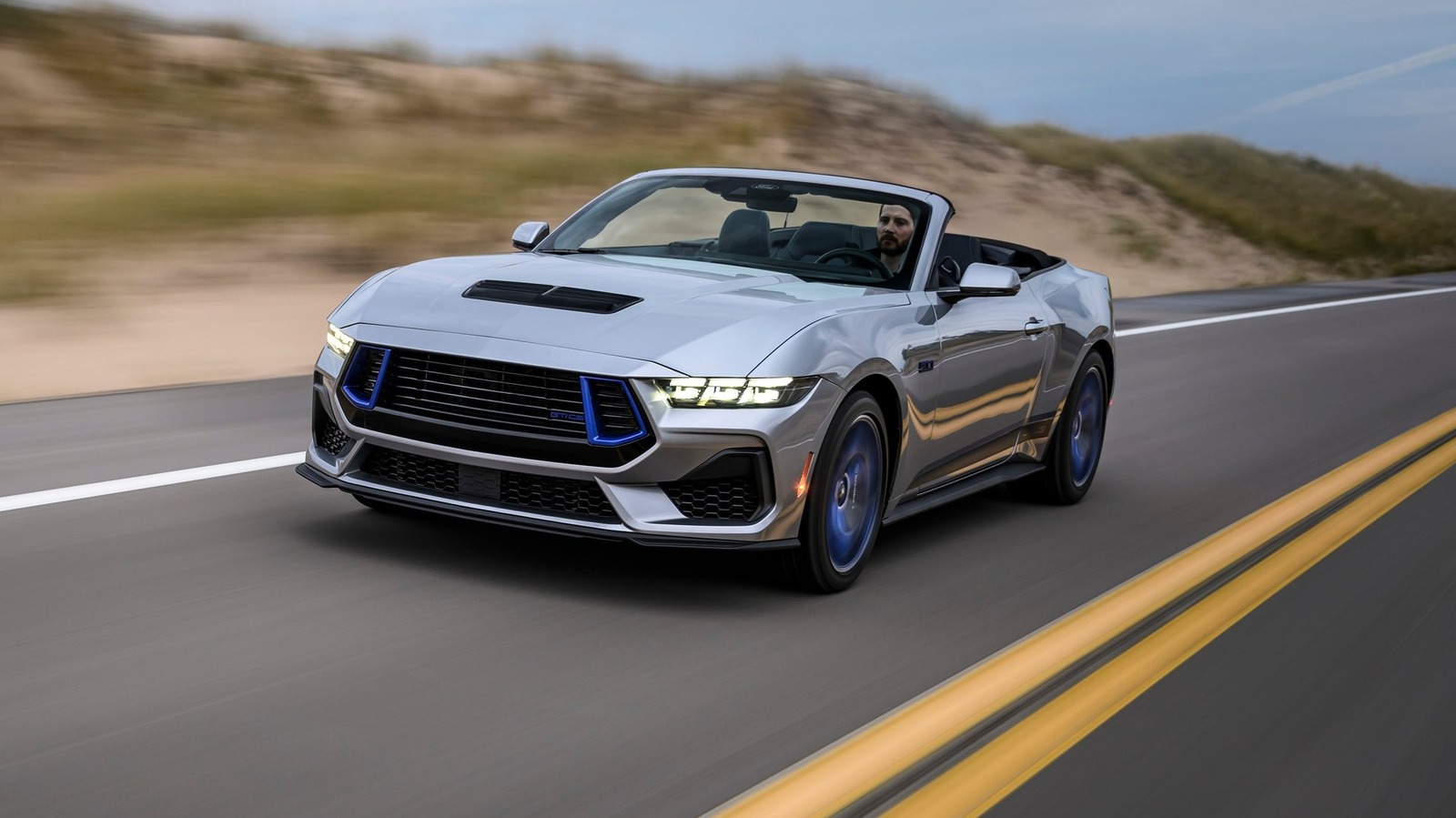
This 2027 Kia Telluride's Camouflage Wrap Is Made Of Sketches From Its Design Process
- News
- LA Auto Show
Kia still believes that American auto shows matter, so it's going to debut the second-generation Telluride at the Los Angeles Auto Show on November 20.
Kia still believes that American auto shows matter, so it's going to debut the second-generation Telluride at the Los Angeles Auto Show on November 20.


Volkswagen, Hit by Tariffs, Reports $1.5 Billion Loss and Warns of Chip Shortage
- Automobiles
- Nexperia BV
- Volkswagen AG
- Company Reports
- Trump, Donald J
- Blume, Oliver (1968- )
- Customs (Tariff)
- internal-open-access-from-nl
Europe’s largest automaker said a shortage of semiconductors could further hurt productivity.

G.M. Will Cut 1,750 Jobs in Electric Vehicle Business
- General Motors
- Electric and Hybrid Vehicles
- Automobiles
- Sports Utility Vehicles and Light Trucks
- Batteries
- Factories and Manufacturing
- Layoffs and Job Reductions
- Tax Credits, Deductions and Exemptions
- One Big Beautiful Bill Act (2025)
- United States Politics and Government
- Trump, Donald J
- LG Energy Solution
- Michigan
- Ohio
- Tennessee
The layoffs at factories in Michigan, Ohio and Tennessee follow the elimination of a $7,500 federal tax credit for electric cars.

Ford’s Profit Jumps on Strong Sales but Company Lowers its Outlook
- Automobiles
- Production
- Fires and Firefighters
- Customs (Tariff)
- United States Politics and Government
- International Trade and World Market
- Prices (Fares, Fees and Rates)
- Company Reports
- Electric and Hybrid Vehicles
- Sports Utility Vehicles and Light Trucks
- Aluminum
- Tax Credits, Deductions and Exemptions
- Ford Motor Co
- Novelis Inc
- Trump, Donald J
- Kentucky
- Michigan
- Oswego (NY)
Ford said a fire at an aluminum factory will lower profits in the last three months of the year. The company also said it has stopped making an electric version of its popular F-150 pickup.

Volkswagen Says Loss of Chip Supply Could Hit Production
- Volkswagen AG
- Nexperia BV
- Automobiles
- Computer Chips
- Supply Chain
- International Relations
- Shortages
- Germany
- European Union
After China stopped deliveries of Nexperia’s chips over a dispute with the Dutch government, German carmakers are worried about supply shortages.

Tesla’s Profit Falls 37% After It Cut Car Prices
- Electric and Hybrid Vehicles
- Company Reports
- Tesla Motors Inc
- Musk, Elon
- Prices (Fares, Fees and Rates)
- United States Politics and Government
- Automobiles
- Driverless and Semiautonomous Vehicles
- Tax Credits, Deductions and Exemptions
- Executive Compensation
- Regulation and Deregulation of Industry
- Discount Selling
- Trump, Donald J
- United States
The company sold more cars but made less money on each one because of discounts and low-interest loans.

G.M. Raises Profit Forecast on Strong Demand and Lower Tariff Costs
- Automobiles
- General Motors
- Electric and Hybrid Vehicles
- Sports Utility Vehicles and Light Trucks
- Barra, Mary T
- Company Reports
- Production
- Factories and Manufacturing
- Trump, Donald J
- International Trade and World Market
- Customs (Tariff)
- Tax Credits, Deductions and Exemptions
- United States Economy
- Stocks and Bonds
The automaker’s shares jumped as investors focused on an upgraded forecast for some financial measures, as well as a lower-than-expected bill for tariffs this year.

G.M. Previews Talking Cars, Cheaper Batteries and Other New Tech
- Automobiles
- Electric and Hybrid Vehicles
- Artificial Intelligence
- Prices (Fares, Fees and Rates)
- Driver Distraction and Fatigue
- Driverless and Semiautonomous Vehicles
- Batteries
- United States Politics and Government
- Computers and the Internet
- Lithium (Metal)
- Innovation
- Roads and Traffic
- General Motors
- Tesla Motors Inc
- Google Inc
- BYD Co Ltd
- Barra, Mary T
- Musk, Elon
- Trump, Donald J
Drivers will be able to converse with an artificial intelligence assistant while cars largely drive themselves in certain situations, the company said.

5 Great Road Trips to Take in the Western U.S. This Fall
- Road Trips
- Travel and Vacations
- Colorado
- California
- Oregon
- Washington (State)
- New Mexico
- Content Type: Service
Whether they’re on the Pacific Coast or in the Rockies, these short drives offer plenty to see and do — so much, in fact, that you might want to take it slow.

After an ICE Raid in Rural Georgia, Hyundai Keeps Betting on America
- Factories and Manufacturing
- Automobiles
- Electric and Hybrid Vehicles
- Foreign Investments
- Labor and Jobs
- Batteries
- Rural Areas
- Foreign Workers
- Illegal Immigration
- Hyundai Motor Co
- Kia Motors Corp
- LG Energy Solution
- SK Innovation Co Ltd (SK On)
- Trump, Donald J
- Ellabell (Ga)
- Georgia
- South Korea
- internal-open-access-from-nl
The revival of America’s industrial base is happening amid pine forests and peanut farms. And it’s being led by a South Korean company.

Lower-Income Americans Are Missing Car Payments
- Financial Planners
- Automobile Financing
- Credit and Debt
- Labor and Jobs
- Banking and Financial Institutions
- Federal Reserve Bank of New York
- Subaru
Inflation and a tough job market are making it harder for some people to pay back the car loans they signed in better times.

Trump Sets Tariffs on Trucks and Buses and Extends Exemptions for Automakers
- Trump, Donald J
- United States Politics and Government
- Customs (Tariff)
- International Trade and World Market
- Trucks and Trucking
- Sports Utility Vehicles and Light Trucks
- United States
- Ford Motor Co
- Stellantis NV
- Automobiles
Imported light and heavy trucks will be charged 25 percent and buses 10 percent as of Nov. 1, but President Trump also extended tariff exemptions for auto parts.

Jeep Parent Stellantis, Faced With Trump’s Tariffs, Shifts Auto Production From Canada to the U.S.
- Customs (Tariff)
- Automobiles
- Factories and Manufacturing
- Labor and Jobs
- United States International Relations
- Stellantis NV
- Unifor
- Carney, Mark J
- Filosa, Antonio
- Ford, Doug Jr (1964- )
- Trump, Donald J
- Brampton (Ontario)
- Canada
- Ontario (Canada)
- United States
- internal-open-access-from-nl
Canadian leaders blame the move by Stellantis to abandon production in Ontario on President Trump’s tariffs. Mr. Trump says he wants to increase production in the United States.

Slowing Electric Vehicle Sales Will Cost G.M. $1.6 Billion
- Electric and Hybrid Vehicles
- Automobiles
- Tax Credits, Deductions and Exemptions
- Appraisals and Valuation (Property)
- Prices (Fares, Fees and Rates)
- Batteries
- United States Politics and Government
- Factories and Manufacturing
- General Motors
- Trump, Donald J
- United States
General Motors said it would lower its earnings by that amount to mainly reflect the drop in the value of equipment, factories and other assets.

A 4-Day Motorcycle Tour on Vietnam’s Ha Giang Loop
- Travel and Vacations
- Motorcycles, Motor Bikes and Motorscooters
- Road Trips
- Ha Giang Province (Vietnam)
- Vietnam
- Ha Giang Loop
- internal-open-access-from-nl
The roughly 230-mile Ha Giang Loop, six hours north of Hanoi, thrills riders with breathtaking views, cultural wonders, and plenty of twists and turns.

How Much It Costs to Drive an E.V. and a Gas Car in Every State
- Automobiles
- Electric and Hybrid Vehicles
- Prices (Fares, Fees and Rates)
- Fuel Efficiency
- States (US)
- Financial Planners
Charging an electric car battery is usually cheaper than going to the gas pump. But it depends on where you live.

Tesla Reveals Cheaper Versions of Model Y and Model 3
- Electric and Hybrid Vehicles
- Automobiles
- Prices (Fares, Fees and Rates)
- Tax Credits, Deductions and Exemptions
- United States Politics and Government
- Tesla Motors Inc
- Musk, Elon
- Trump, Donald J
Elon Musk’s electric car company said the new versions would start at around $37,000 and $40,000, prices that bring its cars closer to comparable gasoline vehicles.

Tesla Is Sued by Families Who Say Faulty Cybertruck Doors Led to Two Deaths
- Tesla Motors Inc
- Suits and Litigation (Civil)
- Deaths (Fatalities)
- Electric and Hybrid Vehicles
- Sports Utility Vehicles and Light Trucks
- Automobile Safety Features and Defects
- Traffic Accidents and Safety
- Batteries
- Fires and Firefighters
- Regulation and Deregulation of Industry
- National Highway Traffic Safety Administration
- Tsukahara, Krysta (2004-24)
- Tsukahara, Carl
- Piedmont (Calif)
- Soren Dixon
- Jack Nelson
Two Californians were trapped in a burning Cybertruck because electronic doors made it difficult for them to get out or be rescued, lawsuits claim.

Electric Vehicles Face a ‘Pretty Dreadful Year’ in the U.S.
- Electric and Hybrid Vehicles
- Automobiles
- United States Politics and Government
- Fuel Emissions (Transportation)
- Tax Credits, Deductions and Exemptions
- Global Warming
- Sports Utility Vehicles and Light Trucks
- International Trade and World Market
- Factories and Manufacturing
- Fuel Efficiency
- Federal Aid (US)
- Regulation and Deregulation of Industry
- Prices (Fares, Fees and Rates)
- Oil (Petroleum) and Gasoline
- General Motors
- Ford Motor Co
- Rivian Automotive LLC
- Tesla Motors Inc
- Stellantis NV
- Biden, Joseph R Jr
- Trump, Donald J
- United States
The end of a federal tax credit is expected to push sales of battery-powered cars down but auto experts believe the market will eventually recover.

Jaguar Faces Prolonged Shutdown After a Cyberattack
- Automobiles
- Shutdowns (Institutional)
- Cyberattacks and Hackers
- Factories and Manufacturing
- Jaguar Land Rover
- Great Britain
- Computer Security
- International Trade and World Market
The luxury carmaker shut down production in early September to contain the breach. It announced on Tuesday that it would take more time to resume operations.

Tesla’s 2021 Model Y Doors Could Trap Riders, US Safety Agency Says
- Tesla Motors Inc
- Electric and Hybrid Vehicles
- Traffic Accidents and Safety
- Automobile Safety Features and Defects
- National Highway Traffic Safety Administration
- Regulation and Deregulation of Industry
- Musk, Elon
- United States
- United States Politics and Government
- Batteries
The agency is investigating reports that electronic doors on one model couldn’t be opened from outside, trapping children or others inside.

Car and Bike news, reviews and videos.
AGV K7 helmet review
AGV’s K series has long been a safe bet for riders who want a lid that blends style, brand value and sporty intent with day-to-day practicality. The latest K7 continues that tradition, and after six months of use in both city commutes and highway runs, here’s how it stacks up.
The K7’s composite fibre shell feels properly solid and tips the scales at around 1,450g in its smallest shell size, which makes it a lot heavier than the AGV K6 S (1,220g), and some of its rivals. That said, AGV does offer three shell sizes and four EPS sizes to maximise fit options.
It’s ECE 22.06 certified and designed under AGV’s “Extreme Safety” protocol, with a cutout in the lower edge to prevent collarbone injuries. The K7’s aerodynamics have been refined in a wind tunnel, and the compact, integrated spoiler is said to help the helmet stay stable at speed/
Will take time to memorize the location of the visor lock and vent opening and closure switch.I’m using a size M, and the helmet fits true to size, offering a snug, secure feel without pressure points. On the inside, it uses different yet premium-feeling fabrics for the cheek pads and the crown, along with a special treatment for speedy moisture absorption.
This helmet gets a ratchet strap instead of a double-d ring closure system which may upset some "purists".The padding is nicely supportive at speed, and it’s less dense around the ear to better accommodate glasses, which is a welcome addition.
It is easy to wear a pair of glasses.In terms of optics, the panoramic visor delivers a 190° field of view, is UV-protected and anti-scratch, and comes with a Pinlock 120 MaxVision insert to keep fogging in check. The visor lock feels cumbersome at first, but you eventually learn to get used to it. The integrated sun visor adds convenience, but it isn’t as dark as I’d like and doesn’t drop quite far enough either.
Sunsheild could have dropped down lower and had a darker tint for better coverage.Ventilation is handled by five front vents, two rear extractors, which work well at speed but less so when crawling through traffic. Out on the highway, though, it’s more effective. The helmet is also comms-ready, with compatibility built in for AGV’s Insyde intercom system that sits flush within the helmet when equipped.
Built in slot for AGV's Insyde com-systemAt highway speeds, the K7 feels planted and composed, with minimal buffeting thanks to its streamlined shell. Noise levels are average for this class, but manageable, especially with earplugs. The weight does make itself felt over longer stints, particularly with an intercom fitted, and neck fatigue sets in a little sooner than with lighter helmets and will require a bit of stretching every now and then.
The K7 makes a decent case for itself as a versatile, do-it-all helmet. It combines reliable safety, a premium finish, and useful features in a package that works as well for weekday commuting as it does for weekend touring. However, not everything is perfect as the interior runs warm and the sun visor could be darker. That said, as a solid sport-touring lid, it ticks most of the right boxes.
Where: agv.com
Price: Rs 50,000 approx

2025 KTM 250 Adventure review: Calm but capable
KTM’s 250 Adventure has long played second fiddle to the more powerful and better-equipped 390, but for 2025, this entry-level ADV gets a significant upgrade, borrowing not just the engine from the new-gen 250 Duke but also getting a host of premium features. With the recent GST price cuts, the 250 Adventure now costs Rs 8,000 less than its predecessor which makes it even more accessible. Now standing as a more rounded package, is this the best beginner ADV out there?
KTM 250 Adventure design and quality - 8/10 You get big bike looks at a more affordable price tagIf road presence matters to you, the 250 Adventure delivers in spades. It shares all of its bodywork with the larger 390 Adventure X, and that lends it a proper big-bike look. The tall stance and clean-cut body panels give it a premium visual edge. The 250 Adventure wears its proportions well, and nothing about it feels entry-level.
The tall windscreen is great on a cold day and not so great on a hot day.The switchgear is tactile, the paint looks decent, and most of the bodywork feels tightly put together. That said, our fairly new test bike is already throwing up a rattle from somewhere in the front bodywork, and this is something that we have experienced with the 390 ADV in the past as well.
Premium and easy-to-use TFT is a welcome addition.This year’s generation change brings a host of electronic goodies that were previously missing on the 250. You now get a crisp 5-inch colour TFT display with Bluetooth connectivity, turn-by-turn navigation, music and call controls. It’s legible even under bright sunlight and feels properly premium.
Weight and dimensionsKerb weight176kgGround clearance228mmSeat height825mmFuel tank14.5 litresRider aids include a bi-directional quickshifter and dual-channel ABS with the ability to switch off the rear. Importantly, none of this comes across as gimmicky, and everything feels functional in everyday riding.
KTM 250 Adventure riding position and comfort - 8/10 It has the same seat height and ergonomics as the 390 Adventure X.The KTM’s upright riding posture feels just right for a bike in this class. At nearly 6 feet tall, I found the seating to be relaxed, with a comfortable reach to the bars and neutrally set footpegs. There’s ample space to move around, and the seat height of 825mm is manageable for average-height riders too.
Standing on the pegs is natural and doesn’t feel cramped, which is good news for those who want to venture off the tarmac. The tall windscreen is quite effective at deflecting air at highway speeds, though on hot days, it does deprive you of a much-needed breeze.
KTM 250 Adventure performance and refinement - 8/10 Performance is exciting yet approachable for beginner riders.Powering the bike is KTM’s new 249cc single-cylinder liquid-cooled engine, lifted straight from the latest 250 Duke. On paper, this mill makes 31hp and 25Nm, but what stands out is how tractable and smooth it feels in the real world.
Throttle response is crisp, and power delivery is linear, but don’t confuse that with dull. There’s a strong surge through the mid-range, and the motor is happy to cruise at triple-digit speeds without breaking a sweat.
The engine has enough low-end grunt for easy commuting and is quick enough for brisk highway overtakes, though high-speed roll-ons do require a little planning. In our tests, the 250 Adventure managed to reach 100kph from standstill in 9.12 seconds, which is slightly quicker than its predecessor.
Engine and fuel efficiencyEngineSingle-cylinder, 249cc, liquid-cooledPower31hp at 9250rpmTorque25Nm at 7250rpmGearbox6-speedCity fuel efficiency34.26kplHighway fuel efficiency39.22kplIt also clocked faster roll-on acceleration times. Vibrations do creep in at the handlebars and footpegs above 7,000rpm, but cruising below triple-digit speeds is quite comfortable. The quickshifter, which is now standard, works brilliantly – it’s smooth, precise and elevates the riding experience. In our tests, the bike managed a fuel efficiency figure of 39kpl on the highway and 34kpl in the city, which means it can achieve upwards of 450km on a full tank if ridden gently.
KTM 250 Adventure ride comfort and handling - 8/10 Its predictable and engaging handling is its highlight.The 250 Adventure’s suspension is set up well for its purpose. It’s slightly on the softer side, which works well on bad roads and mild trails. The WP suspension offers good travel and composure over most surfaces without ever feeling wallowy.
The damping feels mature, and the bike doesn’t bottom out unless pushed hard. However, it still isn’t as plush as the Xpulse 210, which irons out bumps with more finesse. Despite its tall stance, the 250 Adventure is surprisingly nimble. In the city, it filters through traffic easily, and out on the highway or twisty roads, it feels stable and planted. Off-road, it can handle light trails confidently, but it’s not meant for more challenging enduro riding.
The Apollo Tramplrtyres on our test bike offered commendable grip across dry, wet and loose surfaces. They’re road-biased but do just enough to get you through some dirt and gravel without feeling out of depth.
Suspension, tyres and brakesSuspension (f/r)USD fork / MonoshockBrakes (f/r)320mm disc / 240mm discTyres (f/r)100/90-R19 / 130/80-R17Braking performance is sharp, with a good feel at the lever and a strong initial bite. ABS calibration is well-sorted, and with the ability to disable it at the rear, the 250 Adventure gives you the confidence to push a little off-road, too.
KTM 250 Adventure price and verdict - 9/10 It offers a friendly yet capable ADV package with solid features and style.The updated pricing now slashes Rs 20,000 off the original asking price for the new 250 Adventure, which has now increased the delta between it and the 390 Adventure X by a considerable margin. Due to its pricing, this motorcycle doesn’t have any direct rivals. It slots comfortably between the Hero Xpulse 210 and Yezdi Adventure on one end and the much more powerful but slightly pricier 390 Adventure X on the other. So, where exactly does the 250 Adventure fit in?
Not every rider wants a motorcycle that is all about aggressive performance. Some want an ADV that’s well-kitted but not overwhelming, sharp-looking but not shouty, and fast enough but not frantic.
PricePrice (ex-showroom, Delhi)Rs 2.40 lakhFor that money, what you get is a bike that looks big, rides confidently, packs impressive tech and is friendly enough for newer riders without being boring. Additionally, for a little over Rs 60,000, you can get the 390 Adventure X, which is even more feature-loaded and presents even better value.
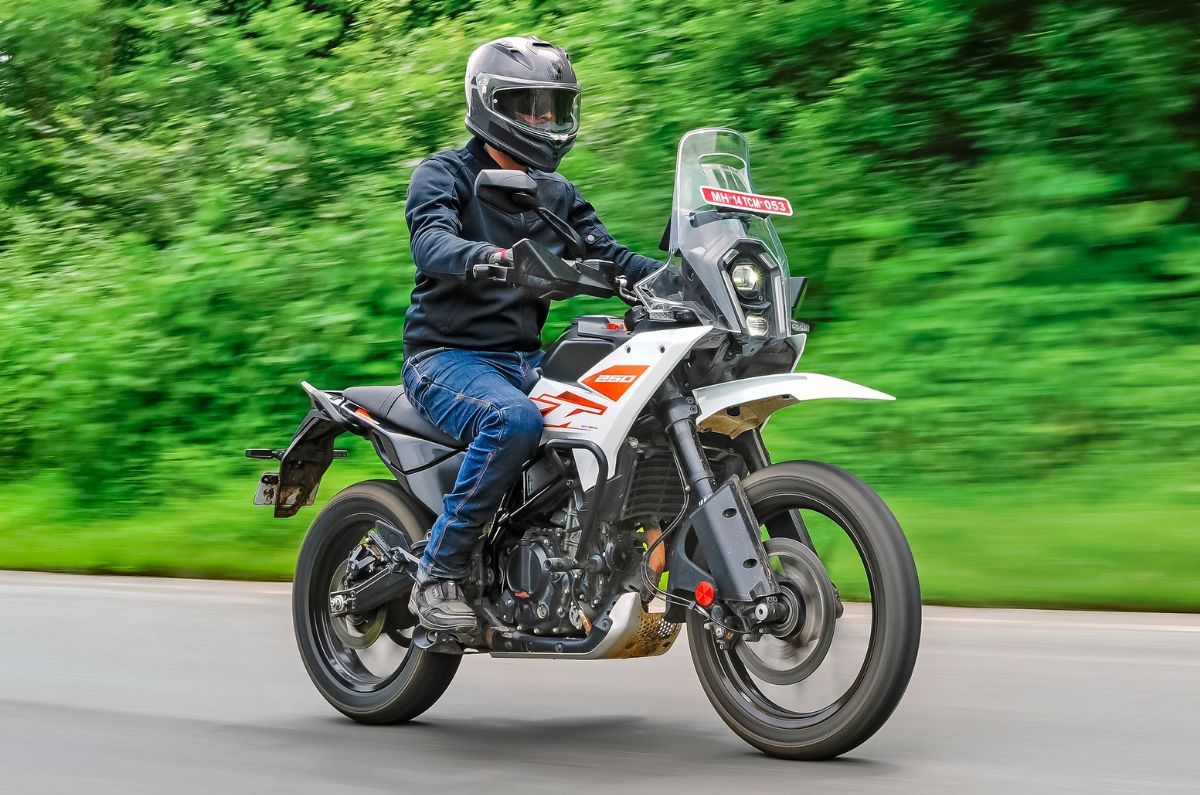
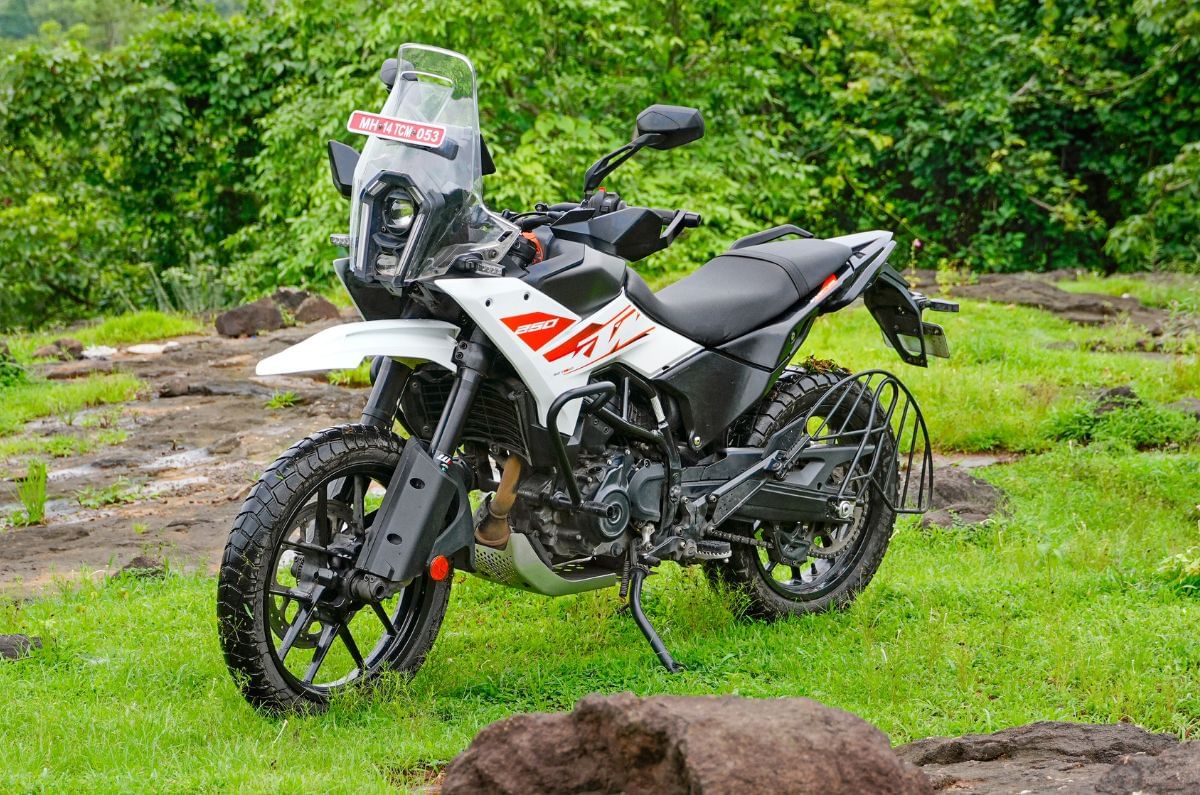
2025 KTM 250 Adventure video review
Also See:

Eurogrip Roadhound tyres review
Eurogrip’s Roadhound is a sport-touring radial aimed at middleweights and big bikes, with sizes ranging up to a 190/50 ZR17 rear. On paper, it has all the right buzzwords – steel belt, dual compounds, silica-rich tread – but the bigger question is how it feels once fitted and ridden in the real world? Well, I’ve spent the past 2,000km with these tyres on my Triumph Street Triple RS, and here’s what I’ve discovered.
This is my third set of tyres – I’ve used a pair of Metzeler Roadtec 01 and Michelin Road 5s before this. In terms of construction, the Roadhounds use a zero-degree steel belt that runs around the carcass to keep the profile stable at speed. It also incorporates a dual-compound build at the rear, which offers a harder centre for better longevity and softer shoulders for cornering grip. There’s also plenty of silica and a tread pattern designed for better water management.
The tyres perform a lot better once you get some heat into them.Out on mixed surfaces, the Roadhound tyres prove fairly competent once they’re warmed up. In the dry, grip levels are strong enough to push hard without feeling too vague at lean, and stability at highway speeds is reassuring. That said, on cold starts, the tyres do feel a little wooden, and under very hard braking, it lacks the ultimate bite you’d get from a top-shelf import like the Road 5. The wet performance is good with the grooves clearing water well, but there were occasions I saw my traction control light flash on cement roads.
This has got more to do with our poor roads than the outright grip levels of the tyres themselves. Nevertheless, I can confidently say the Roadhounds outperform the Roadtec 01 on a rainy day. Its longevity is something I am yet to discover, and Eurogrip claims these tyres should last you well over 10,000km. At around Rs 13,800 for the 180/55-ZR17 rear and Rs 10,600 for the 120/70-ZR17 front, it’s the most affordable set I’ve ever had on my motorcycle by a long shot. It may not dethrone the established names yet, but it doesn’t feel out of its depth either. It offers great value, respectable performance, and should be a great alternative for road use to most stock tyres in the middle-weight space.
Where: eurogriptyres.com
Price: Rs 24,400
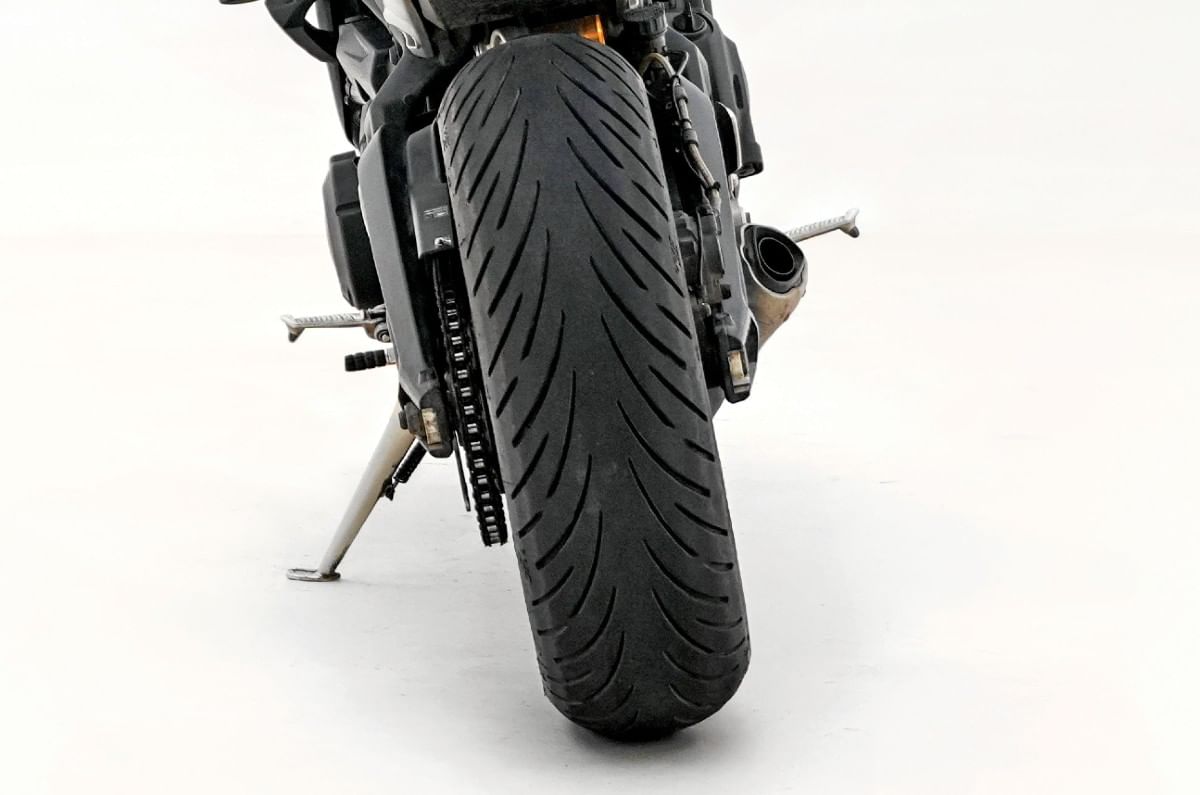
2025 Yezdi Adventure review: Added appeal
In its quest to take on giants like Royal Enfield and powerful brand names like Triumph and Harley, Classic Legends has to lean on a sense of uniqueness and out-of-the-box desirability with its products. The latest Yezdi Adventure takes a clear step in that direction.
Yezdi Adventure design and quality - 7/10 Funky new face helps it stand out; quality is improved but not up there with the bestAlmost everything that’s new lies in the Adventure’s new face, which adopts a curious asymmetrical headlamp design. The result is a motorcycle that gains some much-needed uniqueness and steps away from the shadow of the Himalayan 411. There’s also a small change at the rear with a new twin-pod tail-lamp design that I quite like. Other than that and some fresh colour schemes, the bike is the same as when it was last updated in 2024.
New face adds a big helping of individuality.What has steadily improved over time is the overall quality and finish of the materials used across Classic Legends’s motorcycles. Things like the smart-looking foot peg holders or the cleanly executed area around the handlebar mounts give the bike a pleasing sense of quality that was missing on early Classic Legends products.
With this redesign, it finally has some identity of its own.There is still room for improvement, and a previous complaint we’ve had with the logo on the fuel tank lid not being aligned continues into 2025 – as does the fact that this is not a hinged fuel-filler cap. Some may also want adjustable levers, and despite wearing XL-sized gloves, I felt like the reach to the brake lever was a bit too far.
Fuel-filler cap is not hinged and doesn’t align properly. Yezdi Adventure weight and manageability - 7/10 This is a heavy bike, but the low seat will be helpful for shorter ridersThe Yezdi Adventure is a large-looking bike, with its tubular cage at the sides of the fuel tank and especially with the optional saddle stays on our bike. The new windscreen takes liberal, erm, “inspiration” from the Ducati DesertX, not just in the shape but also in the black circular dot design detailing.
The LED tail-lamp design is new as well.That said, this is not only a big-looking bike; it’s also a heavy one. While Classic Legends lists the weight at 187kg on its website, that figure is a bit misleading, as it doesn’t state that it excludes the weight of fuel and the metal cage around the tank.
Weight and dimensionsSeat height815mmKerb weight187kg (without fuel and metal cage around tank)Fuel tank capacity15.5 litresWheelbase1465mmFactor both in, and you’re looking at a kerb weight of around 200kg, which makes this bike heavier than a Himalayan 450. To its credit, it doesn’t feel that way and certainly isn’t as top-heavy, especially when lifting it off the side stand.
While this Yezdi is a heavy bike, it doesn’t feel top-heavy.Part of what makes it approachable is the relatively low 815mm seat height, which is quite nice for a bike like this. However, the seat-to-foot peg ratio is a bit too tight for comfort over longer durations, especially for taller riders, who are usually the type of folks that buy bikes like this. Lower and more forward-set foot pegs would match the character of the Yezdi Adventure well.
Yezdi Adventure ride and handling - 7/10 Same new 334cc engine as other Yezdi/Jawa bikes is a big step upThe Adventure benefits from the same engine updates seen in the Jawa 42 FJ, which means you get a smooth, refined and crisply responding engine. The gearing is on the short end, and it can comfortably hold up to about 90kph – speeds above that do have the engine at quite high rpms.
Engine and outputEngine334cc, single-cylinder, liquid-cooledPower29.6hp at 8,000rpmTorque 29.6Nm at 5,800rpmGearbox6-speedTractability and fuelling at lower speeds are very good, and the engine is good to use within the city without excess heat being thrown at the rider.
The Adventure now uses the same 334cc engine as the 42 FJ.The long-travel suspension also feels soft and plush at lower speeds, which makes the Adventure a pleasure over Mumbai’s incessantly bumpy roads.
Suspension, tyres and brakesSuspension (F/R)Telescopic fork / MonoshockTyres (F/R)90/90-21 / 130/80-17Brakes (F/R)320mm disc / 240mm discHowever, if you ask too much of it at higher speeds, the rear suspension does feel a little underdamped, and that results in a tendency to pogo. It’s not bad at all but noticeable when compared to things like the new Xpulse 210 or Himalayan 450, both of which feel more composed in their suspension movements.
Its suspension doesn’t have the composure of some other rivals.It’s a similar story off-road as well, and there’s plenty of fun to be had in exploring an unknown trail, but it’s best done at a more relaxed pace. There are three riding modes, one of which deactivates the rear ABS for off-road riding. There’s also switchable traction control, and the company has done well to ensure that it doesn’t feel intrusive on the road. Braking performance is adequate, but with a dull feel at the front end.
Yezdi Adventure price and verdict - 8/10 It finds a unique middle ground in the ADV spaceNothing significant has changed regarding how the Yezdi Adventure rides in 2025, and at Rs 2.22 lakh ex-showroom for this Tornado Black colour, it continues to sit in a unique middle ground in the Indian ADV market.
PricePrice (ex-showroom, Delhi)Rs 2.22 lakhOn the other hand, the updated design does give the bike an additional shot of appeal, which will make it all the more tempting for those who like standing out from the crowd.

TVS Apache RTX 300 video review

TVS Apache RTX 300 review: ADV done right?
Adventure bikes are all the rage these days, and nearly every mainstream two-wheeler company has at least one ADV in its line-up. TVS has taken its own sweet time to join the fray with its long-awaited Apache RTX 300, but the company has studied the market properly before releasing its debut offering.
TVS Apache RTX 300 design and quality - 9/10 Has a large and substantial feel to it with great qualityLike most ADVs, the Apache RTX prioritises function over form, but even so, this is still a handsome and proportionate design. The striking headlights, wide tank, tall screen, spacious split seats and overall proportions make the RTX seem like a bigger bike than it is, accentuating the sense of space that you get.
The RTX is a large machine, and its design puts function over form.While the RTX’s bodywork is all new, its tail-light housing bears more than a passing resemblance to that of the Triumph Tiger 900.
Its tail-light design is a little too reminiscent of the Triumph Tiger.Typical of TVS, quality is at an impressively high level (especially for the price), and fit and finish leave very little to complain about. In fact, they’re better than on some rivals that cost over a lakh more.
TVS Apache RTX 300 Riding position and comfort - 9/10 Commanding riding position and plush suspension keep you cossettedWith their function-over-form design approach, ADVs aren’t the prettiest of motorcycles, but their USP is the ability to keep you comfortable no matter what the road throws your way. Our 100km riding loop around Fagu in Shimla was littered with huge potholes, some areas had no roads at all, and the RTX, with its beautifully absorptive – yet composed – suspension, made light work of them, keeping me comfortable throughout. The best part was that there was no need to stand through these sections, and you could sit and ride through in good comfort.
Its riding position is spacious, and taller riders will be quite comfortable.What also enhances comfort is the RTX’s commanding yet neutral rider’s triangle. The wide handlebar gives you loads of leverage, its tall 835mm perch gives you a good view of the road ahead – although some rivals offer lower seats, if that’s important to you – and the neutral placement of the footpegs will ensure your legs don’t get cramped after long hours in the saddle.
Seats are well-padded and will keep both rider and passenger comfortable over longer journeys.If there’s one tiny thing I can fault the RTX for here, it’s that the footpegs foul with my shins when I put my feet down, and you have to be mindful of this when coming to a stop.
Weight and dimensionsKerb Weight180kgGround Clearance200mmSeat Height835mmFuel Tank Capacity12.5 litresWheelbase1430mm TVS Apache RTX 300 Performance and refinement - 8/10 New 299cc engine is smooth and tractable, but it has some fueling issuesTVS’ brand-new 36hp/28.5Nm 299cc engine makes its debut here, and you get the feeling that a lot of the feedback regarding the older 312cc engine has been baked in here, especially when it comes to refinement. From the first crank, it’s clearly evident that this motor is far smoother than the older 312cc unit, and it has a brappier exhaust note too.
Engine and outputEngine299.1cc, single-cylinder, liquid-cooledPower36hp at 9,000rpmTorque28.5Nm at 7,000rpmGearbox 6-speedIn our time with the RTX, we were mostly riding on tight and narrow roads, shuffling between 2nd and 4th gears and were only able to touch 80kph for a few moments before slowing down, so the motor’s refinement at fast highway speeds is still a question mark.
The new 300cc engine is tractable and feels much more refined than the older 312cc mill.Over outright performance, across the sort of terrain we rode on, what really impressed was the tractability of this motor. You can hold 20kph in 3rd gear without protest, and once you twist the accelerator, the RTX builds speed in a linear fashion. Of course, this is still a relatively small single-cylinder engine, with peak power coming in at 9,000rpm, so to make quick progress, you’ll need to drop a gear or two to keep the revs high. The gearbox is precise, and shifts don’t need a lot of effort – especially when using the smooth bidirectional quickshifter.
The engine’s tractability was a helpful factor during the off-road section.The one issue multiple riders faced on the ride was inconsistent fuelling during gear changes. What would happen was that the bike would occasionally lose power just after you’ve upshifted and opened the accelerator for a second or two, feeling like it’s bogging down, before the engine would resume power delivery. This happened only a handful of times, but the inconsistent fuelling took away from the otherwise well-rounded experience, and TVS has some work to do here.
TVS Apache RTX 300 fuel efficiency and range - 7/10 12.5L fuel tank, one of the smallest in classConsidering its 300cc displacement, the RTX’s engine should return decent fuel economy, although we haven’t yet had a chance to test it. Most ADVs in this category have 15 litres or so of fuel carrying capacity, so the RTX’s 12.5L tank is nearly 20 percent smaller than some rivals. Even so, with some sensible riding, covering 250-300km on a single tankful should be fairly doable.
TVS Apache RTX 300 Ride comfort and handling - 9/10 Has great suspension comfort and feels well-balancedMore than the new engine, more than all the tech and gizmos onboard, what left the most lasting impression on my mind about the RTX is its well-balanced chassis. Underpinning it is a steel trellis frame and a detachable subframe – similar to the RTR and RR 310, but this is an all-new one created specifically for the RTX. As a road-touring machine, it feels stable yet agile enough when you need to make quick direction changes. Pair that with wonderfully absorptive suspension and spacious seating, and you’ve got a machine that will coax both you and your passenger into planning more long trips!
There’s no need to stand up off-road because the suspension tuning is spot on.Happily, this high level of comfort doesn’t come at the expense of handling, partly down to the fat tyres (for the class). The RTX has a 110 section up front and a 150 section hoop out back, developed by Eurogrip, and these tyres felt confidence-inspiring no matter what terrain we encountered – save for some slush during off-roading, but given their road-biased nature, we won’t hold it against them.
Suspension, tyres and brakesTyres (F/R)110/80-19 / 150/70-17Suspension (F/R)USD fork / MonoshockWheel travel (F/R)180mm / 180mmBrakes (F/R)320mm / 240mmNow I must confess at this point that I was very much not looking forward to the off-road section of this ride – not because I don’t believe this machine was created to do serious dirt riding, but mostly because I’m a very novice off-road rider. However, as we made our way through everything from rough and rocky roads, packed dirt and gravelly trails to sharp and steep uphill turns, and even some fairly tricky slush, the RTX never once put a foot wrong, even with my somewhat bumbling inputs. The standing-up ergonomics aren’t the best because there’s not much to anchor your legs to, so what I resorted to was to tackle just about everything while seated, and the bike behaved just fine.
It’s so well balanced that even under 5kph, I didn’t have to put my feet down, the clutch is not heavy, the engine feels tractable, but it’s not overly powerful initially – all factors which will only give budding off-road riders like myself the confidence to go further without feeling like they’re overwhelmed – an absolutely wonderful feeling on a bike in this class!
The RTX is more than willing to venture off the beaten path.One thing to note is that instead of the usual suppliers for most Indian bikes like Bybre / Endurance / Gabriel / Grimeca, the RTX’s brakes come from a Chinese brand called Hengte, albeit they are made entirely in India. Interestingly, this brand has been used on various Apache models for many years. Braking performance is good, and while the initial bite is designed to be a little dull and friendly off-road, there is good feedback and progression through the lever once you put a little force into it. ABS intervention is quite nice, and we didn’t encounter any moments where the system intervened overly intrusively.
Brakes have good power and modulation; ABS can be turned off at the rear. TVS Apache RTX 300 Features and safety - 9/10 Has great features for the class; cruise control standard across all variantsThese days, nearly every new two-wheeler seems to be packed to the gills with technology, and most of it seems more like a gimmick to spruce up the brochure more than actually helpful additions. I’m happy to report that the TVS has not gone overboard in the amount of tech it has baked into the RTX, but it has all the necessities covered.
The TFT dash is well laid out and has screen mirroring on the top two variants.Even the base model is well-equipped with the TFT display, traction control and riding modes. There are 4 riding modes (Rally, Tour, Urban and Rain), traction control (on or off only), and dual-channel ABS (rear can be deactivated). The crisp 5-inch TFT and tactile (if a little overcrowded on the LH side) switchgear are both lifted straight off the RTR 310.
Just like the new Himalayan 450, the RTX’s TFT allows you to mirror Google Maps navigation information on the screen, just like the RE, TVS’ system needs you to keep your mobile screen on at all times, which is down to restrictions from Google’s end, and there’s nothing TVS can do about it. Thankfully, there’s a USB charger (with both type-A and type-C ports) on the handlebar – small mercies, I suppose!
Except for screen mirroring, all of this is standard on the Base variant, and the Top variant adds in the lovely bidirectional quickshifter, a more powerful headlight and the top box mount, among other things. You then step up to the BTO variant, which adds in some damping adjustability for the suspension, a tyre pressure monitor and a brass-coated chain. In our opinion, the middle variant is the one to buy because, for the majority of riders out there, you’ll have everything you’ll ever need.
TVS Apache RTX 300 Price and verdict - 9/10 Disruptive pricing, and it’s a well-rounded packageSo far, in the premium category, TVS is yet to taste widespread success right off the bat, and we think the Apache RTX 300 is its best shot yet of doing so.
Price (introductory, ex-showroom, Bengaluru)BaseRs 1.99 lakhTopRs 2.14 lakhBTORs 2.29 lakhWith prices ranging between Rs 1.99 lakh and Rs 2.29 lakh (ex-showroom, Bengaluru), the RTX represents fantastic value for money for the performance, componentry and features it gives.
The RTX is a very well-rounded package; aggressive pricing is the cherry on top.That said, there’s still room for improvement – that aforementioned fuelling issue being the main thing that TVS needs to work on. However, as a package, the RTX does so many things so well, and it manages to do so while costing significantly less than not only its direct rival, the Rs 2.40 lakh KTM 250 Adventure, but also motorcycles from a segment below, including the likes of the Royal Enfield Scram 440 (Rs 2.23 lakh-Rs 2.31 lakh). Stepping into the world of adventure riding has never been more appealing.

2025 Royal Enfield Meteor 350 video review

2025 Royal Enfield Meteor 350 review: Small updates, better to ride
The new Meteor 350 is the second 350cc RE after the Hunter to get an update for 2025. It's a relatively small update with mostly feature and convenience upgrades, but there is one change that has made an appreciable improvement to the riding experience.
Royal Enfield Meteor 350 Whats new - 8/10 Small feature updates that improve the riding experienceAs far as equipment goes, the Tripper navigation display is now standard across all variants. This is a small circular TFT display that shows arrow based navigation assists when connected via the RE app and it's a nice thing to have.
The slip/assist clutch reduces lever effort greatly.
The LED headlamp is also now standard across the range and RE has upgraded the previous charging port to a type C unit. If you go for the Supernova or Aurora variants, you’ll also get adjustable levers, but what is the most relevant upgrade is that there’s now a slip/assist type clutch.
LED headlight now standard on all variants, LED indicators only on top two.
Interestingly, there is actually one less feature on this 2025 model and that’s the fact that it no longer has a gear position indicator. This is because RE has not equipped this bike (and other J series 350cc models) with the sensor that enables that function to work. We understand that this is due to rare-earth related supply issues.
Gear position indicator temporarily unavailable on 350cc REs due to rare earth minerals shortage.Fortunately, this is a short term thing and RE says that it will equip all customer bikes (that have been sold without the sensor) with the required component once stock levels stabilize.
Royal Enfield Meteor 350 City Riding - 9/10 One noticeable improvement for 2025First seen on the new Hunter 350, this addition makes a big reduction in the required clutch lever effort and it also smooths out downshifts. Feathering the clutch in heavy traffic jams is no longer a tiring affair and RE has achieved this improvement without making sacrifices in clutch feel. It's a seemingly small thing but it really has improved the riding experience because the heavy clutch was one of the few complaints we had with the previous Meteor 350.
The Meteor's riding experience is largely the same but that's a great thing!Beyond that, the riding experience is largely the same, which makes sense because nothing mechanical has changed. That includes the chassis, suspension set-up, brakes, rather high 191kg kerb weight and rather low 765mm seat height.
The Meteor's front brake feels quite dull. Royal Enfield Meteor 350 Performance and Handling - 8/10 The same riding experience as beforeThe star of the show continues to be the slow revving, gently thumpy 349cc engine that has deliciously smooth fueling and a wonderful low-end wave of torque. It does its absolute best at city speeds, but can also be a pleasure to ride on longer rides - as long as you have no need for speed. The Meteor is at its purring best at about 70-80kph although it can hold 90-100kph without any harsh vibrations or unhappiness. Top speed comes at around an indicated 120kph.
The smooth and thumpy 349cc, long-stroke single is the highlight of the riding experience.The twin downtube chassis and 19-inch front wheel offer reassuring stability, but with an enjoyable sense of nimbleness in traffic. The feet-forward riding position is also unchanged, as is the suspension’s ability to absorb more of the road than you’d expect from a bike like this. That being said, with this kind of a riding position comfort predictably isn’t as good as a Classic 350 or Bullet 350. Braking continues to be dull at the front, but effective when used in conjunction with the rear and dual channel ABS keeps things safe
Royal Enfield Meteor 350 Price and verdict - 9/10 Reasonably priced and one of the best bikes of its type for Indian roadsThe new 2025 RE Meteor range is priced between Rs 1.95 lakh and Rs 2.15 lakh rupees depending on what variant and colour you pick. Just like before, it remains one of the nicest bikes of its kind in the Indian market, and this latest update helps keep the appeal going.
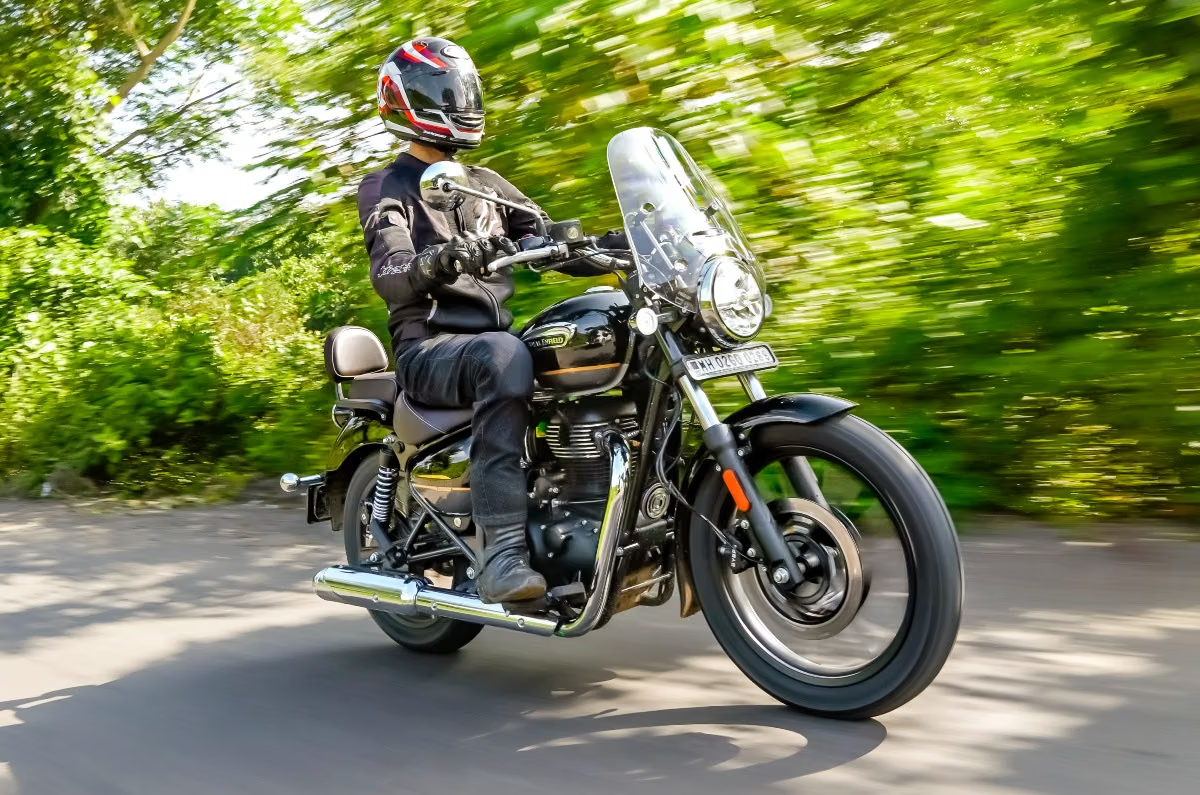
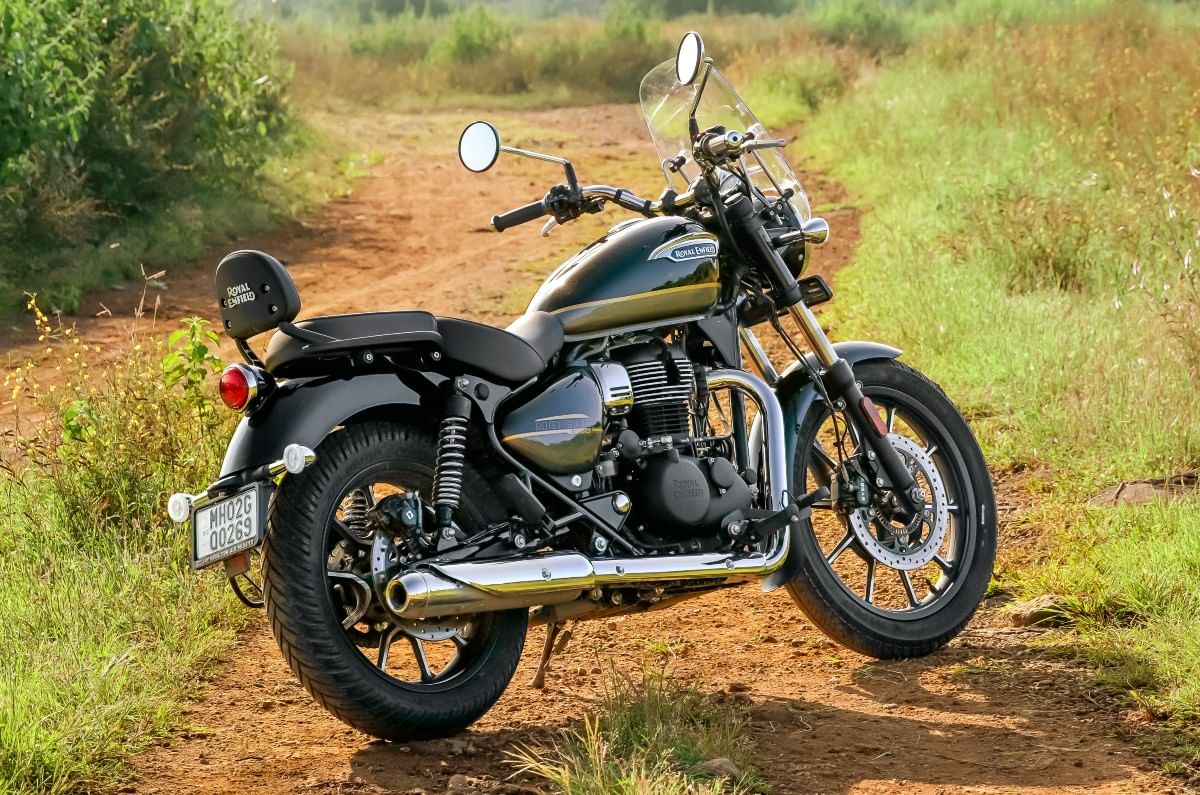
BMW F 900 GS video review

Car and Bike news, reviews and videos.
2026 Porsche 911 Turbo S video review

2025 Mahindra Thar Roxx long term review, 16,000km report
When the Mahindra Thar Roxx joined our long-term fleet, we already knew it would be brilliant off-road. However, I was keen to see if it could handle mundane chores too. So, when shifting my son to his new college in Pune (from Mumbai), I picked the Thar, even though we have more conventional SUVs in our fleet, including two Cretas. Besides, I thought the super-smooth and powerful diesel would be fun on the highway, but in some ways, it wasn’t.
Excellent backlighting on centre console, including USB ports lower down.Sure, it was quick, responsive and very refined, so that bit I really enjoyed. But the Mumbai-Pune Expressway has a 100kph limit, and keeping the Thar below that requires very light throttle pressure, and having to do this consciously is a pain. A less peppy setting would also help efficiency, which indicated 11.8kpl on the trip meter – good for a hardcore off-roader carrying around heavy 4X4 hardware, but not impressive for a midsize diesel SUV.
Wheel arch gap sends muddy water flying right up to the door handles.Other bits that weren’t impressive on the trip were the wipers, which do not leave a clean view, and the vertical windscreen, which does not let water flow off easily; droplets seem to be pressed onto the glass. There are other monsoon-related issues. The spare wheel-mounted rear-view camera gets dirty easily, and the gap between the front wheel arch and running board sends muddy water flying onto the doors, right up to the handles.
The suspension is a mixed bag; a firm setup means small bumps do not compress the springs, so the body moves about a whole lot, which was a pain while getting out of the city. Come large potholes, though – of which there were a few on the highway – and you don’t have to try and avoid them; the Thar just clobbers them.
Harman/Kardon sound system rivals those found in some luxury vehicles.The Harman/Kardon music system was brilliant to have on this trip. It not only rivals but also surpasses many other premium-branded systems.
At 447 litres, boot space is good. There’s more height than depth, but it’s deep enough to accommodate a check-in bag lying down. Plus, it took in three boxes, a large duffle bag, a backpack and a rolled-up mattress.
Door pockets are seriously tiny and cannot take even a small water bottle.All in all, against other off-road rivals and even its three-door sibling, it’s a lot more liveable. It does a good job of masking or alleviating some of the rough edges, but it’s not the first car you should pick for a highway run with your family or use as a daily driver. Unless you really do love off-roading and the super-cool image that the Thar brings.
2025 Mahindra Thar Roxx 4WD Diesel AT AX7L test dataOdometer16,112kmPriceRs 23.39 lakh (ex-showroom, Mumbai)Economy11.8kpl (this trip)Maintenance costNonePrevious reportAugust 2025
2025 Skoda Slavia Monte Carlo long term review, 10,000km report
Back in the Skoda Slavia after a bit. While this blood red Monte Carlo with the 1.5 TSI is mechanically identical, getting behind the wheel again is just such a pleasure. What draws my attention is just how much better the cabin feels compared to other popular midsize SUVs I’ve been driving recently.
Door shut, build quality, the solid manner in which things function just make you feel good about being in this car.Take the feel of the leather on the steering wheel, the chrome pedals, the build of the part-leather part-chrome automatic gear selector, the light and slick manner in which it engages, the solid build of the door pads, the very comfortable but supportive seats; all this blends together to deliver a great experience.
Sure, the Slavia may not be built like an Octavia – especially some of the plastic bits on the dash; this one even has a few creaks from the door beadings – but that apart, I quickly appreciate the extra care that has been taken when it comes to the selection of materials in the interior. Then there’s the solid tree trunk-like door shut.
Engine feels strained when revved hard, takes away some pleasure associated with driving it hard.What’s also an absolute pleasure is opening up the 1.5 TSI engine on elevated sections of Mumbai’s new intra-city highway network. The engine seems noisier than I remember, especially at higher revs, and there’s a fair amount of stretch and strain. Still, once the additional power comes flooding in, the Slavia really begins motoring; with the sea on one side and downtown metropolitan Mumbai on the other, I can’t help but grin as I guide it along.
While the touchscreen is wide, nice and sharp, the reverse camera’s feed on the display is smaller.Another reason why I like this car so much is the high-quality audio system and hands-free phone connection. The subwoofer-equipped audio system has a fair amount of punch and clarity, which means the Slavia entertains even when standing still.
I also really like the way this Monte Carlo version looks, especially in this scarlet and black theme with that hint of a rear spoiler and the faux diffuser in black. Created to celebrate Skoda’s 11 class wins at the Monte Carlo Rally, it sure gets more than its fair share of attention.
E20 petrol may have contributed to an increase in the Slavia's fuel consumption.What I did notice during the time I had the car was that the Slavia was consuming quite a bit more fuel than earlier. Sure, I did use a lot more of the performance bit, but just how much was down to my driving style and how much was down to the E20 petrol? Will investigate further and get back.
2025 Skoda Slavia Monte Carlo 1.5 TSI DSG test dataOdometer10,082kmPriceRs 17.69 lakh (ex-showroom, Mumbai)Economy11.3kplMaintenance costNilPrevious reportsApril 2025, June 2025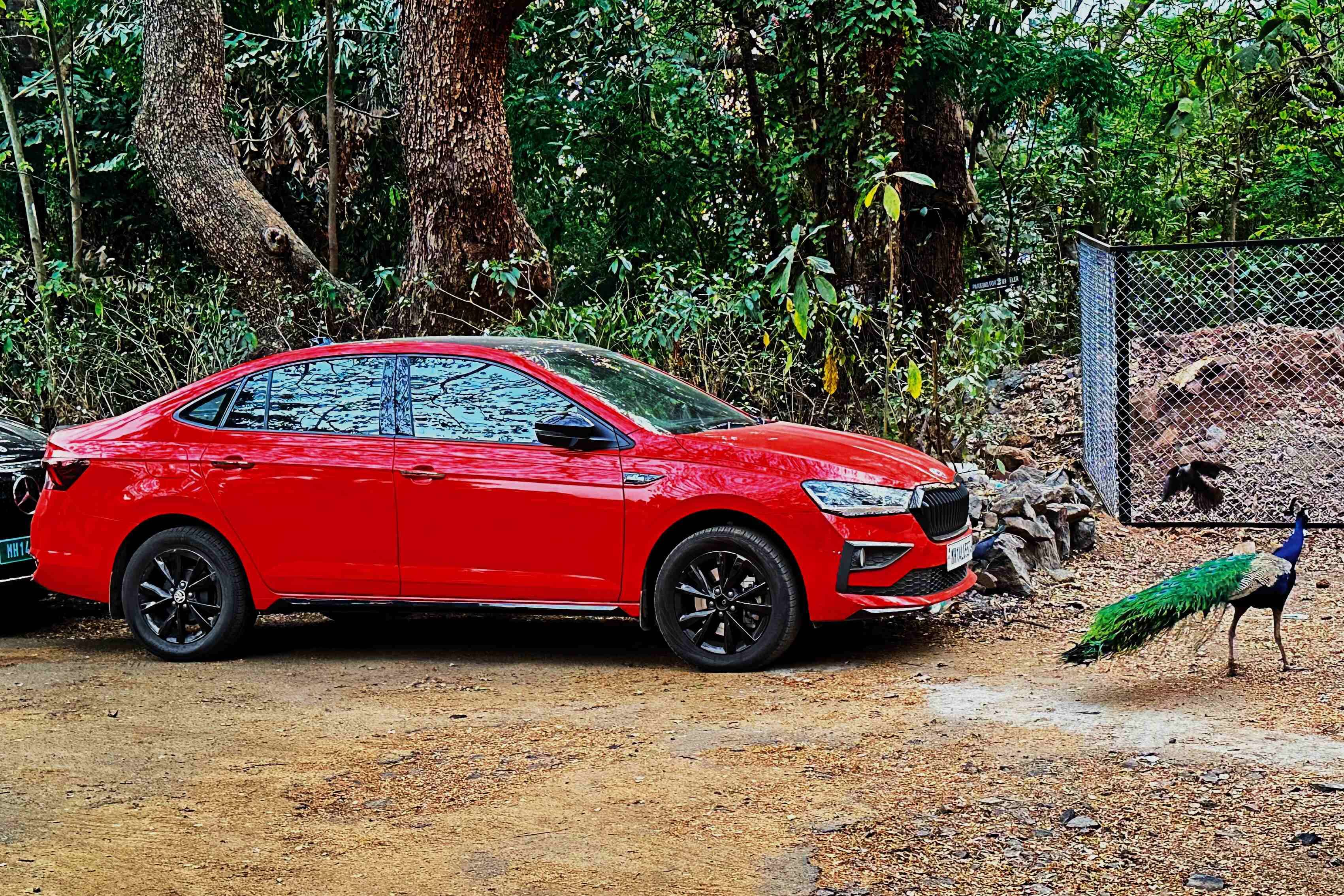
Ferrari 296 Speciale video review

Ferrari 296 Speciale review: Special Effects
Each time Ferrari launches a new model, you can be assured that a more focused, no-holds-barred version will follow. It started with the 360 Modena, which was followed by the 360 Challenge Stradale, then the F430 got the F430 Scuderia, the 458 Italia with the 458 Speciale, and the 488 GTB with the 488 Pista. For the 296 GTB, this would be a tall order. However, when Ferrari actually managed to make a wilder version of the mid-engined supercar, it was so impressive that even they couldn’t think of a suffix better than what it simply was – Speciale.
Ferrari 296 Speciale Exterior Design and Engineering: 10/10 Heavily updated bodywork gives priority to aero but doesn’t compromise looks.Much of the performance gain in the 296 Speciale is owed to tweaks in design and aerodynamics. Every panel above and below the car has been optimised to help it cut through the air as efficiently as possible. The presentation for aerodynamic changes was a lecture in rocket science, with terms like vortex generators and wing profile geometry passing over the head just as smoothly as air over the Speciale.
New bonnet scoop helps channel air from under the car and over the roof.Up front, a notable addition is the aero-damper – a large scoop in the bonnet that channels air from under the car and helps it pass over the roof without disturbance. Beside it are three louvres on each side that relieve pressure from the wheel well and guide air around the car without disrupting the side intakes. Ducts by the headlamps also pass air directly to the brakes for better cooling.
The bumper is wider and lower, with larger air intakes, and the tea-tray seen on the 296 GTB/GTS has been replaced by a LaFerrari-like floating lip. The bumper ends have vents and winglets designed to guide air around the front wheels, eliminating drag. The result is significantly better front-end grip.
From the side, the ride height is lower, the 20-inch wheels can be had in full carbon to save weight, and the side intakes near the rear wheels help air pass cleanly over and around them.
Despite a function-fist approach, great effort also went into form.The rear is crucially different too, thanks to the ‘Gamma wings’ at each corner, which aid downforce. Derived from the race-bred 296 Challenge, these small winglets have a profound effect on airflow, especially when working in tandem with the active spoiler tucked beneath the centre panel. The spoiler now features faster actuators for quicker response and an intermediate setting to balance drag and downforce. On high-speed straights, it stays tucked away and immediately deploys under braking to improve stability.
Ferrari’s aerodynamicists insist that while these tweaks serve function first, great effort also went into form. The engineers went through three different designs, ultimately choosing one that balanced both performance and beauty. Even the unseen underside was carefully optimised – vents and ducts ensure smooth airflow from nose to diffuser.
New ‘Gamma wings’ at the rear are derived from the race-bred 296 Challenge.The hero paint shade, ‘Verde Nurburgring’, a deep metallic green, perfectly complements the car’s stance. If it’s not for you, Ferrari’s catalogue allows endless customisation – from colours to stripes. While Ferraris in red strike a traditional chord, this shade is a sight for sore eyes.
Ferrari 296 Speciale Interior Space and Comfort: 9/10 20kg saved inside; extensive use of carbon fibre and Alcantara.In the past, hardcore, track-focused Ferraris had cabins designed more for circuits than streets. The 296 Speciale, while stripped of some luxuries, doesn’t feel bare. Carpets are gone, tan leather makes way for Alcantara and carbon fibre, and the comfy ‘GT’ seats are replaced by focused carbon buckets with four-point harnesses.
The door panels are carved from a single piece of carbon fibre that flows seamlessly into the dashboard. Yet, you still get automatic climate control, Apple CarPlay, a passenger display, and ADAS features.
Interior is stripped of some luxuries, but isn't entirely bare.The seats offer recline and reach adjustment, allowing drivers to find the ideal position. While the four-point harness is great for track days, the conventional three-point seat belt is more practical for road use.
Storage includes a small net behind the seats for loose items and a 169-litre frunk – enough for medium soft bags or an overnight suitcase.
Ferrari 296 Speciale features and equipment: 9/10 Despite adding lightness, few features are missing.Most digital functions are part of the instrument cluster, with steering-mounted controls. Though it may feel overwhelming at first, the layout soon becomes intuitive. A welcome change is the return of physical buttons and switches on the steering wheel, replacing the GTB’s touch-sensitive panels.
Instrument cluster is where most digital functions are housed.The carbon-fibre steering wheel can be equipped with shift lights, and the long paddle shifters are a joy to use. The Manettino adjusts traction and suspension (with optional MagnaRide dampers), while the e-Manettino switches drive modes between ‘Qualifying’, ‘Performance’, ‘Hybrid’ and ‘eDrive’.
Ferrari 296 Speciale Performance and Refinement: 10/10 Absurdly fast on track, surprisingly usable on road.We sampled the 296 Speciale in two forms – at Fiorano with passive dampers and on public roads with MagnaRide.
At ignition, the revised exhaust note stands out immediately. The titanium end section sheds 2kg and adds richness to the sound, while redesigned acoustic ducts channel natural engine noise into the cabin – no digital augmentation here.
Qualifying mode unlocks full 880hp from engine and battery combined.The bassy growl at low revs turns feral past 6,000rpm. On track, the preferred ‘Qualifying’ mode unlocks full power from both the engine and the 7.45kWh battery. The 3.0-litre twin-turbo V6 alone produces 700hp and 755Nm, while the electric motor adds another 180hp, filling every torque gap.
Power delivery is instant and uninterrupted, aided by improved cooling for the e-motor and increased turbo boost. The new ‘Extra Boost’ function, exclusive to Qualifying mode, gives an additional electric shove past 6,000rpm – perfect for fast corner exits.
The 8-speed F1 DCT is lightning quick, with Ferrari even allowing battery power to assist during upshifts to eliminate lag entirely.
In ‘Performance’ mode, it feels civilised but remains immensely potent.Acceleration is staggering – 0-100kph in 2.8 seconds and 0-200kph in just 7.0 seconds. It laps Fiorano in 1 minute 19 seconds – identical to the all-wheel-drive SF90 Stradale.
Yet, 60 percent of development reportedly took place on public roads. In ‘Performance’ mode, the car feels more civilised but remains immensely potent. The ‘Hybrid’ mode manages charge through regenerative braking, while full-electric ‘eDrive’ mode offers quiet operation for short commutes.
Thanks to the exhaust tuning, the engine’s presence is always felt – literally right behind your head.
Ferrari 296 Speciale Mileage: 9/10 Plug-in hybrid gives a claimed 25 km electric-only range.For what it’s worth, the 296 Speciale has an edge in efficiency. Ferrari claims 25km of electric-only range – a figure that proved realistic during our test. Don’t want to wake the neighbours or waste high-octane fuel in traffic? The eDrive mode is your saviour. On engine power alone, expect between 4-5kpl, depending on how heavy your right foot is.
Ferrari 296 Speciale Ride and Handling: 9/10 Optional MagnaRide suspension softens bumps; nose-lift available.On track with passive dampers, the firm setup delivers. There’s no flex, and through chicanes and bends, the Speciale stays flat and composed. Titanium springs shed weight, improving agility – a major feat given how sharp the standard car already was.
Steering is precise, offering superb feedback and accuracy.The steering is even more precise – aided by aerodynamic grip up front – offering superb feedback and accuracy.
On the road, MagnaRide dampers soften impact. While firm overall, the ride isn’t bone-jarringly harsh like a Porsche 911 GT3 RS. In comfort-oriented modes, the steering becomes lighter and more fluid, making city drives surprisingly manageable.
On-road ride is firm but not bone-jarringly harsh.A ‘Bumpy Road’ mode is accessible via the Manettino, and the optional nose-lift function raises the front by 15mm – essential for Indian roads given the low stance.
Ferrari 296 Speciale Price and Verdict: 9/10 No production limit, but exclusivity remains; India launch in late 2026.With the 296 Speciale, Ferrari targets purists who value driving dynamics and occasionally hit the track. The coupe arrives in India in late 2026, followed by the Aperta six months later.
It won’t be limited by a strict production cap, but it will be rarer than the standard models. Expect pricing around Rs 6.5 crore (ex-showroom, India), before options.
296 Speciale will launch in India by late 2026.The GTB and GTS are already brilliant, but the Speciale adds that extra layer of magic – sharper, louder and more emotional. For those lucky enough to secure an allocation, it truly will make you feel special from the moment you start it up.
Also See:
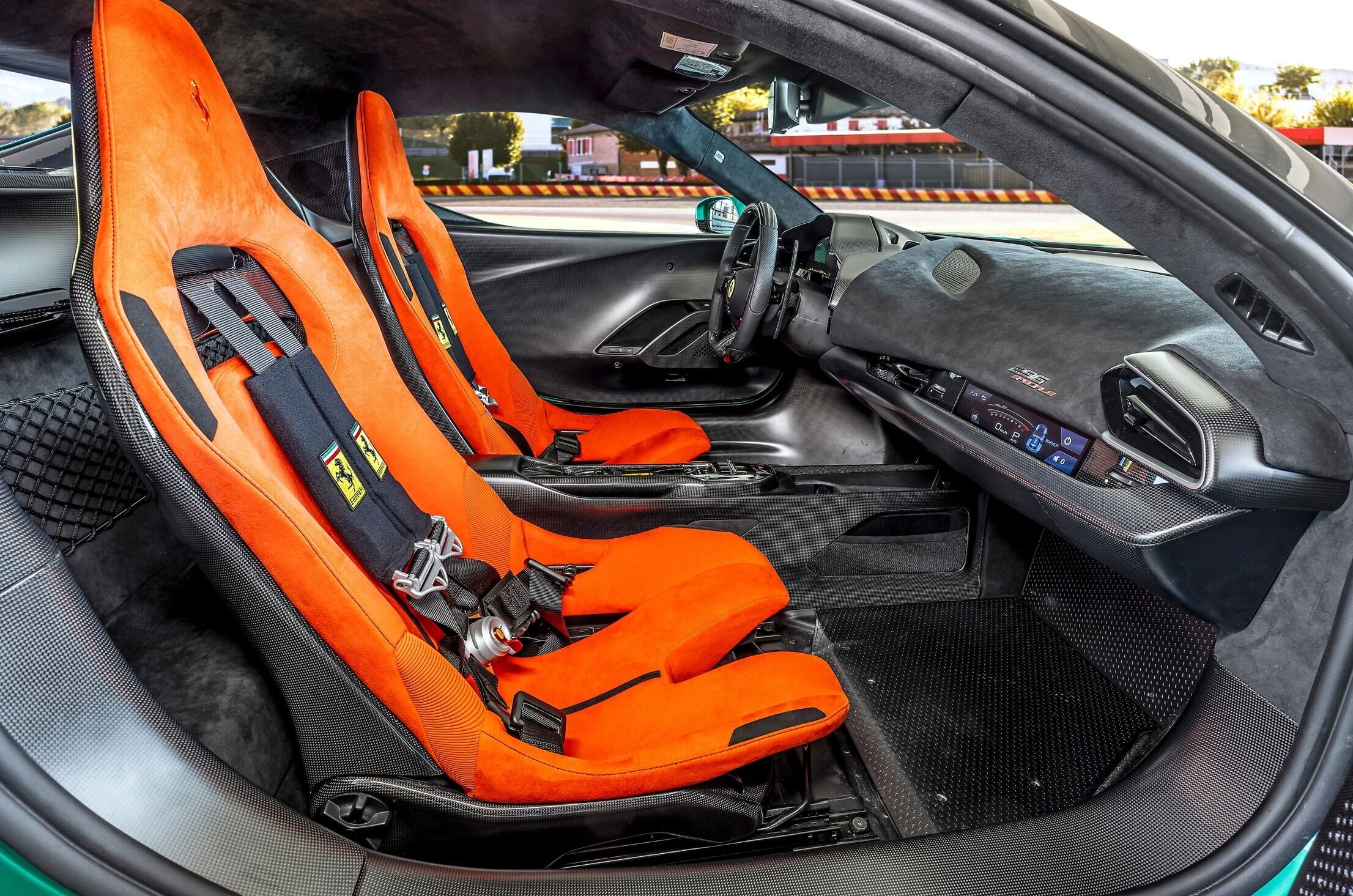
Mini JCW Countryman All4 video review

2025 Maserati MCPura review: Pure for sure
Maserati is a brand whose pulse I’ve never quite been able to put my finger on. On the surface, the usual words spring to mind – beautiful, exotic, emotional, luxurious and oh so Italian – but beyond that, I’ve never quite been able to focus it down. A lot of cars embody these same qualities, but Maserati seems to want to do it all – sportscars, sedans, SUVs, convertibles, grand tourers, EVs; the lot. And for a relatively small, low-volume carmaker, that’s a tall order.
But as I whack the throttle wide open on an uphill stretch, air gushes past my ears and into the engine, going from whoosh, to rumble, to roar, to wastegate whistle. The rear end breaks away momentarily, then steps back into line, and I collect myself as I stomp down on the brake pedal before delicately but precisely pointing the nose into the next corner.
Purity. Simplicity. Clarity – new qualifiers flood my brain as I realise this is exactly what Maserati needed. A guiding light to shape the rest of the model range in its image, and one that didn’t have to be constrained by considerations of space, practicality or refinement. It also became apparent why they changed its name from MC20 with the facelift; it should have been this car’s mission statement from day one. MCPura – Maserati at its purest.
Maserati MCPura exterior design & engineering – 9/10 Masterwork of classic supercar design, with dramatic doors and stunning colours.To even call this a facelift would be an overstatement, because never before has there been a stronger case for ‘if it ain’t broke, don’t fix it’. For all but the most discerning of Maserati fans, this is still the MC20, albeit sharpened up in places with elements from the racier GT2 Stradale.
Proportions are classic supercar – low, wide, long and curvaceous.Like before, it uses a ‘split’ design philosophy – the smooth, painted top half representing sculpture and elegance, while the chiselled, blacked-out lower half represents mechanicals and aerodynamics. While other sportscar makers are turning to science fiction for inspiration, Maserati keeps it real with classic supercar proportions – low, wide, long and curvaceous. Butterfly doors are the icing on this very dramatic cake.
A truly inordinate amount of effort has been put into just the paint on this car, and even your pedestrian blacks or greys have an uncanny lustre that you’ll find on few other cars. As you go deeper down the rabbit hole of paint options, you’ll come across rich, multi-tone shades like this evocatively named ‘Night Interaction’, which is at times purple, black, brown or bronze, depending on how the light hits. There are triple-coat paints, and you can even choose any colour in gloss, matte or textured finish; good luck keeping that clean though.
100-litre boot at the rear has space for a few small bags.What’s perhaps most interesting for a car at its price point, however, is its exotic construction. It’s a full carbon-fibre monocoque with fiberglass body panels, which Maserati says helps not only to keep the weight down but also to achieve consistency in those intricate paint jobs. The only metal structural components are the aluminium front and rear subframes for the engine and suspension.
Maserati MCPura interior space & comfort – 6/10 Simple, distraction-free interior that some may find bland; storage limited, inside and out.While outside, we have to talk about luggage space, because there’s not a lot of it, as you might imagine from a car with such serious hardware. The 50-litre frunk has barely enough space to hold a few soft items; it instead hides access to a maintenance hatch for the car’s electricals. The bigger boot is at the rear, which at 100 litres, could take a few small bags, but beware that it gets incredibly hot here, so if you shop for groceries, they will be cooked by the time you get home.
The cabin has a clean design to minimise driver distractions.There’s precious little storage space inside either. There is a glovebox, but that’s about it. Your phone must sit in the wireless charger, because there are no door pockets or cup holders, and the cubbyhole under the armrest is only big enough to house the key fob. Focus is the name of the game in this cabin, and to that end, they’ve even replaced all the leather with Alcantara to reduce reflections. You can option lighter colours, but an all-black theme is the norm. The seats – also in Alcantara with neat, laser-cut patterns – are well cushioned but could be a bit snug for larger frames.
Buttons are down to a minimum, with just ‘Drive’ and ‘Reverse’ on the thin centre console, below a context-sensitive twist-dial to select drive and suspension modes. The starter button and crucial nose-lift function are operated via the steering wheel, and there are two slender shift paddles mounted to the column. Everything else is crammed into the 10.25-inch touchscreen, including the roof controls for the convertible, which is frustrating to use on the go.
Seats come draped in Alcantara with laser-cut patterns.Some might find this Spartan look a little too basic in their Rs 4-crore supercar, and in stark contrast to the sumptuously appointed GranTurismo and Grecale, but in what is meant to be a pure driver’s supercar, it sort of works.
Maserati MCPura features & safety – 7/10 Good feature set, including ADAS, but an over-reliance on the touchscreen.For its stripped-back appearance, there’s actually quite a lot of equipment in the MCPura. Twin 10.25-inch screens make up the instrumentation and infotainment systems, and while loaded with features and helpful displays, they do feel a little laggy by 2025 standards. The touchscreen’s small icons and inconsistent responsiveness make changing the AC temperature with one hand while piling lock into the steering with the other a risky affair.
Screen packs in a lot of features, but is laggy by 2025 standards.There’s not one but two rear cameras, the second, higher-mounted one being for a digital rear-view mirror, which is necessary given the limited view back between the seats. You can option a full ADAS suite, surround-view cameras and even an excellent-sounding Sonus Faber audio system. The seats are powered and heated, the suspension is adaptive and you can specify carbon-ceramic brakes as an option.
As you might imagine, however, most of the options catalogue is dedicated to personalisation, and Maserati’s Fuoriserie programme has gotten even more extensive in the five years since the MC20.
Maserati MCPura performance & refinement – 9/10 Pure and responsive powertrain that sounds raucous, if not traditionally melodious. Maserati MCPura specsEngine typeV6, twin-turbocharged Engine displacement 3000ccPower 630hpTorque720NmGearbox8-speed dual-clutch Drive layout Rear-wheel drive Weight 1,475kg (Coupe), 1,560kg (Convertible)Tyres 245/35 R20 (F), 305/30 R20 (R)LxWxH4667x1965x1214mmWheelbase2700mmFuel Economy (WLTP-rated)8.70kpl (Coupe), 8.55kpl (Convertible)The main event is clearly the driving experience, dominated by the 90-degree 3.0-litre twin-turbo ‘Nettuno’ V6. Named boldly after the Roman god of the sea, Neptune – he who wields the trident – it’s amazing how this engine has an altogether different, more raucous character here than it does in the Granturismo or Grecale. It helps that it’s positioned right behind your head (especially apparent in the Cielo with the roof down) and that power output is higher at 630hp and 720Nm. These outputs might not sound like a lot in this day and age, but they don’t have a lot of weight to move either.
3.0-litre twin-turbo V6 produces 630hp and 720Nm.The sound the Nettuno makes is not sweet or sonorous as you might associate with Italian engines, but instead a more mechanically intense one – full of induction whoosh, turbo wail and wastegate chirrup, all overlaid on a guttural roar. It reverberates around the carbon cabin quite readily and accompanies you up the rev band, getting louder as you go.
Twisting the rotary drive mode selector toggles between Wet, GT and Sport modes, and there is a huge distinction between each of them. In GT, the powertrain feels surprisingly docile and similar to what you’ll find in the Granturismo Trofeo. In this mode, it’s relatively refined too, the active exhaust only opening at 5,000rpm. Apart from some off-boost lethargy that takes getting used to, it’s incredibly friendly around town and in traffic, with even the 8-speed dual-clutch auto shifting early and smoothly.
In Sport mode, performance is exciting and manegeable, too.It’s Sport that feels ideal for a focused supercar like this, though. Throttle sensitivity is increased, the exhaust wakes up earlier, gear shifts come through with more of a kick and the traction control backs off. Certainly, on the mountain roads in Tuscany, this is the mode of choice, with performance at exciting but manageable levels.
However, you unlock Corsa mode by pressing down on the rotary selector for two seconds (five if you want to disable ESC as well) – a safety feature they must have engineered in to prevent accidental activation, because this mode is brutal. It unlocks maximum performance and takes away almost all safety nets. It feels miles removed from even Sport mode, with razor-thin throttle sensitivity, neck-snapping gearshifts and spiky, brutal power delivery. This is, frankly, unnecessary for road use, and as the name suggests, should be reserved for the race track.
Maserati MCPura mileage & efficiency – 5/10 With a 60L tank, expect limited touring range, although lightness helps.Tearing around the Tuscan countryside is not the ideal scenario to test fuel economy, and right enough, the numbers on the MCPura’s trip computer were not encouraging. We also chewed through its 60-litre tank of petrol pretty quickly driving at speed for the most part. Still, its relatively light weight should play a part in real-world usage, although here’s where rivals with their hybrid assist systems would have an advantage. Still, its fuel efficiency rating on the WLTC cycle are 8.70kpl for the coupe and 8.55kpl for the Cielo convertible.
Maserati MCPura ride comfort & handling – 9/10 Astonishing ride comfort to track-grade sharpness at a button press.The advantages of the carbon-fibre chassis really come through in handling, chief of which is weight or a lack thereof. At 1,475kg for the coupe and 1,560kg for the Cielo, it’s very light for a car in this category, and certainly much lighter than supercars burdened with batteries and hybrid systems. It’s also an incredibly rigid chassis, which has allowed Maserati to be flexible with the suspension.
Ride quality is superb in GT mode, but firms up considerably in Sport and Corsa modes.In GT mode, this is among the best-riding mid-engine supercars you can buy today. It’s not just good by supercar standards, but even judged against everyday cars, soaking up far more road imperfections than it has any right to, despite its limited suspension travel. Ground clearance is not great at all, though, and you should definitely option the nose-lift kit for India.
Another revelation is the steering, which though electrically assisted, is not artificially or progressively weighted. It stays the same across drive modes, and the fact it works superbly at both low and high speeds is a testament to how well it is calibrated. It’s pin sharp and reactive throughout, which, after a little acclimatisation, feels like the best solution for a supercar. It’s light at low speeds and weighs up naturally with speed while retaining its precision, and this approach should be a lesson to performance carmakers everywhere.
Steering feels pin sharp and reactive in all drive modes.Like with the powertrain, there are night-and-day differences in the suspension as you move up the drive modes. That superb ride quality firms up in Sport, while Corsa feels like you’re sat inside a block of Italian marble. Similarly, the ESC in Sport feels ideal, allowing for some side slip but containing it just before your talent runs out, which is good if you’re on fast and familiar roads. But in Corsa, it is unforgiving, and combined with the spiky power and twitchy suspension, the MCPura will hit back at all but the most talented drivers.
There’s no denying, however, that irrespective of the mode, this car makes you feel connected to the driving experience like few others do anymore.
Maserati MCPura price & value for money – 8/10 Raw, emotional supercar that’s a dying breed in today’s high-tech world.And that is the MCPura in a nutshell – a supercar unhinged and unshackled by excess. It’s in sharp contrast to the lavish grand tourers and SUVs in the rest of the model range, or indeed which the brand has solely produced in the last two decades. This is, after all, Maserati’s first mid-engined car since the mighty MC12 of 2004, which was based on the Ferrari Enzo!
At its heart is the Nettuno V6, a high-tech engine with F1-based pre-combustion tech, which Maserati poured its heart and soul into developing from scratch after its split from Ferrari. For those mourning the fact it’s not a V8, the reason is simple; Maserati had to develop one engine to fit its entire model range – everything from an entry-level SUV to a carbon-fibre supercar – while future-proofing for emissions, so it was the best option. And what a characterful, flexible and multi-faceted motor it turned out to be.
'Night Interaction' paint shifts between purple and bronze under light.In doing so, Maserati has cleverly bowed out of the increasingly ridiculous horsepower wars to deliver something arguably more enticing – emotion, connection and performance that is actually usable on the road. Not to mention its lightweight carbon construction that something at this price point doesn’t need to have. The fact that it rides as well as an executive sedan is an unexpected and welcome side effect.
Going back to the price point, however, Rs 4.12 crore is not a small amount, but that’s until you realise that all the hybrid mid-engine supercars have moved well past the Rs 5 crore mark and are closer to Rs 6 crore. A bigger disappointment is that you have to pay a Rs 1 crore premium for this Cielo convertible, because it is easily the better version – more of the drama with almost no loss to the driving experience. With a range of more sensible GT cars, SUVs and EVs to help meet its CAFE targets, Maserati was able to go all in with the MC20 and now MCPura, distilling its best work into a truly emotional and beautiful flagship offering that lifts the trident higher than it’s been in decades.
Also See:
Lotus Emeya R review: The next Batmobile?
The biggest challenge for any EV – regardless of segment – is avoiding that flat driving feel. They’re all quick in a straight line, but in a one-dimensional way, and few are able to excite around corners. Lotus, a brand with a legendary handling pedigree, aims to change that. But can they make a 2.5-tonne, four-door electric GT feel engaging?
Lotus Emeya R exterior design - 9/10 Loud and striking design gets attention, no matter the paint shade.No matter how stealthy you go, it will always twist necks.
The moment you see it, you wonder if it has a Wayne Enterprises badge on it. In this Stellar Black paint shade, the Emeya R may hide its lines, but up close, every panel looks like it has a gun tucked away beneath it. Calling it radical would be an understatement. In any other colour, it would turn just as many heads – if not more – than any Lamborghini.
Unlike Lotuses of the past, it revels in its size. It’s over five metres long and more than two metres wide, making it the exact opposite of the company’s previous philosophy. Compact and light, it is not.
Active air inlets open and shut individually.
The front features dual LED daytime running lamps that resemble katanas, LED headlamps low in the bumpers and triangular active aero flaps that add even more drama. From the side, the 20-inch wheels are aero-optimised, and unlike the edgy front end, the profile is smooth and curvy to reduce air resistance. You also get a strong character line and visible LiDAR panels. The rear is a bit more restrained in comparison to the front, but still has its own sense of drama.
Spoiler can be adjusted to two settings.
A massive carbon-fibre diffuser, an active spoiler that can be set in two modes and a single-piece LED light bar complete the look. No angle on the Emeya R lacks wow factor, and despite its silent nature, the design screams for attention.
Lotus Emeya R interior space and comfort - 9/10 Tastefully unique and high-quality cabin is fitting for the price.Being a ground-up EV, space management in the Emeya R is impressive. The cabin is roomy and airy, and the optional ‘Magnetite’ grey-toned upholstery adds a unique touch. Also impressive is the quality of materials used – every panel and switch feels high-end, showing where your money has gone.
No sunshade, but panels can switch transparency.
The seats are sporty, broad and superbly comfortable. They also feature a very good massage function, as well as heating and ventilation, which works brilliantly. Despite the optional carbon pack, the interior isn’t overdone. The only carbon-fibre bits are on the centre console and some on the doors. The rest is a mix of leatherette and suede that feels excellent to the touch.
Excellent rear-seat space. Executive Pack gets individual seats.
The seating position is highly adjustable thanks to multi-adjustable seats, and the steering wheel – though not fully circular – feels great to grip. There is no massive instrument cluster, and instead, you get a slim display that shows only the vital stats while driving. The passenger also gets a display to control basic functions.
The air-conditioning vents and even the outside rearview mirrors are controlled digitally via the touchscreen. While the screen is huge and of a high resolution, cramming every function into it does have downsides – we’ll get to that in a bit.
Rear screen can control all that an owner would want.
In the rear, the optional ‘Executive Pack’ gives you individual captain’s chairs with a central tablet to control media and infotainment. More importantly, the chairs recline and offer much more comfort if carrying three in the back isn’t a priority. Like in the front, these also offer heating, ventilation and massage functions.
Even without the pack, space is superb. Knee room, headroom and shoulder room are generous, although the battery pack in the floor results in a knees-up seating position, especially for those over six feet tall. As a super-GT designed for long-distance cruising, the Emeya R is comfortable, barring the knees-up seating in the rear. Practicality is surprisingly good, with plenty of storage in the door pockets and centre console. The massive glass roof comprises different panels with controllable opacity for each one.
426-litre boot is plenty for a long tour.
There are no sunblinds, but the rear windows are heavily tinted to block out harsh sunlight. Boot space is impressive too – 426 litres, with an additional 34 litres in the frunk, but there’s no spare wheel.
Lotus Emeya R features - 10/10 No stone left unturned. Exceptionally well-equipped cabin.Customisable cabin is extremely high in quality, with great fit-finish.
It’s not just about speed – this is also a full-blown tech showcase. Starting with its biggest party trick: automatic doors. Pull the door lever, step back, and the doors open by themselves. Once inside, they can be closed via a gentle tug, the brake pedal, or even the touchscreen. Gimmicky? Maybe. But it’s undeniably cool.
Screen can open and shut doors.
The minimalistic dash is dominated by the large touchscreen. Thankfully, the UI is intuitive, avoiding the clunkiness of other touch-heavy systems. Still, digging through menus for HVAC controls is tedious. Highlights include a crisp 360-degree camera and a 23-speaker KEF audio system – essential in a car without engine noise. Rear passengers can control almost everything via the central tablet: seat settings, lighting and even the roof’s opacity. Few EVs match this level of luxury tech. It’s as much a lounge as it is a speed machine.
Lotus Emeya R features checklist22-in alloy wheelsOptionalMATRIX LED headlampsYesTouchscreen15.1-inchWireless Android AutoYesWireless phone chargingYesLiDAROptionalVentilated seatsFront and rearMassaging functionFront and rearAutomatic doorsYesElectrochromatic sunroofYesKEF audio systemYesRear wheel steeringOptional Lotus Emeya R performance and refinement - 8/10 Blisteringly quick – to the point where it might make you nervous. Lotus Emeya R accelerationSpeed (kph)Time (seconds)0-200.640-401.220-601.790-802.400-1003.100-1204.0520-80 (rolling)1.9940-100 (rolling)1.98At 918hp, the Emeya R is as powerful as its SUV cousin, the Eletre R, which uses the same underpinnings. It features a dual-motor setup with a 102kWh battery pack producing 985Nm. “Fast” doesn’t begin to describe it. 0-100kph takes just 2.8 seconds (claimed) – but that’s under ideal conditions with the optional Pirelli P Zero tyres. With the standard Michelin Pilot Sport rubber (as fitted here), managing all that power instantly becomes a real challenge.
A drag coefficient of just 0.21 makes it extremely slippery through the air.
Engage launch control, release the brake, and instead of a dead-straight slingshot launch, the tyres fight for grip. After around 30 metres of clinging to the steering, you feel the car veer slightly as the front end tries to rein in the torque. If you’ve ever driven on black ice, you’ll know the sensation. What starts as excitement quickly turns into nervousness.
Sure, a few launches will help you adjust, but you never feel fully in control. Given its weight and size, the Emeya carries a lot of momentum – and that’s partly what causes this instability. If you’re planning drag runs, be aware – the tyre upgrade is strongly recommended. Thankfully, it’s not all terrifying. The Emeya R has multiple drive modes that significantly alter its dynamics.
‘Track’ mode is super aggressive.
‘Track’ mode is brutally aggressive. ‘Sport’ dials things back while retaining a sharp response. ‘Tour’ transforms it into a comfortable cruiser, while ‘Range’ focuses on battery efficiency. The best mode, however, is ‘Individual’, which lets you customise motor aggression, suspension stiffness and steering feel. Tweak the settings, and you can make the Emeya R a lot more manageable.
Lotus Emeya R ride comfort and handling - 8/10 Doesn’t handle like a traditional Lotus, but is surprisingly comfortable in the right mode.The Lotus badge brings certain expectations – especially with handling. Founder Colin Chapman focused on lightness and cornering precision. But things have changed. Today’s Lotus has no shortage of power – but all that tech, space and battery add significant weight, which always hampers agility.
Custom mode to fine-tune setup is a boon to have.
Drive modes help to some extent, but even after tweaks with ‘Individual’ mode, the weight is hard to hide in corners. At its lowest ride height with active roll stabilisation, the Emeya R stays flat through bends, but it’s far from nimble. The steering gains heft, adding confidence, but it lacks the balance of a Porsche Taycan. As a result, while you can carry speed into a corner, precise placement is harder, and the sudden torque delivery requires caution. ‘Sport’ mode is ideal here. Save ‘Track’ for a track.
Switch to ‘Tour’, and the suspension shines. While it’s inherently firm, the damping is excellent. Even with big wheels, it handles rough roads well. It never feels floaty, and highway comfort is impressive. Lotus may call this a Hyper GT – and it is – but you’ll likely appreciate the “GT” more than the “Hyper”.
Lotus Emeya R range and charging - 8/10 Can’t do more than 350km on one charge. GT capabilities restricted to the outskirts.Lotus claims a 485km WLTP range for the Emeya R. The real-world numbers will vary depending on your driving mode and style. In our short stint, we couldn’t do a full range test, but you can expect around 350km on a full charge, provided you avoid hard launches and maximise the usage of ‘Range’ mode. The car has four levels of regenerative braking controlled via paddle shifters.
Charging the battery from 0 to 100 percent on a 7.4kW AC charger takes 15 hours and 45 minutes; on a 11kW AC unit, it takes 10 hours and 45 minutes. Topping it up from 10 percent to 80 percent on a 150kW DC charger takes 35 minutes, and with a 350kW DC unit, if you can find one, it can be done in just 18 minutes.
Lotus Emeya R price and verdict - 9/10 Supercar performance with plenty of luxury makes it unique.At Rs 2.95 crore (ex-showroom, before options), the Emeya R competes with established supercars and super-SUVs. In the EV world, its closest rivals are its own sibling, the Eletre R, and the Porsche Taycan Turbo. As a traditional Lotus, it’s far from its roots. But as a statement of the brand’s future – performance and luxury combined – it’s compelling. Yes, it’s too powerful to push hard, and it feels heavy in corners. But with standout looks and a no-compromise approach to comfort and tech, it carves a niche of its own. So the Emeya is worth a look.
What’s more, there’s the Emeya S: 612hp, more manageable, with better range, the same stunning design, and nearly the same luxury. If your heart is set on the Emeya, the ‘S’ might be the smarter choice.
Lotus Emeya R fact filePriceRs 2.95 crore (ex-showroom, India)L/W/H (mm)5139/2005/1464Wheelbase3069mmBattery102kWhMotorDual permanent magnet synchronous motorsPower918hpTorque985NmTop speed255kphGearbox2-speedDrive layoutAWDRange485km (WLTP)Suspension (f/r)Air suspension with CDC (continuous damping control) dampersBrakesSteel (carbon ceramic optional)Tyres (f/r)265/35 R22 / 305/30 R22Kerb weight2575kgBoot space426 litres (509 for 5-seat variant)Frunk 34 litresAlso see:
2025 Mercedes-Benz G 450d video review

Mercedes-Benz G 450d review: Win diesel?
The G 450d diesel you see here completes the Mercedes-Benz G-Class line-up in India and joins the mad AMG G 63 and the all-electric G 580. It’s the most affordable G by ex-showroom price; however, they still start at an are-you-serious Rs 2.9 crore (ex-showroom). And to think, in 2019, the G 350d diesel of the same gen was launched at Rs 1.5 crore.
Is the G worth the money and is the 450d the G to buy? Read on.
Mercedes-Benz G 450d exterior design and engineering - 7/10 Aero tweaks among subtle changes rolled on to G-Class.The G Wagen got the subtlest of facelifts last year to (cough, cough) make it more aerodynamic. The A-pillars have been smoothed out and there are tweaks here and there, though you’d not really pick up any of them.
G 450d offered in India in AMG Line trim. The grille and bumper get new chrome and silver inserts.Any who, this facelifted G diesel is identifiable by its 4-slat chrome grille, silver and chrome inserts on the bumper, twin 5-spoke 20-inch wheels and chrome finish for the tailgate-mounted spare. Paint options include the usual blacks, whites and silvers, apart from which there’s also a blue, a green, and this very interesting Rubellite red metallic.
The G is boxy and intimidating, and many love it for just that.Under the skin, the G 450d – and all Gs for that matter – are far removed from other Merc SUVs. That’s down to the G’s use of body on frame construction, a rigid rear axle, and its three lockable differentials – ingredients that are central to its mega off-road ability.
20-inch alloy wheels get a sporty-looking twin 5-spoke design.Mercedes-Benz G 450d interior space and comfort - 7/10 High-set cabin means getting in and out isn’t very convenient.
The G’s cabin sits high off the ground (ground clearance is 241mm) necessitating the use of the footboard to trek up and in. The journey up does yield a commanding view of the world over the shallow dash and through the large and upright glasshouse. There’s an all-encompassing feeling of solidity that starts with the very satisfying thunk on door shut and rifle-like clacks of the locks.
G facelift comes with new steering, redone centre console and updated infotainment. Centre console has been tidied up compared to the older G 400d.In general look and feel, there’s nothing dramatically different to the older G 400d inside, although there are some enhancements of note. The stylish steering wheel comes from the house of AMG, but we aren’t fans of its touch controls as they aren’t easy to use on the go. The centre console has been tidied up with all off-road related buttons (low range, diff locks, manual mode and a shortcut to the off-road display) now bunched together in easy reach between the centre air-con vents. What makes a bigger difference in how you interact with the G is the incorporation of a touchscreen. Yup, a touchscreen was missing on older Gs. More on it later.
Rear seat space is reasonable but no more. Rear seats aren't the most comfortable for an SUV of its price.The front seats score for comfort and that’s where we’d recommend most owners sit. Because the G isn’t an ideal buy for the chauffeur driven. The high-set rear seat and relatively small door aperture mean you can’t make the most graceful of entries at a red carpet event. There’s also the matter that the G isn’t as spacious as its sheer size would have you believe. Sure, six footers can sit in comfort at the back but similar money will buy you a whole lot more real estate.
The rear seat can be adjusted for recline angle but nothing more.On airport runs, you’ll fit in quite a lot of luggage in the G. Trouble is, opening the side-hinged tailgate takes effort, and you’ll need help to load heavy items onto the high floor.
Mercedes-Benz G 450d features and safety - 8/10 12.3-inch touchscreen is slick to use.In terms of features, the main upgrade on the facelifted G is the touchscreen. The 12.3-inch screen is slick and very nice to use, and also serves as the display for the fantastic cameras. The cameras not only provide a crisp 360-degree view of the car but also have a ‘Transparent Bonnet’ feature that shows a feed from under the car – really handy on off-road trails. There’s augmented reality navigation too that superimposes navigation arrows on to a feed from the front camera. A new Off-Road Cockpit function gives lots of real-time data to geek out on, such as status of the diff locks, suspension travel, tyre pressure and temperatures, satellite position, and more. The vibrant 12.3-inch digital dials have also been updated with an Off-Road display.
'Transparent Bonnet' feature is really handy on off-road trails. Keyless entry is new to the G-Class.Also new to the G-Class is keyless entry. You read that right. Mercedes says a lot of effort went in to incorporating keyless functionality while retaining the design of the grab-type door handles.
Comfort features include Nappa leather upholstery, powered front seats with ventilation, cooling and massage features, and 3-zone climate control. Pity, the rear seat only gets heating.
Of the other things, the G 450d packs in a sweet Burmester 3D surround audio system and 64-colour ambient lighting.
Finally, there's keyless entry on the G-Class. Safety suite includes 9 airbags and ADASSafety kit includes 9 airbags, ABS, hill start assist and descent control, as well as ADAS functions like auto emergency braking, lane keep assist and adaptive cruise control. Most ADAS features work well, but the auto braking often trips on our chaotic roads and is best used only on the highway.
Mercedes-Benz G 450d performance and refinement - 8/10 G 450d uses familiar 3.0-litre diesel in 367hp and 750Nm state of tune.Under the hood is a 2,989cc, straight six, turbo-diesel unit. It sounds familiar, because it is. It’s the same engine you got on the G 350d and the G 400d, but power is now up to 367hp while torque goes up to a juicy 750Nm. For reference, the engine made 286hp and 600Nm on the G 350d and 330hp and 700Nm on the G 400d.
We managed the 0-100kph sprint in 6.79 seconds. Diesel engine scores on refinement and punch.In everyday city driving, you’ll seldom see the rev needle cross 2,500rpm. There’s a reserve of power that flows in with a gentle hum. Should you prod the G 450d, you’ll see a different side. There’s a surge of power around 3,000rpm, post which there’s a sustained charge and the engine soundtrack changes to a more audible but civilised roar. Of course, the G 450d isn’t as loud or as fast as an AMG G 63. We managed a 6.79 second 0-100kph time (Mercedes claims 5.8 seconds), which is quite something for a 2.5-tonne vault on wheels.
Assisting the engine is a new 48V mild-hybrid system. It provides mild assist under hard acceleration, and a cool feature is that it will power the AC compressor when idle stop/start kicks in.
Engine always has enough reserve of torque to pull the 2.5 tonne SUV. Mercedes-Benz G 450d efficiency - 5/1048V mild-hybrid assist or not, don’t expect magical fuel economy. We got high single-digit figures at best. The G 450d still beats an AMG G 63 on economy and its 100-litre tank will also give you much more range than a full charge on the electric G 580.
Mercedes-Benz G 450d ride comfort and handling - 6/10 Suspension upgrades have enhanced ride comfort.The G-Class got a suspension upgrade with the facelift, and the driving experience has improved, to an extent. It doesn’t hop over speed breakers and the like as much as it once did, but it’s not quite as settled at higher speeds as a monocoque SUV. High-speed handling and steering response have improved to ‘same day delivery’ but, as ever, the G’s forte remains acing low speed adventure.
High-speed handling and steering response have improved over the previous model. Legendary 4x4 ability is a given on the G.Superb suspension articulation, 4x4 with low range, and precise control of power delivery to the wheels via the diff locks give the G crazy ability in the wild. It really feels like a vehicle that’ll take you to the ends of the world without breaking a sweat.
Mercedes-Benz G 450d price and verdict - 6/10For all its charm, character and ability, there’s still no getting around the fact that the G 450d is wildly overpriced. Rs 2.9 crore can get you more sophisticated and more comfortable SUVs. Body-on-frame alternatives do exist – the Rs 2.1 crore Toyota Land Cruiser 300 and the 2.9 crore Lexus LX 500d.
There’s also the matter of buying an expensive diesel vehicle right now. The 10 year registration limit in some cities and general cloud over diesels could greatly impact resale value. The G 63 AMG, on the other hand, holds its value brilliantly.
But hey, that’s us giving you level-headed car buying advice. Fact is, someone who wants a G and has the resources to get a G, will get a G. Why not dial up the madness and go the whole hog with the AMG G 63?
Also See:
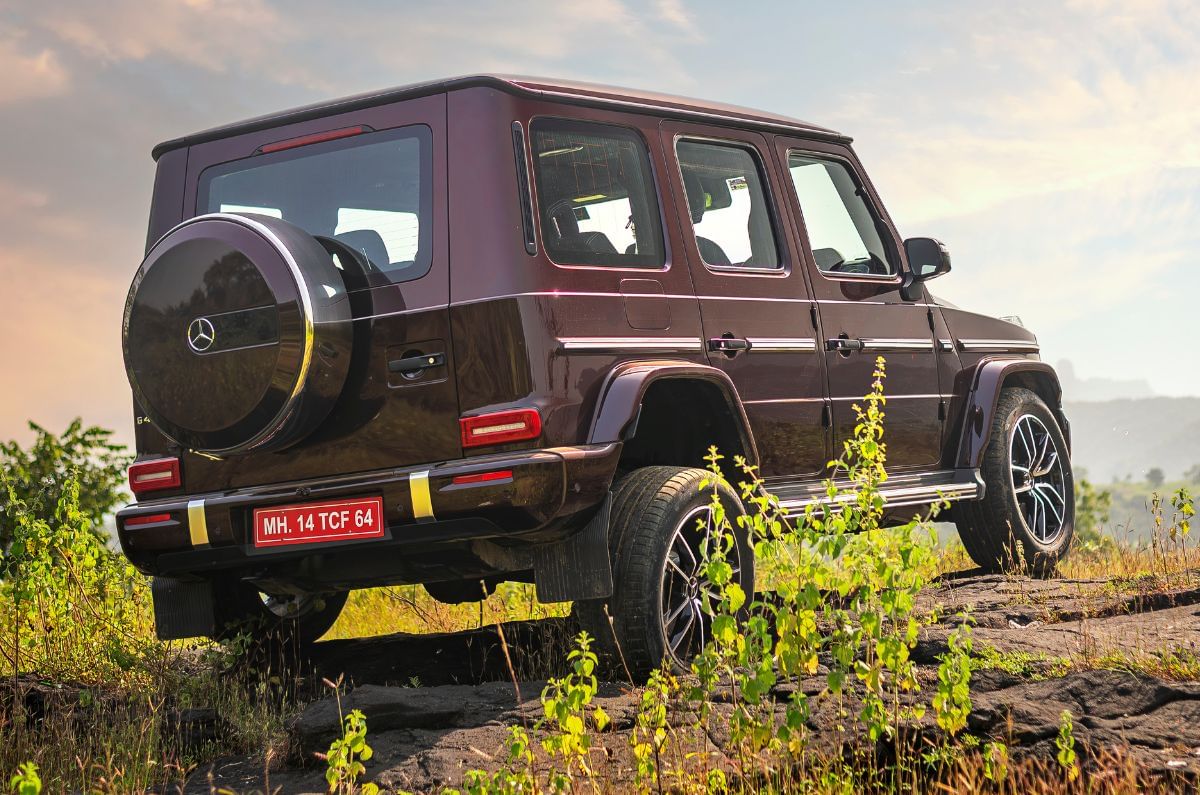
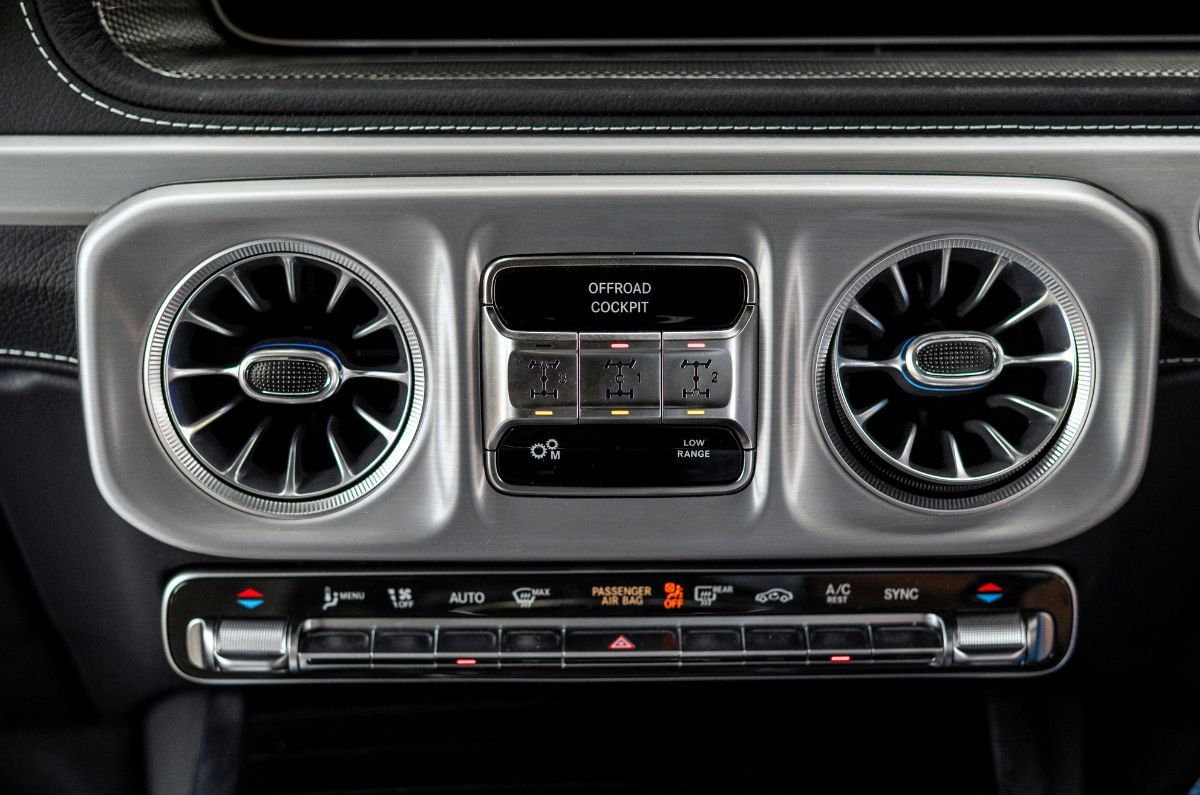
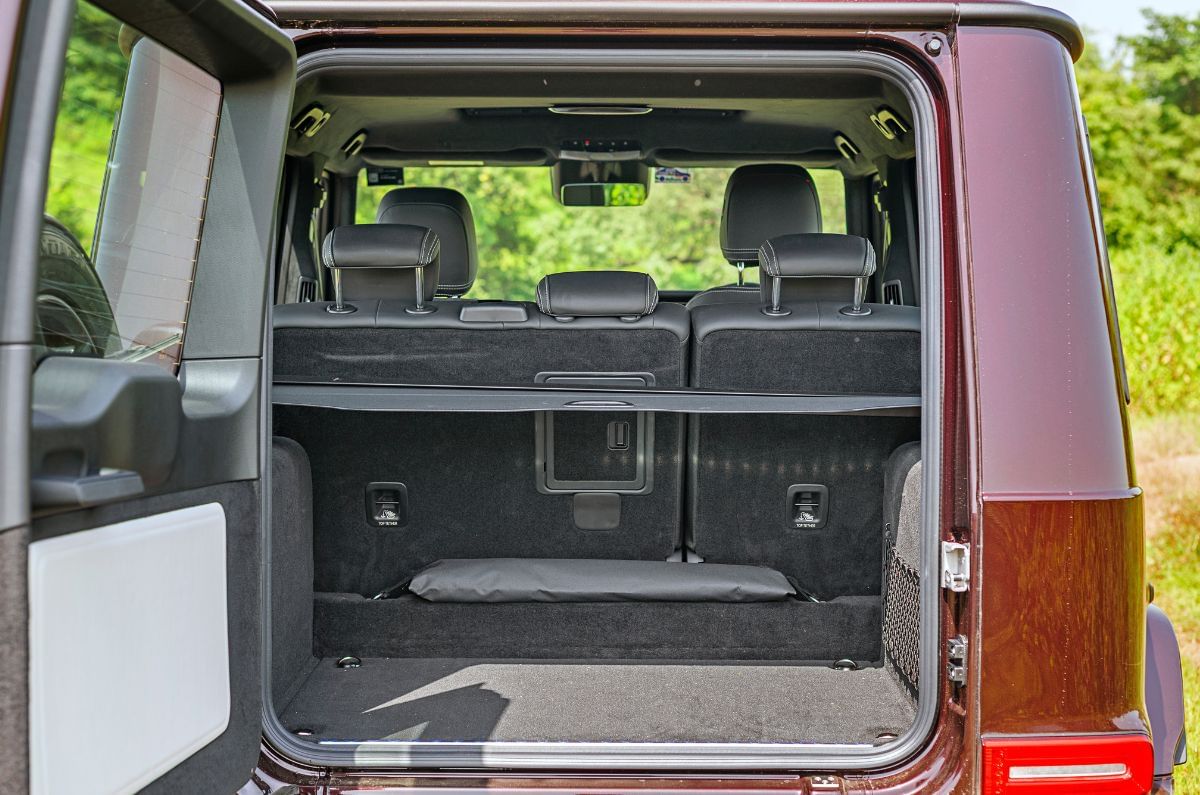
Car and Bike news, reviews and videos.
Maruti e Vitara India launch in December
Maruti Suzuki will launch the e Vitara in December, the company’s MD and CEO, Hisashi Takeuchi, said on Friday at a press conference regarding its financial results for the first half of the ongoing fiscal year (H1 FY2026). The much-anticipated Maruti e Vitara price announcement was expected earlier this year but has been delayed several times due to battery supply and software challenges.
- Maruti e Vitara to rival Mahindra BE 6, Hyundai Creta Electric, and other models
- 61kWh FWD version with over 500km ARAI range to arrive first
- AWD variant expected to be introduced later
The midsize SUV is the Japanese carmaker’s first EV for India, and it’s produced exclusively at its Hansalpur factory in Gujarat. About 7,000 units of the e Vitara have been shipped overseas since exports commenced in August, with the United Kingdom being its top importer.
Maruti Suzuki e Vitara range and battery specs- 49kWh 2WD: 144hp, 344km
- 61kWh 2WD: 174hp, 428km
- 61kWh AWD: 184hp, 394km
In international car markets, the Suzuki e Vitara gets two battery options – 49kWh and 61kWh. These batteries power an electric motor at the front, but the larger unit can also be optioned with a dual-motor setup enabling AWD, which Suzuki has dubbed AllGrip-e. The e Vitara FWD makes 144hp with the 49kWh unit and 174hp with the 61kWh battery, and the range-topping AWD version adds an electric motor on the rear axle, making a combined 184hp.
FWD motor setup of the upcoming e Vitara.
On the WLTP cycle, the e Vitara 61kWh FWD returns the highest range – 428km, followed by the AWD version’s 394km. The entry-level 49kWh FWD variant has a 344km range. As reported earlier, the FWD e Vitara will initially arrive in India with the larger battery pack, offering over 500km of ARAI (Automotive Research Association of India)-rated range; the twin-motor version is only expected to come later.
Maruti e Vitara price expectations and rivals- Rs 20 lakh-25 lakh initially
We expect Maruti to price the 61kWh 2WD version with the higher-powered motor at Rs 25 lakh. The base 49kWh variant, expected to be launched alongside in December, may carry a Rs 20 lakh price tag. The Maruti e Vitara will enter a hotly contested segment comprising the Tata Curvv EV (Rs 17.49 lakh-22.24 lakh), MG ZS EV (Rs 17.99 lakh-20.50 lakh), Hyundai Creta Electric (Rs 18.02 lakh-24.40 lakh) and Mahindra BE 6 (Rs 18.9 lakh-27.65 lakh).
If the expected e Vitara pricing holds, it’ll sit in a similar price bracket as the Vinfast VF7 (Rs 20.89 lakh-25.49 lakh), though the latter has a larger overall footprint. In terms of size, the 4.2-metre-long Vinfast VF6 lines up as a more fitting competitor to the e Vitara, and it is aggressively priced from Rs 16.49 lakh to Rs 18.29 lakh.
Ex-showroom car prices mentioned above.
Also see:
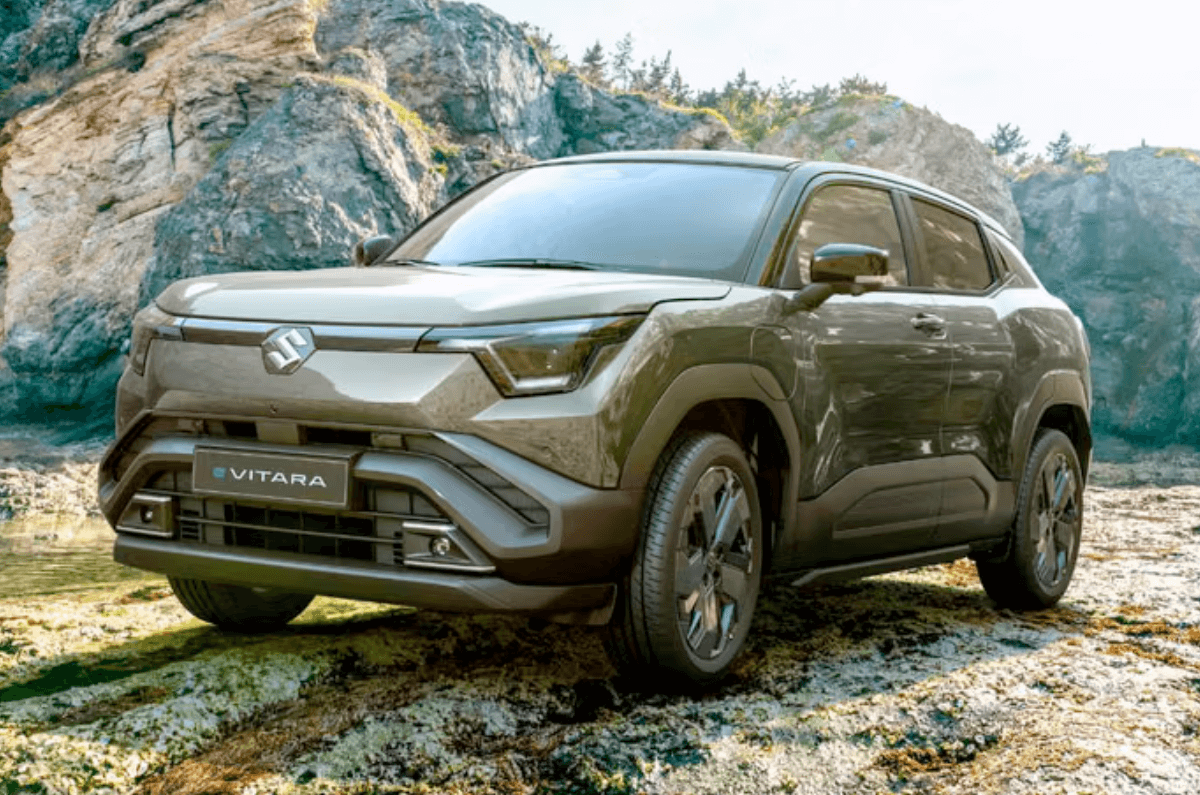
Upcoming cars for India from Japan Mobility Show 2025
At the ongoing Japan Mobility Show 2025, carmakers such as Honda, Toyota and Suzuki have shown up in full force to preview their future models. Some of those will make their way to India, given the market’s relevance. Let’s dive into every car at the Japan Mobility Show 2025 confirmed for an India launch in the coming years.
Honda 0 Series SUVLaunching in 2026Honda’s current India portfolio of three models is quite sparse, but the Japanese carmaker plans to bolster it with the all-electric 0 Series SUV next year. Based on a new born-EV platform, the 0 Series SUV is a software-defined vehicle (SDV) that comes with a vehicle-wide operating system dubbed ASIMO OS and Level 3 ADAS.
Battery pack options for the 0 Series SUV will range between 80kWh and 100kWh. Honda will bring the 0 Series SUV to India via the CBU route – expect pricing upwards of Rs 80 lakh – and position it as a halo model to showcase the brand’s EV technology.
Maruti Suzuki Fronx Flex FuelLaunching in 2026Though E20 petrol was mandated just this year (amid much controversy), Maruti Suzuki is set to launch a flex fuel version of the Fronx, which can support blends of up to E85 (85 percent ethanol, 15 percent petrol). This model was previewed as the Fronx FFV (Flex Fuel Vehicle) concept at the Japan Mobility Show 2025 and will allow Maruti Suzuki to be prepared for future increases in the ethanol content of petrol by the Indian government.
Precise specifications for the FFV concept’s engine are yet to be disclosed, but this version, save for the green stickers, is otherwise identical to the Fronx currently sold in India.
Honda 0 a (Alpha) SUVLaunching in 2027The 0 a SUV is the second Honda 0 Series model confirmed for India and has been showcased in near-production spec at the Japan Mobility Show. While the larger 0 Series SUV will be sold as a CBU here, the 0 a SUV will be locally manufactured.
This will allow Honda to price the 0 a competitively and take on electric midsize SUVs in the Rs 25 lakh-30 lakh range. Two battery packs will be available for the 0 a SUV, the capacities of which Honda hasn’t specified but says will be in line with those offered by rivals.
Toyota FJ CruiserLaunching in late 2028Globally unveiled just weeks ago, the Land Cruiser FJ is the new entry-level model for Toyota’s Land Cruiser line-up of SUVs, built on the same IMV body-on-frame platform that underpins the Fortuner, Hilux and Innova Crysta. At the Japan Mobility Show 2025, Toyota confirmed that the Land Cruiser FJ is India-bound and will be manufactured here at the carmaker’s new Chhatrapati Sambhajinagar plant in Maharashtra.
With the Land Cruiser FJ, Toyota aims to plug the large gap between the Hyryder and Fortuner in its SUV portfolio for India, and prices for the new SUV could start from Rs 30 lakh, thanks to heavy localisation. In India, the Land Cruiser FJ will be offered with a 163hp 2.7-litre petrol engine, mated to either a strong hybrid or a plug-in hybrid setup, and 4WD will be part of the package, too. Diesel engines are, unfortunately, off the table for the Land Cruiser FJ in India.
All prices are ex-showroom, India.
Also see:
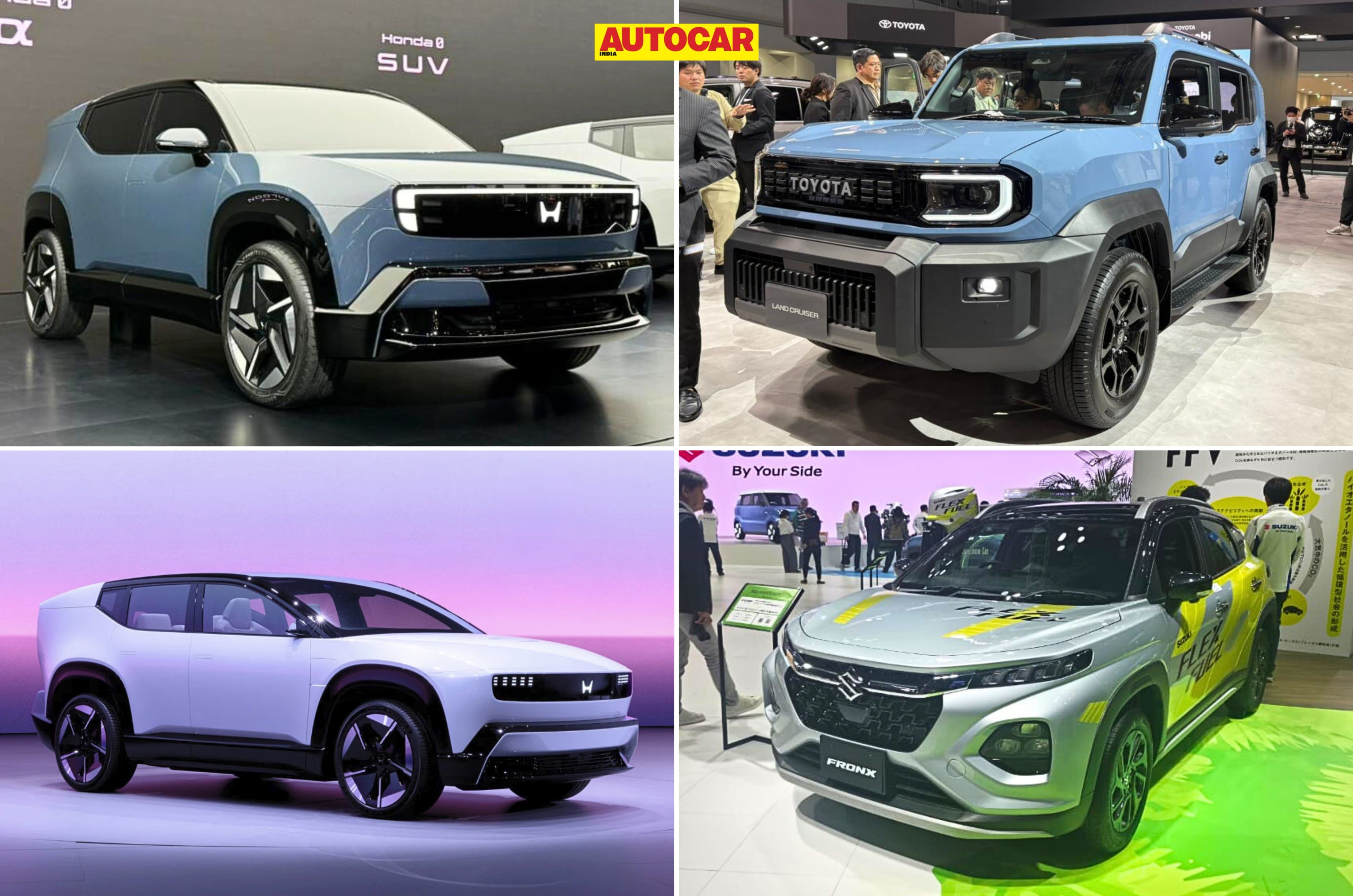
Toyota to launch 15 new or updated models in India by 2030
Toyota is preparing a major product expansion for India as it looks to grow its market share from about 8 percent today to 10 percent by 2030, according to Reuters. India has now become Toyota’s third-largest global market after the US and China, supported by rising sales and record profitability.
The company will introduce 15 new or refreshed models by 2030, including two all-new SUVs and an affordable pickup. These new models will come alongside a capacity expansion plan that takes Toyota’s annual output in India past one million units once its new plant becomes operational.
- Two new SUVs and an affordable pickup planned
- Major capacity expansion across Karnataka and Maharashtra
- Rural network expansion planned with compact outlets
Toyota is developing at least two new SUVs for India that will compete directly with segment leaders from Mahindra and Hyundai. One of these will be the Land Cruiser FJ, which made its global debut at the Japan Mobility Show 2025. Another SUV is expected to be built on the same architecture as the Hilux Champ, which is already sold in markets like Indonesia and Thailand.
Alongside these, Toyota is working on an affordable pickup positioned below the Hilux, targeted at buyers in rural and semi-urban markets. All three will form part of the 15-model pipeline, which includes Toyota-developed products, Suzuki-sourced models, and updates to existing line-ups.
Manufacturing expansion to support Toyota’s growth Capacity to cross 1 million units a yearToyota has committed USD 3 billion to expand its Bidadi plant in Karnataka and is building a new facility in Chhatrapati Sambhaji Nagar, Aurangabad, Maharashtra. Once both are operational, Toyota’s annual capacity in India will exceed 1 million units.
The new plant will produce multiple new SUVs for India and export markets in Africa and the Middle East, one of which is expected to be the Land Cruiser FJ. The wider investment push mirrors similar commitments from Maruti Suzuki and Hyundai, both of which have also announced major Indian expansion plans.
Toyota widens its rural footprint Lean-format showrooms and compact workshopsToyota plans to deepen its presence in rural and smaller towns by introducing smaller, lower-cost outlets with limited display cars and compact service workshops. This is aimed at improving accessibility and supporting demand in markets where practicality and ease of ownership are key factors.
India becomes Toyota’s third-largest market Record profits support expansion plansToyota Kirloskar Motor posted record profits of USD 640 million last fiscal year, helped by higher plant utilisation and strong sales of rebadged Suzuki models. These Suzuki-based products made up up to 52 percent of Toyota’s sales in 2024.
Toyota sold over 300,000 vehicles in India last year, with strong-hybrid models such as the Urban Cruiser Hyryder and Innova Hycross contributing significantly to the brand’s presence in the alternative fuel segment.
Also see:
Toyota Land Cruiser FJ India launch in end 2028

2026 Ducati Streetfighter V4 launched at Rs 28.69 lakh
Ducati seems to be on a roll, after launching the Multistrada V2 and Panigale V2, it has launched the 2026 iteration of the Streetfighter V4 starting at Rs 28.69 lakh. Apart from the updated looks and larger winglets, the Streetfighter V4 gets a lot of under-the-skin updates that make it even more focused and powerful than it already was.
- Ducati Streetfighter V4 now produces 214hp and 120Nm
- Now features double-sided swingarm
- Costs Rs 3.36 lakh less than the Panigale V4
The Streetfighter V4 is essentially a stripped-down version of the Panigale V4, showcasing the Desmosedici Stradale V4 engine. It features a wider handlebar instead of clip-ons, resulting in a slightly more relaxed rider’s triangle. In addition, Ducati has carried over the same electronics suite and chassis from the Panigale without major alterations. This means the Streetfighter too bids adieu to the beautiful single-sided swingarm that previously enhanced its aesthetic appeal.
The new double-sided swingarm or Hollow Symmetrical swingarm in Ducati’s terminology may take away some of that visual drama but reduces lateral stiffness by over 40 percent and is lighter than the outgoing model’s single-sided unit. Much like the 2025 Panigale V4, the Streetfighter also adopts an all-new chassis, with the front frame alone shedding approximately 1kg.
Suspending this new frame is Showa’s fully adjustable 43mm BPF fork paired with a Sachs monoshock on the standard V4, while the V4 S variant gets Öhlins’ electronically adjustable Smart EC 3.0 suspension at both ends - just like the Panigale. Ducati claims that the Streetfighter’s ergonomics have been revised to improve vehicle control and comfort, especially for taller riders. Compared to the previous Streetfighter V4, the handlebar bend has been moved 10mm closer to the rider, and the footpegs are now lower, farther forward, and positioned 10mm further inward.
The 2026 Streetfighter V4 continues to use the same 1,103cc Desmosedici Stradale V4 engine, but it is now Euro 5+ compliant. It produces 214hp at 13,500rpm — up by 6hp — and 120Nm of peak torque at 11,250rpm, down by 3Nm and arriving 1,750rpm higher in the rev range. Ducati also offers a full-system Akrapovič exhaust that boosts output to 226hp. Bringing this power under control are Brembo’s top-spec Hypure calipers paired with a Brembo master cylinder.
In terms of design, the updates are evolutionary. It features a completely new full-LED headlight that retains the familiar DRL signature but now divides it into four sections. The LED tail light is split into two downward-facing C-shaped elements. The 15.8-litre fuel tank (down by 0.2 litres) is now slimmer where it meets the seat, while the forward-slanting, body-coloured winglets are claimed to provide up to 14kg of downforce at 268kph.
Speaking of electronics, the Streetfighter V4 is packed with systems that allow extensive adjustability via a new 6.9-inch TFT dash. A notable addition is the Race eCBS system, which monitors lean angle, throttle position, and rear load to automatically apply rear braking when needed — helping stabilise the bike without the rider physically using the brake lever.
Besides this, the Streetfighter V4 continues to offer the complete suite of Ducati electronics: traction control, wheelie control, launch control, cornering ABS, a bi-directional quickshifter, and a six-axis IMU enabling cornering aids.
The higher-spec V4 S variant further distinguishes itself with lighter forged aluminium wheels, electronic suspension, and a lithium-ion battery. Together, these changes reduce weight by 2kg — with the S tipping the scales at 189kg and the standard variant at 191kg.
The 2026 Streetfighter V4 is priced from Rs 28.69 lakh for the Standard variant and goes up to Rs 32.38 lakh. At its current price, the 2026 model is Rs 2.37 lakh more expensive than the outgoing model. The delta further widens when you consider the top-spec ‘S’ model that was earlier priced at Rs 29.71 lakh, reflecting a price-hike of Rs 2.67 lakh.
Also see: 2025 Ducati Panigale V4 S track review: Top of the game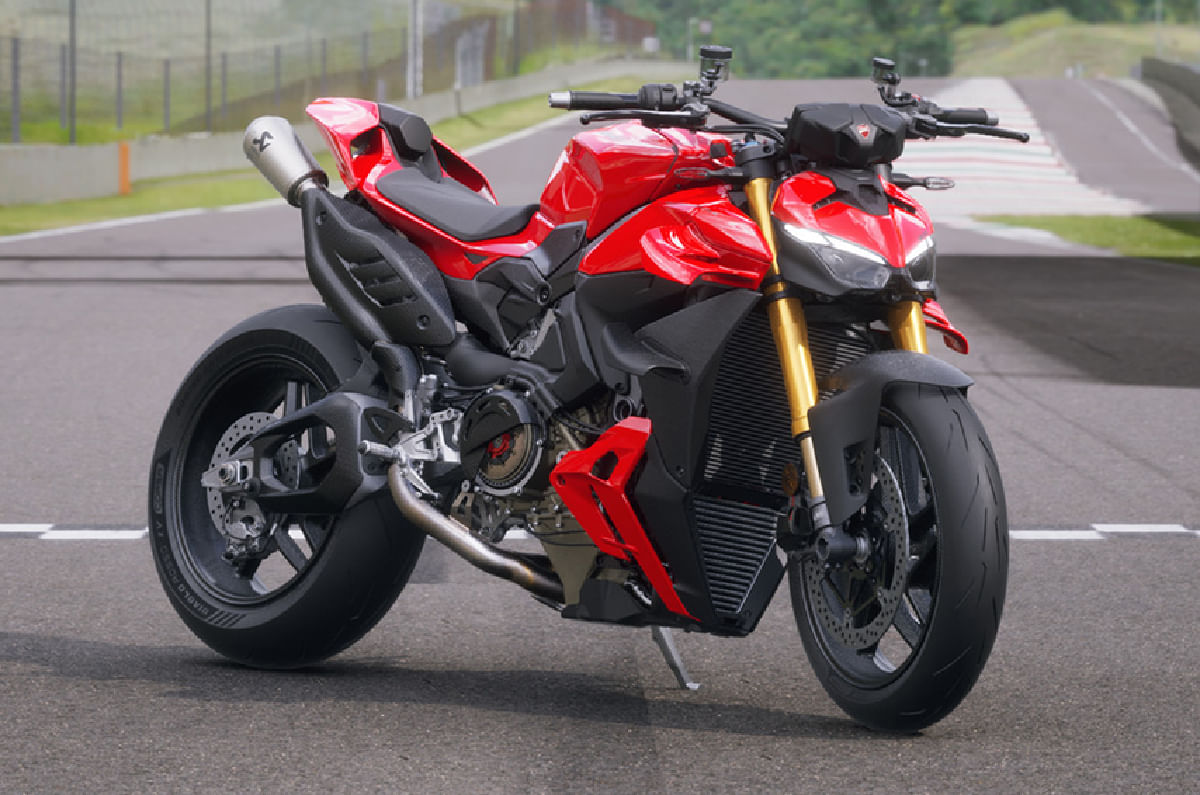
Porsche Panamera recalled in India for airbag issue
Porsche has announced a voluntary recall of 158 Panameras (YAA/YAB), manufactured between 19 July 2023 and 2 September 2025, due to incorrectly assigned cabling for the crash sensors in the door trim panel. "An incorrectly assigned sensor can delay the side airbag trigger in a particular crash situation. Such a delayed trigger of the side airbag increases the risk of injury," the Voluntary Recall Information section of the Society of Indian Automobile Manufacturers' (SIAM) website stated. This comes amid the recent recall of 142 Porsche Panamera (YAA) units in Australia over a similar airbag issue.
- 158 Panameras recalled over delayed side airbag deployment risk in crash
- Recall includes models produced from 19 July 2023 to 2 September 2025
- A Porsche 991 recalled earlier this year over seatbelt issue
As is usually the case with these recalls, Porsche is expected to directly reach out to owners of the affected cars to fix the problem. Owners could also log on to recall.porsche.com and enter their VIN to check if their cars have been affected.
Porsche 911 recalled in March 2025 Recall was announced over faulty seat-belt buckleAs per SIAM data, this is the second recall Porsche has announced in India this year. The previous recall, announced in March for a Porsche 991, was also over a safety issue. "An aluminium butyl mat was incorrectly positioned and, consequently, the screw connection of the rear left and right seat-belt buckle may not have been carried out according to the specifications. If this is the case, the correct screw connection of the seat-belt buckle would not be ensured. In such a case, it cannot be ruled out that the rear seat-belt buckles would loosen in the event of an accident or emergency braking. This could increase the associated risk of injury," the apex body representing all major vehicle and vehicular engine manufacturers in India stated.
Also see:
Skoda and VW recall Kylaq, Slavia, Kushaq, Virtus, Taigun for seatbelt issue again
Mercedes recalls S Class, GLC, SL 55 and EQS sedan in India over fire risk
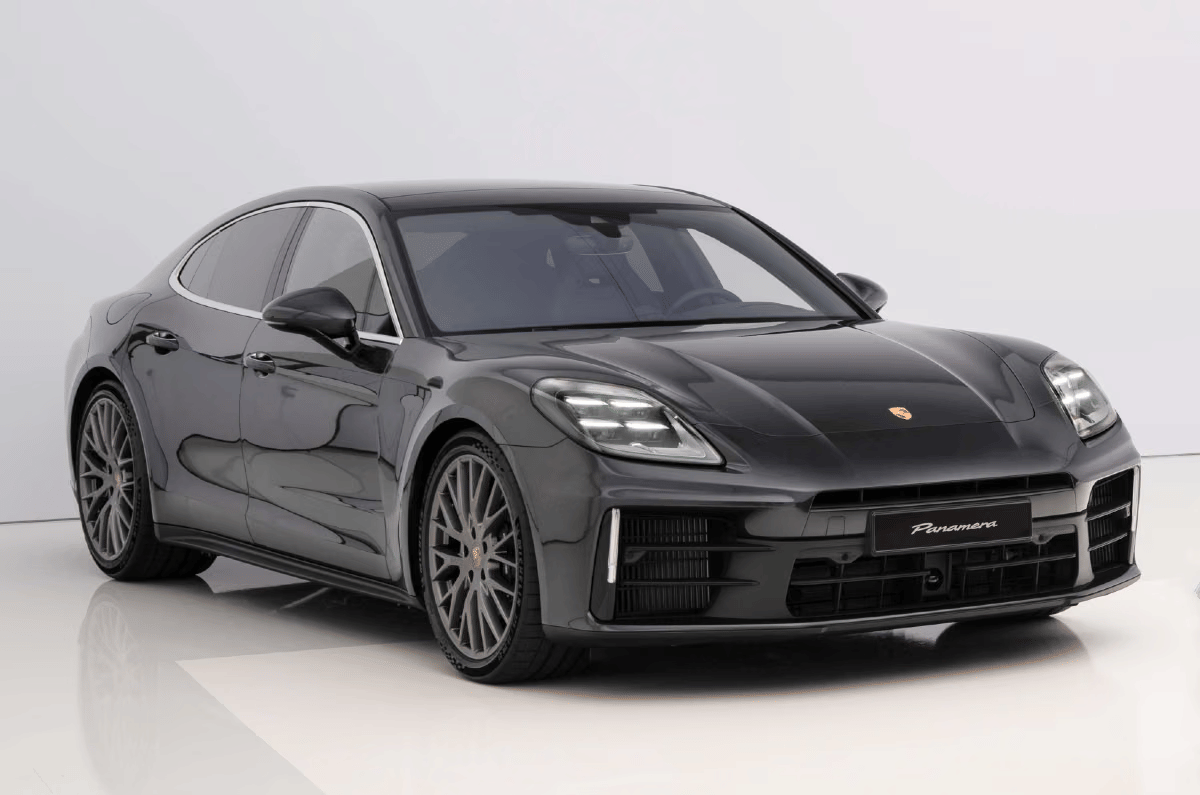
Toyota Camry recalled over potential issue with 360 degree camera
The current, ninth-gen Toyota Camry sold in India has been recalled to fix a potential issue with the 360-degree camera system. The voluntary recall, issued on October 30, affects 2,257 units of the premium executive sedan.
- Ninth-gen Camry recalled for issue with 360-degree camera’s parking assist ECU
- Toyota Camry available in Elegant and Sprint Edition variants
Based on SIAM documents, the recall is to fix a glitch with the parking assist ECU, which is “a component of the Panoramic View Monitor (PMV) system” – Toyota’s term for its 360-degree camera. An error in the software can cause the image on the infotainment touchscreen to freeze while reversing or result in no image displayed “if the ignition is turned on or off within a specific time”.
2025 Toyota Camry detailsLaunched in December 2024, the Camry is currently priced in the Rs 47.48 lakh-Rs 47.62 lakh rangeAfter the GST 2.0-led price correction in September, the Toyota Camry is priced between Rs 47.48 lakh and Rs 47.62 lakh. Both variants, Elegant and Camry Sprint Edition – the latter gets a dealer-level accessory kit that adds minor design changes outside and more features inside – are priced at the same Rs 47.48 lakh, with the Platinum Pearl White exterior colour costing Rs 14,000 more. The ninth-gen Camry was launched in India on December 11, 2024.
Currently, the Camry has no direct rivals in our market, but it can be seen as an alternative to the likes of the Audi A4, Mercedes-Benz C-Class and BMW 3 Series LWB. The Japanese sedan is powered by a 2.5-litre petrol engine paired with Toyota’s fifth-generation Hybrid System (THS 5), producing a total output of 230hp. It has an ARAI mileage of 25.49kpl, making it one of the most fuel-efficient cars in India.
All prices are ex-showroom, India.
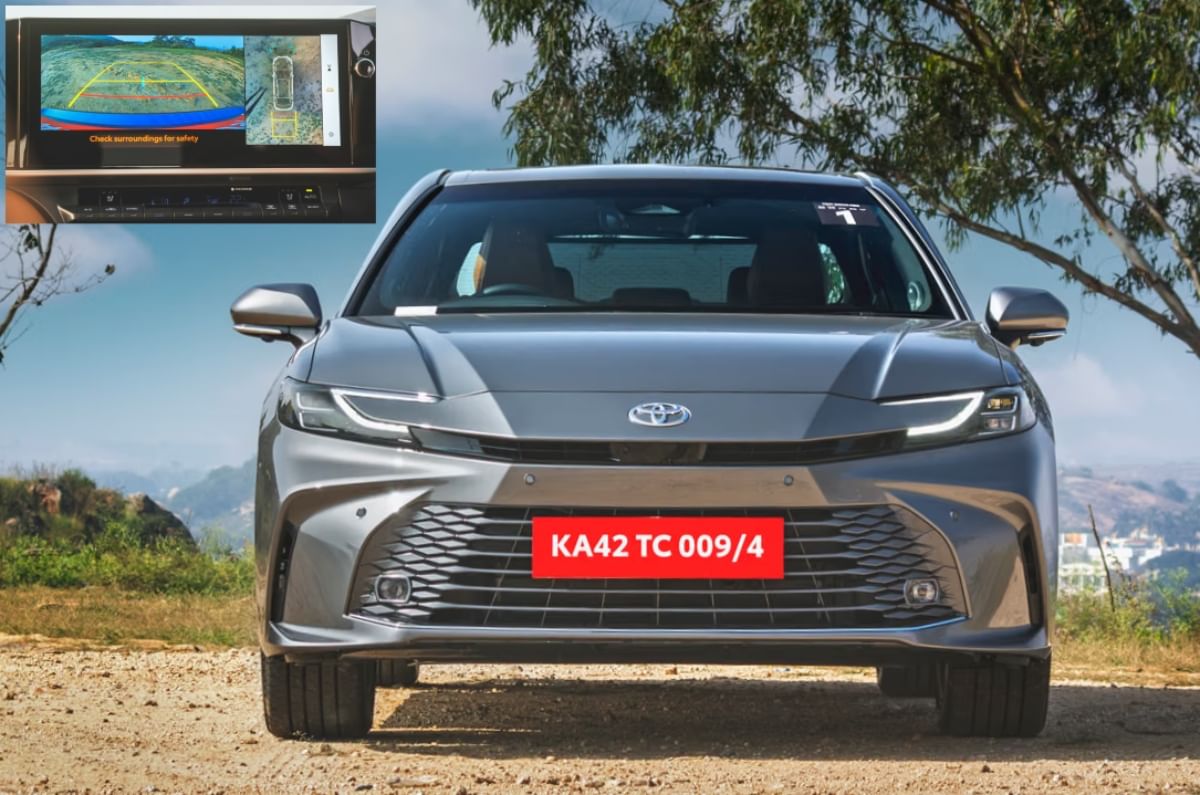
How Maruti Suzuki plans to reclaim 50 percent market share
Maruti Suzuki aims to regain a 50 percent share of India’s passenger vehicle market, a level it last held in FY2019. Its share has since fallen to around 40 percent, as competitors capitalised on the rapid shift toward SUVs.
Toshihiro Suzuki, representative director and president of Suzuki Motor Corporation, said India remains Suzuki’s most critical market globally. “We remain committed to achieving a 50 percent market share and becoming number one in electric vehicle production, sales and exports,” Suzuki told reporters on the sidelines of the Japan Mobility Show 2025.
- Small cars to remain Maruti’s foundation
- Diversified powertrain mix to bridge transition to EVs
- Expanding SUV and MPV portfolio
Small cars remain central to Maruti Suzuki’s strategy. The company’s managing director and chief executive officer, Hisashi Takeuchi, previously said that “small cars will remain our core business,” while its chairman, RC Bhargava, had reiterated that the company “will never forget customers who cannot afford expensive cars”.
Maruti is also developing a new micro SUV positioned below the Brezza to rival the Tata Punch and Hyundai Exter. The model will target budget-conscious buyers looking for SUV styling at an accessible price point, allowing Maruti to maintain its focus on affordability while adapting to evolving customer preferences and regulatory requirements.
Multi-fuel, multi-powertrain strategy CNG and hybrid models to bridge the gap till EVs arriveWhile several rivals are accelerating their shift to electric vehicles, Maruti Suzuki is taking a more diversified route. Its portfolio will continue to include petrol, CNG, hybrid and flex-fuel models, alongside a gradual rollout of EVs.
The company plans to launch four electric vehicles by 2030, starting with the e Vitara SUV this year. Until then, hybrid and CNG models are expected to account for the bulk of its sales. The Grand Vitara and Invicto already use Toyota’s strong hybrid technology, and factory-fitted CNG options are available across most of Maruti’s high-volume models.
A flex-fuel version of the Fronx showcased at the Japan Mobility Show 2025, capable of running on petrol with up to 85 percent ethanol content, is also expected to launch in India next year.
SUVs: The core growth driver Expanding presence in India’s largest vehicle segmentMaruti Suzuki lost ground during India’s SUV boom, as Hyundai, Tata Motors and Mahindra grew faster with new launches. SUVs now account for about 60 percent of passenger vehicle sales.
To address this gap, the company has lined up nine new SUVs and MPVs for launch by 2028. The plan spans sub-4-metre, midsize and 3-row models, along with EV derivatives based on the e Vitara platform.
Maruti also plans to expand production capacity to four million units annually by 2030, including exports. The additional capacity will support its SUV and MPV pipeline, though sustained demand will be crucial in an increasingly competitive market.
Also see:
Toyota Land Cruiser FJ India launch in end 2028
Maruti Baleno turns 10: evolution of India's most successful premium hatchback

Honda EVs in India to get CATL battery from Indonesia
As Honda Motor Company announced its first battery electric car for India, the 0 Series a (Zero Series Alpha), slated for launch in 2027, the automaker outlined a regional sourcing strategy for batteries to reduce dependence on direct imports from China. The model here will use battery cells supplied by the Chinese manufacturer CATL from its facility in Indonesia.
“The battery for the 0 Series a, even though we use the technology of CATL, the cells that are produced in Indonesia, will be brought over to India. So, you could say those batteries are from Indonesia,” Honda President and CEO Toshihiro Mibe told reporters at the Japan Mobility Show 2025 on Friday.
Global EV industry is heavily reliant on China for battery cellsMaruti Suzuki among carmakers to face hurdles due to lack of domestic cell manufacturingIndia’s electric vehicle industry remains heavily reliant on China for battery cells, posing major supply-chain risks amid tense geopolitical relations. Concerned over disruptions and strategic vulnerabilities, automakers are now seeking alternative sourcing options, especially after recent challenges in securing rare earth magnets and advanced battery technologies from China.
Though the Indian government is pushing for more localisation of EVs through an incentive scheme for domestic production of cells in India, the initiatives are yet to achieve a significant impact on the EV supply chain here. Recently, India’s largest carmaker, Maruti Suzuki, flagged that its battery strategy faces the biggest challenge, with the lack of domestic cell manufacturing creating a major hurdle.
Limited domestic capacity and the lack of established large-scale cell producers are pushing automakers here to look for other regional alternatives, such as Indonesia, Thailand, and South Korea, to secure battery supplies without direct import exposure to China.
Honda EV battery sourcing strategyIt has adopted a strategy to source battery packs regionallyHonda is adopting a regional battery sourcing strategy globally, with partnerships and joint ventures, as batteries are large in size and difficult to transport over a larger stretch. For instance, in North America, the automaker has a joint venture - L-H Battery Company – with LG Energy Solution and a battery plant is being constructed in Ohio.
“We will procure the batteries in the optimum way for each of the regions. For North America, we do have a joint venture there with LG. for batteries. We will procure the battery from there for North America. For China, the Chinese market will procure the battery from CATL itself. For vehicles made in Japan, batteries will be procured in Japan and mounted on EV vehicles,” Mibe said.
Honda India Cars launch plan10 new Honda models including EVs and hybrids by 2030Meanwhile, Honda is planning an aggressive product offensive in India, with 10 new models to be launched by the end of the decade. Alongside BEVs, the carmaker will focus more on hybrid technology as well. Currently, Honda offers hybrid technology on one of its three models available in India.
“We plan to put more effort into hybrid as well. We will be expanding the hybrid product range for the Indian market as well. Therefore, across all the different types of internal combustion engines, like a gasoline engine and hybrid, and battery EVs, we want to deliver attractive products to our customers in India,” he added.

Ford Chennai plant to manufacture engines for export from 2029
Ford Motor Company has announced that it will revive its Chennai plant in India to manufacture all-new, next-generation engines for overseas markets from 2029. The American carmaker has signed a Memorandum of Understanding (MoU) with the Government of Tamil Nadu for the same, a year after submitting a Letter of Intent (LOI) in September 2024.
- Ford Chennai plant expected to see initial investment of Rs 3,250 crore
- It will have annual production capacity of 2,35,000 engines
Ford has not shared exact details of what kind of powertrains will be manufactured here, but says it will feature “next-generation technologies”. The company will begin site preparation later this year, but production is still some time away, expected by 2029. The plant will have a planned capacity of 235,000 engines annually.
Ford’s Maraimalai Nagar plant in Chennai has been lying dormant since the company pulled the plug on its India operations in September 2021. This announcement finally clears the cloud on future operations of the Chennai plant, as despite the LOI to the Tamil Nadu Government, there have been reports about Ford rethinking its manufacturing plans in India.
This announcement is expected to see the American carmaker initially invest Rs 3,250 crore under the Ford+ plan, where it plans to keep capitalizing on India’s manufacturing prowess. This is also expected to create about 600 new jobs, says Ford.
“We are pleased to advance our plans and confirm the Chennai plant’s vital role in Ford’s manufacturing network,” said Jeff Marentic, president, International Markets Group, Ford Motor Company. “This decision reinforces our commitment to leveraging India's manufacturing prowess for future products.”
Meanwhile, Ford also continues to manufacture engines for export in limited capacity from its Sanand facility on lease from Tata Motors, one of the company's two India plants that it sold to Tata Motors in 2023.
Also See:
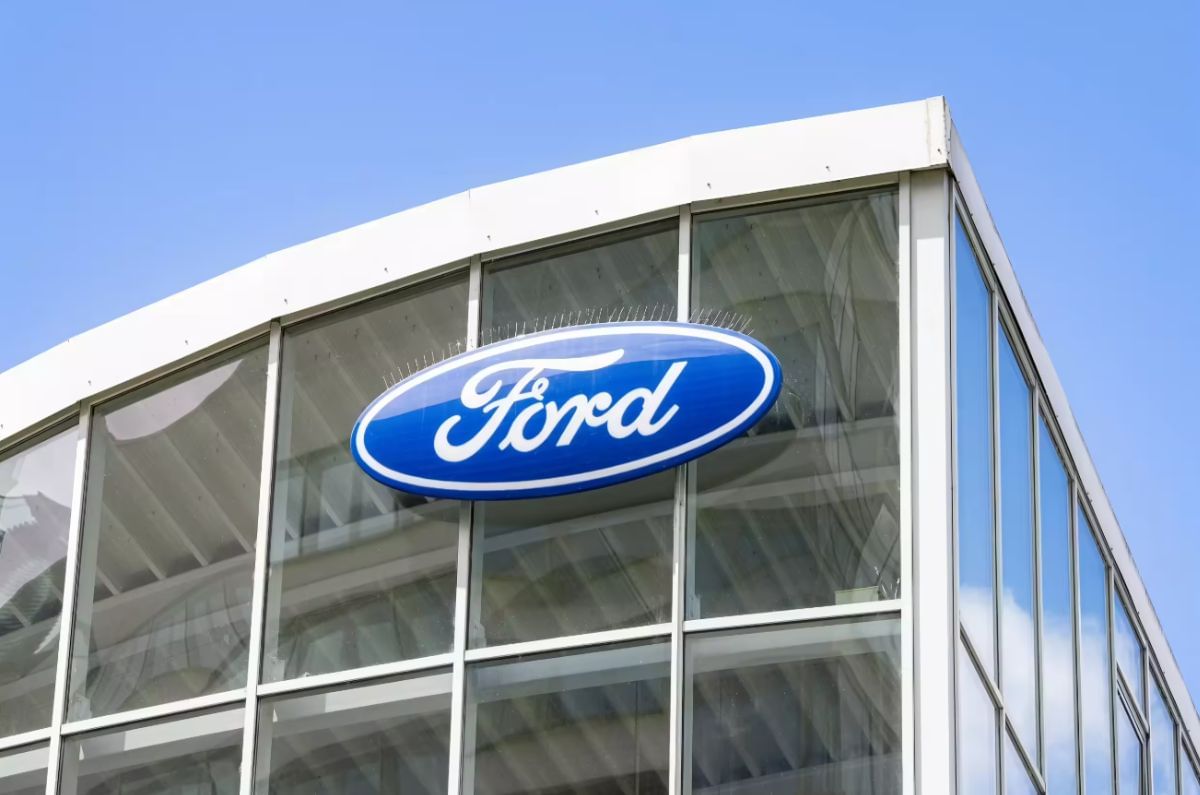
New Hyundai Venue N Line revealed
Ahead of the new Venue’s launch on November 4, Hyundai has revealed the sporty N Line iteration of the compact SUV. Much like the current Venue N Line, the new-gen model is equipped with numerous cosmetic enhancements over the standard model and is powered by the same 1.0-litre turbo-petrol engine. Bookings for the new Venue N Line can now be made for a token amount of Rs 25,000.
- New Venue N Line has revised grille and roof spoiler, sportier bumpers, and more
- Interior gets all-black treatment with new steering wheel and red ambient lighting
- Only available with 120hp 1.0-litre turbo petrol engine with manual and DCT gearboxes
Compared to the new Venue’s standard version, the biggest changes to the N Line are on the outside. Up front, the new Venue N Line gets a unique Y-slat design for the grille, N Line badging, and a redesigned bumper with a smaller skid plate and red accents. These red stripes continue down the sides, which also feature N Line badging on the fenders and new 17-inch alloy wheels. Notably, the body cladding above the wheels has been removed on the new Venue N Line.
Bigger roof spoiler and new dual-tone colour option.At the back, there’s a new dual-ridge roof spoiler with an integrated stop lamp, an N Line badge on the tailgate, a revised bumper with red accents and dual exhaust tips. The new Venue N Line can be had in the same colours as the standard Venue, barring the Mystic Sapphire finish. Also, the N Line is available with an exclusive dual-tone option (Abyss Black roof) for the Dragon Red colour.
All-black interior with N Line-spec steering wheel and gear selector.Inside, the new Venue N Line features an all-black colour scheme. The most prominent upgrade here is a sportier steering wheel that looks very similar to that of the Ioniq 5 N, integrates the drive and traction mode selectors and features red stitching. Other notable changes include N Line-specific gear knobs, red ambient lighting, metal pedals and black leatherette seats with N Line embossing.
Venue N Line feature list is loaded.As far as creature comforts go, the new Venue N Line carries over everything from the top-spec variants of the standard model. Feature highlights include dual 12.3-inch screens, wireless Apple CarPlay and Android Auto, over-the-air (OTA) updates, Level 2 ADAS, ventilated front seats, an 8-speaker Bose sound system, an electronic parking brake with auto hold (DCT only), a 4-way powered driver’s seat and a 360-degree camera.
New Hyundai Venue N Line engine and gearbox 120hp turbo-petrol engine with manual and DCT options.The new Venue N Line will be sold in two variants – N6 and N10 – both of which are powered by a 1.0-litre turbo-petrol engine developing 120hp and 172Nm. In N6 guise, this engine can be mated to either a 6-speed manual or 7-speed dual-clutch automatic, while the N10 variant is available solely with the latter.
Four traction modes.Front and rear disc brakes with sporty red calipers will be part of the package, too. Hyundai has also revealed the new Venue’s traction modes: Normal, Mud, Sand and Snow.
Also see:
New Hyundai Venue features, standard safety equipment revealed

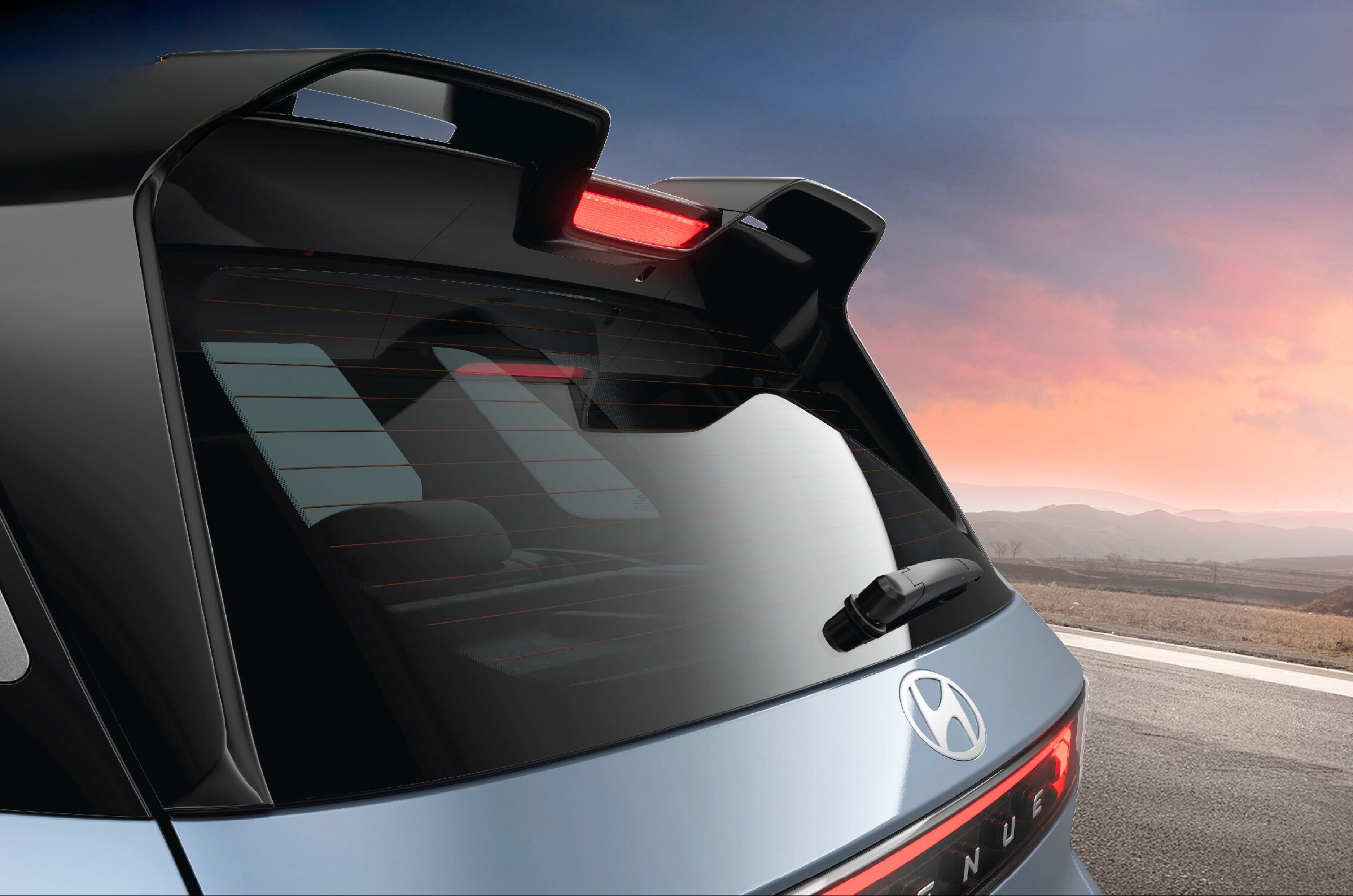
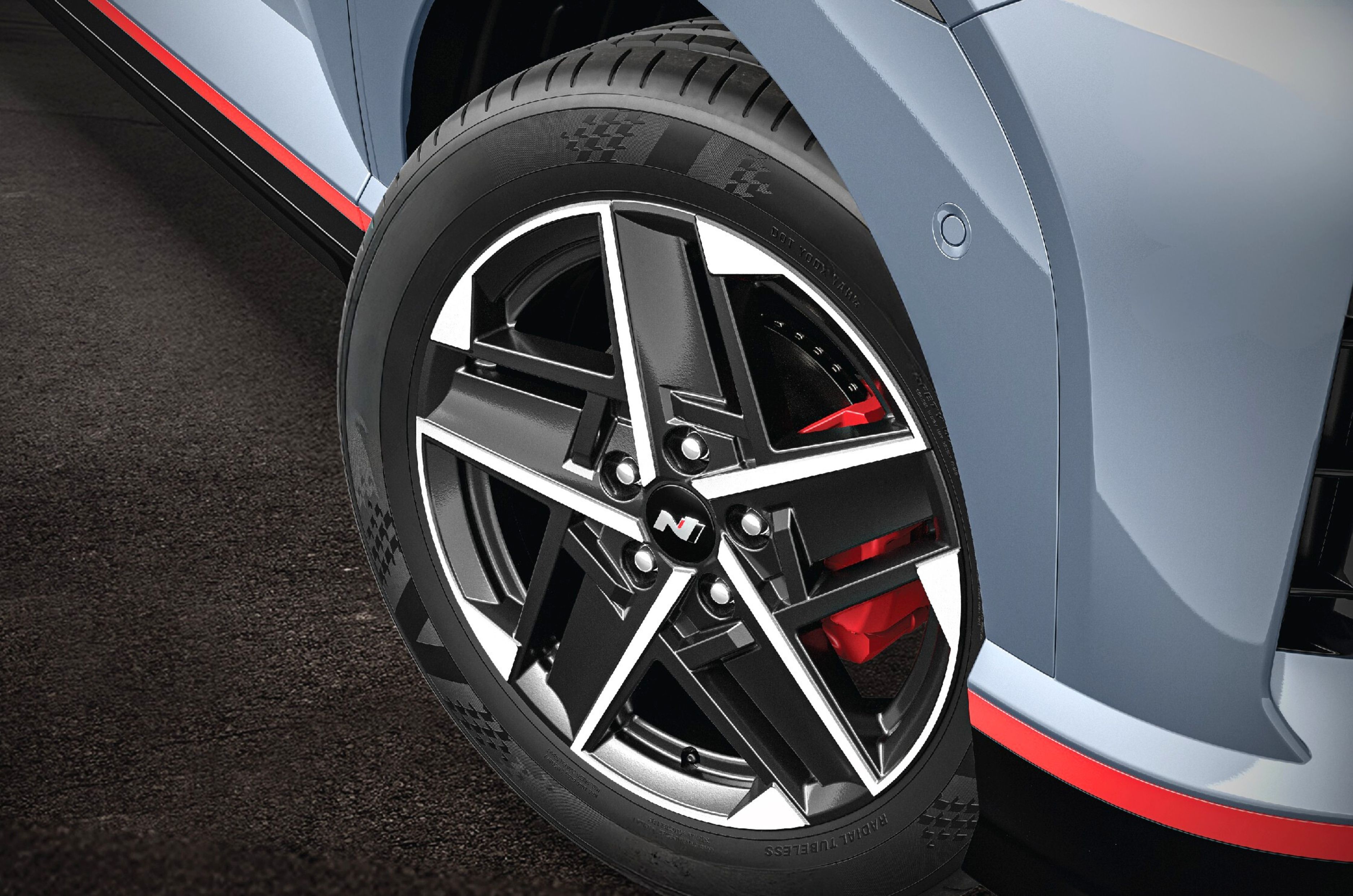
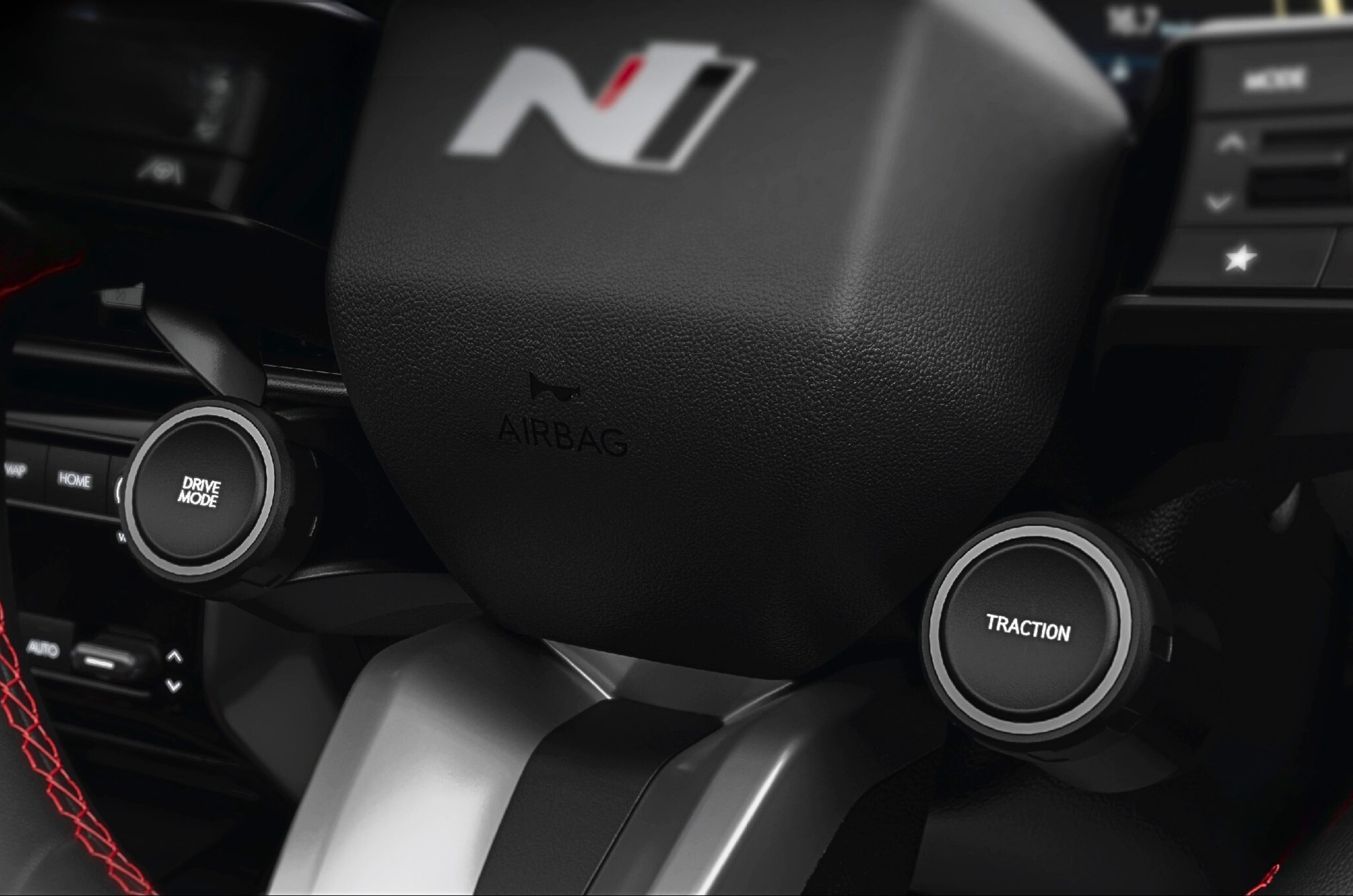
Latest updates from BikeEXIF
Retrocross: Another Effortlessly Cool Yamaha XT500 from PBM
Ah, the evergreen Yamaha XT500. Its reliability is unrivaled, its exploits are legendary, and its look is timeless. Any motorcyclist over a certain age has either owned it, known someone who has owned it, or dreamt of owning it back in the day.50 years after its release, the XT500 has found renewed ...
Meet the Vespa 787B—A Vivid Tribute to the Mazda that Won Le Mans
Built as a two-wheeled homage to the iconic Mazda 787B that won the 24 Hours of Le Mans, this custom Vespa PX is as good as it gets.In 1991, the Mazda 787B rocked the motorsport world when it took gold at the 24 Hours of Le Mans. It was the first Japanese car to win the prestigious event, and it rem...
The Brick Renaissance: 6 Custom BMW K-Series Motorcycle
In the world of custom motorcycles, certain machines—the air-cooled Triumph Bonneville, the classic Honda CB, the BMW Boxer—are mainstays. They're reliable, they're beautiful, and they're easy to chop up. Then there is the BMW K-Series.Dubbed ‘The Flying Brick’ by those who loved its relia...
More Pre-EICMA News from Yamaha, Triumph, LiveWire, and Cardo
This past weekend, we caught up on major releases from companies that jumped the queue ahead of EICMA—the annual motorcycle trade show that’s long served as the launchpad for each year’s new crop of bikes. We’re sure this year’s running will pack a few surprises of its own, but until then, here’s mo...
Hard Illusions: 6 of our favorite Harley Softails
The Harley-Davidson Softail platform is not just a motorcycle; it’s a cheat code. It provides the raw, clean aesthetic of a classic rigid frame, while retaining the hidden luxury of functional rear suspension.First introduced in 1984 with the FXST, the Softail has since become a darling of the custo...
Speed Read: Pre-EICMA news from Ducati, Honda, KTM, Kawasaki, and Stark
We're less than two weeks away from the start of EICMA—the massive annual motorcycle trade show that traditionally brings a slew of new bike releases. But, as has become the norm over the past few years, it feels like there's more news before the event than we're expecting from the event itself.In t...
Cotton Candy Dreams: A 1977 Harley Shovelhead Chopper from Wales
Inspired by the choppers seen at The Hook Up show, Hannah Meakin's 1977 Harley Shovelhead chopper is a vision in cotton candy pink.Started by a couple of friends who felt that South Wales was in desperate need of a good chopper show, The Hook Up will celebrate its 10th, and final, edition next year....
Kings of the Road: Joey Dunlop's Honda V4 Race Bikes Sell at Stafford
Joey Dunlop's race-winning Honda VFR750R RC30 and Honda RVF750 RC45 sell for a pretty penny at the Bonham's Autumn Stafford Sale.Held seasonally at the Staffordshire County Showground in Stafford, England, the Bonhams Stafford sale consistently delivers a slew of interesting and valuable motorcycles...
Alchemy of the Arc: A Beginners Guide for Welding Custom Motorcycles
There comes a point in every builder’s journey where bolt-on parts just don’t cut it anymore. It’s a creative wall you hit when the vision in your head—that perfect subframe hoop, the high-swept exhaust, the custom bracket that relocates everything just so—can’t be found in a catalog. This is the mo...
Revealed: The 2026 Triumph Scrambler 900
Triumph updates the Scrambler 900 for 2026 with an upgraded chassis, new tech, and revised styling. But has it lost its retro appeal?Triumph Motorcycles is gearing up for a busy season. Earlier this week, the historic British marque announced its intention to release 29 new motorcycles over the next...
Everyman Tracker Build Pt.9: Concluding our Honda CB550 Project
With the last of the wiring finished and an unscheduled rebuild of the brake master cylinder completed, our long-term project bike—a forlorn 1975 Honda CB550—was finally ready for its first test ride. Four anxious dudes hovered around the open garage door as the Honda crackled to life and drove out ...
Retro Rubber: The Best Modern Tires for Your Vintage Build
There are a few details that make or break a custom motorcycle build, but none are as critical to the final stance as the choice of tires. The right rubber provides the perfect profile and period-correct aesthetic that ties an entire project together. And as builders continue to create stunning rest...
Apocalypse Now: Motorcycles to Outrun the Undead
As the days grow shorter and Halloween approaches, the conversation in the workshop inevitably turns to scary movies and spooky scenarios. This year, one question kept coming up: if the dead walk the earth and civilization crumbles, what motorcycle are you picking to survive the zombie apocalypse? I...
Tasteful Tonti: A 1981 Moto Guzzi 850 Le Mans III by Foundry
This stunning Moto Guzzi Le Mans III café racer was supposed to be Tom Simpson's personal ride. It ended up going to a client instead—a recurring theme for Tom.Foundry Motorcycle's Tom Simpson has a complicated relationship with Moto Guzzi motorcycles. He's built a handful of them, each one mo...
This Harley XR750 Tribute Proves the Sportster's Enduring Appeal
Built with parts from bikes spanning six decades, this tribute to the might XR750 is a testament to the Sportster's prowess as a platform for customization.Just yesterday, we lauded the Harley Sportster as one of the most customizable bikes on the planet, citing its simple layout and a vast aftermar...
The Usual Suspects: Our Favorite Motorcycles for Customizing
Spend enough time around custom workshops, and you start to notice a pattern. Amidst the one-off builds and wild experiments, a handful of familiar silhouettes consistently appear on the lifts. They are the usual suspects—the go-to platforms that builders return to time and again, chosen not for the...
Anima: VTOPIA's Kinetic Vision for the Ducati Diavel V4
If the Ducati Diavel V4 isn't wild enough for you in stock trim, this futuristic concept bike from VTOPIA Design will scratch your itch.Ferocious in both looks and performance, the Ducati Diavel V4 is nothing if not unconventional—like the unruly offspring of a streetfighter and a cruiser. But parke...
5 Citizen Promaster Watches that Look Expensive and Ride Tough
Searching for a new timepiece that balances durability, performance, and long-term value with a riding vibe? One name that consistently rises to the top of discussions for street durability is the Citizen Promaster.Celebrated for their exceptional quality and rugged reliability, Citizen watches are ...
Last of Kings: In the Saddle of Norton’s Big 850 Commando
The year was 1975, and the writing was on the wall for the Brits. Decades of industry dominance were coming to a close in the blink of an eye as multi-cylinder options from Japan proliferated. Honda had rewritten the book with the CB750, Suzuki had the 70 hp GT750 and the Kawasaki Z1 had solidified ...
Speed Read: The 2026 Ducati Multistrada V4 Rally and More
This weekend, we look at four escape vehicles to suit riders of all proclivities. The mile-munching Ducati Multistrada V4 Rally leads the charge, followed by the new Husqvarna TE 300 Pro and FE 350 Pro enduro bikes. A custom Husqvarna Svartpilen 701 street scrambler from Japan completes the set. Duc...
RSS feed for Latest Content - Car and Driver
Jaguar EV Grand Tourer Reveal Delayed to 2026, Will Start at $130K
Originally set to be shown in production form before the end of 2025, the unveiling of the car that opens Jaguar's next chapter is now happening next year.

Hyundai Teams with YouTube Channel BigTime for an Off-Road Ioniq 9
The rugged Ioniq 9 concept is a collaboration between Hyundai and YouTube channel BigTime, and rides on knobby BFGoodrich tires.

Comparison Test: Ford Mustang GTD Takes On Porsche 911 GT3 RS
Ford's team conjures an unprecedented freak to stare down Porsche's best.

View Exterior Photos of the 2025 Ford Mustang GTD vs. 2025 Porsche 911 GT3 RS
See the exterior of the 2025 Ford Mustang GTD and 2025 Porsche 911 GT3 RS from every angle.

View Interior Photos of the 2025 Ford Mustang GTD vs. 2025 Porsche 911 GT3 RS
See the interior of the 2025 Ford Mustang GTD and 2025 Porsche 911 GT3 RS from every angle.

Dodge to Offer Hemi V-8 in 2026 Charger, but There's a Catch
You can order a supercharged Hemi in a new Charger, but only if you're going racing, as it's a track-only option from Direct Connection.

Toyota bZ Time Attack Is a Test Bed for EV Racing Development
This latest Toyota SEMA concept takes the practical bZ SUV and transforms it into a stripped-out, lowered, and aerodynamic race car.

Report: Kia Delays the EV4 Indefinitely in the United States
The EV4 was supposed to be one of two affordable models to bolster the bottom end of Kia's electric lineup, but now seems unlikely to arrive stateside.

Remember When Baseball Pitchers Used to Commute to the Mound by Car?
As the 2025 World Series continues, we look back at the odd tradition of the baseball bullpen car that is still a thing in Japanese games.

Ram Will Launch Its First SUV in 2028 with Gas and PHEV Setups
The Ram SUV will be built in Michigan and will join a pair of sporty SRT-branded Ram trucks that arrive next year and likely include a new TRX.

Best Gifts and Car Accessories for Auto-Obsessed Teens and New Drivers
Shopping for a teenage auto enthusiast or a first-time driver? Here are some fantastic gift ideas they'll love.

40+ Cool Car Accessories You Didn't Know You Needed
From clever organizers to useful gadgets, these car accessories fix small annoyances, upgrade comfort, and make every drive a little better.

2026 Mercedes-Benz EQS SUV
Review, Pricing, and Specs

GM Recalls Chevrolet Equinox EV, Cadillac Optiq over Tire Problem
In some 2025 and 2026 models of the EV SUVs, the tires may experience tread detachment because of a manufacturing defect.

2024 BMW i4 xDrive40 30,000-Mile Update: Life Is Good
Warm-weather driving brings out the best in our electric Bimmer.

Nissan Frontier Rapid Runner Concept Is Ready for Aquatic Adventures
The Frontier Rapid Runner Concept has everything you need to get to the water and get back with minimal hassle.

Forsberg Racing and Nissan Build a NISMO GT-Z Car for SEMA and Beyond
Take a proven platform, inject a load of parts from some of the best in the business, and let Forsberg Racing dial it in, and you've got the NISMO GT-Z.

Vintage Nissan Patrol Y60 Beefs Up and Goes High-Style for SEMA
Forsberg Racing stuffs a 1000-horsepower turbocharged inline-six under the hood of a Nissan Patrol for reasons that aren’t exactly clear.

Nissan Debuts Armada-Based Dune Patrol Concept at SEMA
The Nissan Dune Patrol Concept has everything you think you need for expert-level dune bashing, and a lot more you didn't.

Nissan's Newest Elgrand Minivan Is the Most Luxurious Yet
Now entering its fourth generation, the Elgrand minivan takes on a distinct new look and gets even more luxurious inside.

The Daihatsu Copen Lives On with a Manual Transmission and RWD
The Copen, which Americans will know from the Gran Turismo video game, looks like it will enter a third generation, previewed by the K-Open concept.

Honda Says F1 Partnership with Aston Martin Will Improve Both Brands
As Honda winds down its on-again/off-again relationship with Red Bull Racing, Formula 1 remains very much a priority for both Honda Racing Company and Honda Motor Company.

2027 Kia Telluride Previewed with a Special Camo-Look Custom Wrap
The popular SUV will be revealed in full at the Los Angeles auto show next month.

View Photos of the 2000 Ford Focus ZTS
See the exterior and interior of the 2000 Ford Focus ZTS from every angle.

Tested: 2000 Ford Focus ZTS Redefines the Small Four-Door
This Ford family sedan is ready for its close-up.

2026 Ford E-Transit
Review, Pricing, and Specs

Mitsubishi Elevance Concept Could Preview a New Montero PHEV
The Elevance concept pairs blocky yet modern styling with a plug-in hybrid powertrain and a screen-heavy interior.

C/D Marketplace Highlight: Off-Road-Ready Toyota SUVs
These SUVs combine rough-and-tumble body-on-frame underpinnings with Toyota's reputation for reliability.

Mopar Debuts Colorful Ram 1500 and Dodge Charger Concepts at SEMA
The Hemi-powered Ram 1500 The Dude pays tribute to the sport trim on Dodge trucks in the 1970s, while a Stryker Purple 2026 Charger highlights Mopar add-ons.

Driven: It's the 2026 Alfa Romeo Tonale's Time to Strike
While the Dodge Hornet is on a production hiatus due to tariffs, its Alfa cousin, the Tonale, gets worthwhile updates and ditches the plug-in powertrain.

View Exterior Photos of the 2026 Alfa Romeo Tonale
See the exterior of the 2026 Alfa Romeo Tonale from every angle.

View Interior Photos of the 2026 Alfa Romeo Tonale
See the interior of the 2026 Alfa Romeo Tonale from every angle.

Subaru Brings Back the Hot Hatch with These Wing-Wearing STI Concepts
Subaru's concepts show a renewed interest in performance models, with one burning fossil fuels and the other drinking electrons.

View Photos of the Century Coupe Concept
See Century's extravagant Coupe concept from every angle.

View Photos of the Toyota Corolla Concept
See the exterior and interior of Toyota's futuristic Corolla concept from every angle.

Mazda's Vision X-Compact Is a Hatchback Concept That's Too Cute
Could this assertive, albeit adorable, five-door preview a future Mazda 3? Most likely not, but it's still a sweetheart.

View Photos of the Mazda Vision X-Coupe Concept
See the Mazda Vision X-Coupe's exterior and interior from every angle.

Mazda Revealed This Slick Sedan Concept That It's Calling a Coupe
This futuristic four-door features a rotary-powered plug-in hybrid powertrain that's good for over 500 horsepower.

View Photos of the Mazda Vision X-Compact Concept
See the Mazda Vision X-Compact's exterior and interior from every angle.

Toyota Corolla Concept Takes the Bestseller to Another Level
Toyota appears to give the world a taste of where the ultra-popular compact car is heading in the not-so-distant future.

Century Coupe Concept Beckons to Bentley and Rolls-Royce Clientele
Toyota wants to take on the ultra-luxury-car establishment and put its craftsmanship on display for the whole world.

Lexus LS Lives On with Six-Wheeled Van and SUV 'Coupe' Concepts
If you thought Lexus would retire its most famous model name, here are two creative concepts that prove you wrong.

Lexus Sport Concept Shows Off Futuristic, Driver-Focused Cabin
The Sport concept was first shown in August, but now we can get a look at the flashy interior, with glowing ambient lighting and two-tone upholstery.

View Photos of the Lexus LS Coupe Concept
See the LS-inspired Lexus SUV concept with a coupe-like roofline from every angle.

View Photos of the Lexus Sport concept
See the exterior and interior of the Lexus Sport concept from every angle.

View Photos of the Lexus LS Van Concept
See every angle of this six-wheeled van concept that was inspired by the brand's original flagship.

Honda Super-ONE Compact EV Is Another Great EV We Won't Get
The prototype uses the already great N-ONE e as a jumping off point, and follows Honda's Super EV concept that ran up the hill at this year's Goodwood Festival of Speed.

Honda's Newest Concept Is the Totally Adorable Micro EV
The Micro EV looks to be about the size of a Citroën Ami, making it even smaller than Honda's N-ONE e model.

Honda Debuts New 0-Series Alpha SUV as Its Next-Generation Affordable EV
Honda's third entry to its new 0-series lineup aims to bring costs down, and while a launch is scheduled for 2027, it won't be sold in the United States.

View Interior Photos of the 2009 Honda S2000 CR
See the interior of the 2009 Honda S2000 CR from every angle.

Car Design Resources, News and Tutorials
Mazda Vision X-Compact Concept
- Concept Cars
- Cover Stories
- Japan Mobility Show 2025
- Mazda
- Mazda Vision X-Compact
The Mazda Vision X-Compact is a study of a compact car designed with a focus on the bond between people and vehicles, through the fusion of a human sensory digital model and empathetic Al.
Ferrari F76 Digital Hypercar Concept
- Concept Cars
- Cover Stories
- News
- F76
- Ferrari
- Ferrari F76
- Le Mans
- NFT
Ferrari has unveiled the F76, its first digital model, celebrating its first Le Mans victory 76 years ago. The design uses a parametric - generative approach combined with the current technical-stylistic language.
Mazda Vision X-Coupe Concept
- Concept Cars
- Cover Stories
- Japan Mobility Show 2025
- Kodo
- Mazda
- Mazda Vision X-Coupe Concept
The Mazda Vision X-Coupe is a sports coupe that embodies the further evolution of 'Kodo-Soul of Motion' design language.
Chery New Journeo Concept
- Concept Cars
- Cover Stories
- Chery
- Chery New Journeo Concept
The Chery New Journeo Concept is a futuristic multi-purpose vehicle developed at the Chery Advanced Design Center Europe in Raunheim, Germany and presented at the 2024 Guangzhou Motor Show.
MG announces MGS5 new EV SUV
- Production Cars
- MG
MG Motor UK has confirmed the MGS5 EV, an all-electric SUV debuting this Spring. Built on the modular scalable platform (MSP), it will focus on performance, efficiency, and interior space.
The new BMW iX
- Cover Stories
- News
- Production Cars
- BMW
- BMW iX
BMW has unveiled the iX, an all-electric Sports Activity Vehicle (SAV) featuring a redesigned kidney grille, slim LED headlights, and a seamless aerodynamic profile. It is equipped with the latest eDrive technology, and achieves a WLTP range of up to 701 km (435 miles).
Kia unveils EV4 Sedan and Hatchback exterior design ahead of world debut
- Production Cars
- Kia
- Kia EV4
The EV4 is designed to broaden the brand’s EV lineup, offering a fresh take on the compact electric segment with a strong focus on design and aerodynamics. The EV4 follows Kia’s Opposites United design philosophy, characterized by sharp lines, bold technical details, and a balance of contrasting elements. Both models feature a distinctive EV Tiger […]
Review: New “3D Cars – Inside Out” Blender Course
- _Cover Stories (Sticky)
- _Featured Articles
- _Sponsored Article
- 3D Tutorials
- Blender Tutorials
- Car 3D Modeling Tutorials
- Car Rendering Tutorials
- Cover Stories
- 3D
- Blender
The new training course by CGMasters explains advanced SubD (subdivision surfaces) modeling techniques for creating car 3D models in Blender with high quality surfaces.
Stellantis launches annual Drive for Design contest
- Car Design Competitions
- Dodge
- Drive for Design Contest
- Stellantis
Stellantis has launched the new edition of its Drive for Design Contest for US high school students. The deadline is April 12, 2024 and the top prize is an internship at Ram Truck design studio.
Polestar 2024 Design Contest in collaboration with Hot Wheels
- News
- Hot Wheels
- Polestar
- Polestar Design Contest
Polestar has launched its 2024 Design Contest in collaboration with Hot Wheels tasking designers to take inspiration from the imagination of their youth.
Breaking Car News, Scoops & Reviews
Nissan Shutting Down Another Plant, Ending Infiniti SUV Production
- news
- Infiniti
- Infiniti QX50
- Infiniti QX55
- Mercedes
- Mercedes GLB
- Mexico
- Nissan
- Production
- Reports
The joint-venture plant between Mercedes and Nissan is shuttering after less than a decade
Nissan continues closing plants, this time in Mexico. The COMPAS facility will wrap up production next year. It currently builds the QX50, QX55, and Mercedes GLB. Earlier this year, Nissan announced plans to close their CIVAC plant in Cuernavaca, Mexico and consolidate vehicle production in Aguascalientes. Unfortunately, the company has now announced the COMPAS plant is also doomed. Speaking to Wards Auto, Nissan’s Brian Brockman confirmed the plant will close in the near future. While he didn’t give an exact date, production of the Infiniti QX50 and QX55 will end in November. More: Nissan Shuts Down One Of Its Most Historic Sites Amid Sweeping Cuts However, the publication says the plant will remain open until May 2026. This will enable Mercedes to continue building the GLB, which is one of the brand’s better selling vehicles in the United States. The plant opened in 2017 as part of a joint-venture with Mercedes, but the partnership eventually fizzled. If that wasn’t bad enough, the facility produced a number of slow-selling vehicles including the aforementioned Infiniti crossovers as well as the A-Class, which was eventually dropped in the United States. Through the first nine months of the year, QX50 sales were down 36.6% in the United States to a mere 4,994 units. The QX55 crossover coupe performed even worse as it only managed to find 1,931 takers. Brockman told the publication the “decision is part of a previously announced plan and reflects broader strategic shifts within the company.” That appears to be a reference to the Re:Nissan recovery plan, which already doomed their Oppama plant in Japan. Nissan’s goal is to cut global production capacity from 3.5 million units to 2.5 million units, while increasing plant utilization rates to around 100%. In order to do this, they’re planning to close up to seven manufacturing facilities. Nissan Updates Their Financial Outlook The plant closure comes as the automaker revised their first half financial outlook and provided updated guidance for the fiscal year ending March 31, 2026. As part of the revisions, Nissan is now expecting an operating loss of ¥30 billion ($195 million) for the first six months of the fiscal year. That’s a huge improvement from the previous estimate of a ¥180 billion ($1.17 billion) loss. For the full year, the company is now looking at having revenues of ¥11.7 trillion ($76 billion). However, they’re expecting to lose ¥275 billion ($1.79 billion). That’s a lot of money and Nissan chalked up the disappointing forecast to “anticipated challenges in the second half due to supply chain risks, foreign exchange volatility, tariffs, and other external factors.” Sources: Nissan, Wards Auto
Scout Motors Says Over 80% Of Buyers Picked A Surprising Powertrain
- news
- Electric Vehicles
- fuel
- Reports
- Scout
- Scout Terra
- Scout Traveler
The startup has already racked up some 130,000 reservations for its Terra pickup and Traveler SUV
Scout offers both battery-electric and range-extended variants. EREV models provide 500 miles using a generator and a battery. Production begins in 2027 at Scout’s new South Carolina factory. Scout Motors’ upcoming Terra pickup and Traveler SUV aren’t in production yet, but the company already has a strong sense of who its buyers are. Interest is running high, and the early numbers hint at what might define the brand’s first chapter. Read: Scout Is Scouting Laid Off Rivian Employees According to CEO Scott Keogh, more than 80 percent of reservations are for the range-extended electric powertrain. As EV infrastructure aims to improve, EREV powertrains could prove supreme for the time being. What Are Buyers Choosing? “Look, the market has spoken,” Keogh told Bloomberg. “Over 80% of the reservations are for the range extender.” That figure translates to at least 104,000 of the 130,000 customers who placed a reservation choosing the version that combines electric drive with a small gasoline engine functioning as a generator, suggesting that many Americans continue to favor long-distance flexibility over all-electric purity. Both vehicles share a modular architecture capable of supporting either an all-electric powertrain or an EREV setup. The pure electric version will utilize a nickel-manganese-cobalt (NMC) battery with a capacity of approximately 120 kWh, offering an estimated range of 350 miles (563 km). How the Systems Differ The range-extended models, on the other hand, use a smaller lithium-iron-phosphate (LFP) pack with about half that capacity for roughly 150 miles (241 km) of battery-only driving. When the charge runs low on the EREV, a small gas-powered on-board generator will kick in and provide power to the battery. As such, the EREV will offer around 500 miles of range. Keogh hinted that Scout could prioritize the EREV at launch due to its high demand: “In general, in life, you like to meet the market… we would probably lean with the EREV, but nothing we’ve announced yet.” Both versions will roll off the line at Scout’s new $2.3 billion factory in Blythewood, South Carolina, that’s set to begin production in late 2027. Interestingly, Keogh thinks EVs will still end up being the future. “The world is still heading electric,” he said. “The technology is there, the innovation is there. We want to make sure Scout is prepared for the next 100 years. We’re not building a two-year brand.” It will be worth watching how advances between now and 2027 shape Scout’s approach, and whether early demand for flexibility gives way to full electrification once the infrastructure finally keeps pace.
You’ve Never Seen A Toyota EV Quite Like This
- news
- Concepts
- Electric Vehicles
- SEMA Show
- Toyota
- Toyota bZ
- Toyota bZ4X
- Toyota Concepts
The bZ Time Attack concept is racing into SEMA with an upgraded dual-motor all-wheel drive system producing more than 400 hp
Toyota has introduced the bZ Time Attack concept. It features an upgraded powertrain with 402+ hp. EV has an aggressive body kit and stripped interior. The refreshed 2026 Toyota bZ offers up to 338 hp (252 kW / 343 PS), which is a massive 124 hp (92 kW / 126 PS) increase over its terribly named predecessor. That power boost lets the top-spec model range-topping variant to rocket from 0-60 mph (0-96 km/h) in 4.9 seconds and travel 278 miles (447 km) on a single charge. To highlight that newfound performance, Toyota is bringing out the bZ Time Attack concept. Set to debut at the SEMA Show next week, the track-focused model features an aggressive body kit with a prominent front splitter and new side skirts. They’re joined by extended fenders, a sporty rear diffuser, and a massive rear wing. More: Toyota Slashed Thousands Off New Base bZ, But Raised It For Other Trims Besides the body kit, the crossover has been lowered 6 inches (152 mm) while its track has been expanded by the same amount. This gives the model an aggressive stance, which is amplified by 19-inch BBS Unlimited wheels that are wrapped in Continental Extreme Contact Sport 02 tires. Adding to the drama is a custom tri-color paint scheme that blends metallic and pearl hues. Given the racing ambitions, the interior has been stripped of non-essential equipment. The result is a relatively bare cabin with a chromoly roll cage and OMP HTE-R racing seats. We can also see a new steering wheel and a shifter that has been relocated to the dash.` Toyota didn’t say much about the powertrain, but confirmed the concept has a dual-motor all-wheel drive system that has been tuned to produce more than 402 hp (300 kW / 408 PS). Aside from upgraded motors, the concept has a revised suspension that features TEIN coilovers and springs. They’re accompanied by an Alcon braking system that uses Hawk pads.
Mugen’s Civic Type R Full Kit Costs More Than The Car Itself
- news
- Honda
- Honda Civic
- Honda Civic Type-R
- Honda Videos
- Japan
- Mugen
- Tuning
- Video
If you buy a fully specced Type R in Japan with all Mugen upgrades, you could end up paying over $100,000
Mugen offers a bodykit, titanium exhaust, and brake upgrade kit. Tuner revealed pricing and availability for the Group B package. Total cost of upgrades exceeds the Civic Type R’s price in Japan. The Honda Civic Type R may have bowed out of Europe, but it still thrives elsewhere, including Japan, where it shares showroom space with the Prelude hybrid coupe. For those craving extra drama, Mugen now offers a tuning package that brings sharper looks, stronger brakes, and a louder exhaust. More: Mugen Dials Up The Drama For New Prelude Coupe The Group.B bodykit made its first appearance at the 2025 Tokyo Auto Salon, following last year’s concept debut. Now, Mugen has detailed pricing and market availability for every part. The cost of these upgrades can nearly double that of Japan’s hot hatch, signaling they target hardcore enthusiasts with deep pockets. What’s in the Kit? At the front, modifications include a front bumper extension with a prominent splitter, a vented hood, and GT3-style vents on the front fenders. These flow into sharper side skirts, a larger rear wing topped with a lip spoiler, and a diffuser that frames a single central tailpipe. Mugen says the package produces around three times more downforce than the standard setup while trimming 38 kilograms (84 pounds) from the car’s weight thanks to carbon fiber construction. Under the hood, the turbocharged 2.0-liter four-cylinder stays mechanically untouched but gains a carbon engine cover wearing the Mugen badge. The titanium exhaust system cuts another 8.75 kilograms (19 pounds) and promises a slight boost in mid-range torque, though we doubt anyone would notice. The Japanese tuning firm also offers upgraded brakes engineered for stronger stopping power and better endurance during track sessions. How Much for the Madness? And that brings us to pricing. The front splitter, rear diffuser, and side skirts each retail for ¥1,500,000 (equal to $9,700 at current exchange rates). The carbon hood comes in at ¥1,200,000 ($7,800), the rear wing at ¥1,000,000 ($6,500), the lip spoiler at ¥200,000 ($1,300), and the vented fenders at ¥800,000 ($5,200). More: Honda Finally Built A New Prelude With Fangs And Rear Wheel Drive Those who want the complete package will need to spend another ¥1,000,000 ($6,500) for the brake kit, ¥750,000 ($4,900) for the titanium exhaust, and ¥180,000 ($1,200) for the carbon engine cover. Add it all together and the total climbs to ¥9,630,000 ($62,500). That’s a steep sum when you consider the Civic Type R itself costs between ¥4,997,300 and ¥6,179,800 ($32,500–$40,100) in Japan. In effect, a fully loaded example with every Mugen upgrade could push past $100,000. If you’re still reading and haven’t been scared off by the price tag, Mugen says parts will gradually roll out through 2026, with delivery times varying due to limited production. A video below captures the modified Type R doing what it does best, making noise and turning heads.
This Tiny 911 Builder Just Put Porsche To Shame With Its New Warranty
- news
- Gunther Werks
- Porsche
- Porsche 911
- Restomod
- Tuning
Gunther Werks has just completed its $850,000 Speedster and introduced a retroactive warranty that even outshines Porsche’s own
Porsche’s warranty just got outdone by a California restomod specialist. Gunther Werks completed its exclusive $850,000 993-based Speedster. The new model pairs vintage looks with modern carbon fiber details. Porsche sells its cars in the US with a 4-year/50,000-mile limited warranty, a solid offer by most standards, yet it has just been overtaken by 911 restomod specialist Gunther Werks. And by a mile, or by 50,000 miles, to be precise. The small American outfit, known for crafting some of the most meticulous 993-based builds out there, has introduced a new 5-year/100,000-mile warranty across its lineup. Of course, we’d love to meet the unicorn who actually racks up 20,000 miles in a Gunther. Perhaps more impressively, the coverage applies retroactively to every Gunther Werks car already on the road. Read: Custom Porsche 993 Speedster From Gunther Werks Will Leave You Blue With Envy What’s the Thinking Here? “Our plan has been in development for months,” said founder and chief executive Peter Nam. “It’s something we wanted to do because we believe in the integrity of our engineering. When Hyundai introduced its 10-year/100,000-mile warranty, it reshaped how people perceived quality and confidence.” “We’re applying that same philosophy to our segment, not because our cars require it, but because we stand behind every build. Most of our clients will never come close to those mileage figures, but the idea that they could if they wanted to says everything about our commitment,” Nam explained. What Makes These Cars Special? Gunther Werks introduced its standard new warranty just as it wrapped up production of its stunning Speedster. Limited to just 25 examples worldwide, it is perhaps the most beautiful 993-based model in existence. Each Speedster from Gunther Werks has a carbon fiber skin with flared wheel arches, bespoke rollover hoops, and an overhauled interior trimmed in leather, Alcantara, and carbon. Power comes courtesy of a 4.0-liter air-cooled flat-six from Rothsport Racing that delivers 435 hp and 335 lb-ft (454 Nm) of torque, mated to a manual transmission. The car had an eye-watering starting price of around $850,000, so it’s perhaps fitting that the company has introduced a generous warranty for it and future models. Speaking of which, Gunther Werks has some very exciting projects on the horizon. Now that production of the Speedster is finished, it’s turning its attention to the Turbo with a twin-turbocharged flat-six delivering 750 hp and capped at just 75 units. It’s also building a neck-snapping 911 with 1,000 hp, dubbed the F-26, which takes visual inspiration from the 936 Slantnose and 911 Slantnose.
Toyota And Lexus Confirm New V8 For Their Next Sports Cars
- news
- Gazoo
- Hybrids
- Lexus
- Lexus Concepts
- Reports
- supercar
- Toyota
- Toyota GR
Each brand will receive a unique tune of the twin-turbo V8 derived from Toyota’s upcoming 2.0-liter four-cylinder engine
Toyota confirmed a new V8 powertrain now in active development. The twin-turbo V8 will power future GR and Lexus performance cars. Toyota’s powertrain boss said it will come in multiple versions. Toyota isn’t quite ready to say goodbye to gasoline. The brand that made hybrid tech mainstream still has a soft spot for the mechanical rhythm of pistons and exhaust notes. Now it’s doubling down, confirming development of a brand-new V8 engine that will sit at the core of its next performance flagship, the Toyota GR GT3 supercar. And that’s not all, as a closely related version of the same engine will also feature in the production model of the Lexus Sport Concept, tying together two of Toyota’s most ambitious projects in recent memory. It’s A Brand New V8 From the early stages of development, it was suspected that the GR-branded flagship model would be powered by a hybrid V8. Toyota recently teased us with an audio clip of the engine’s rumble, and a senior executive has now confirmed what many enthusiasts were hoping to hear: it’s definitely an eight-cylinder. More: The Lexus LS Has Just Morphed Into A Bizarre Six-Wheeled Minivan Speaking to media at the Japan Mobility Show, Takashi Uehara, Toyota’s powertrain president, told CarExpert that a new V8 is indeed in development. It will join Toyota’s upcoming lineup alongside turbocharged 1.5-liter and 2.0-liter four-cylinder engines. According to Uehara, the V8 was chosen for its ability to deliver maximum performance, with a combustion chamber tuned for high revs rather than low-end torque. Uehara explained that the new powertrain shares its basic architecture with Toyota’s forthcoming turbocharged 2.0-liter four-cylinder. This connection supports earlier reports suggesting a twin-turbo 4.0-liter V8 is on the way, one that could deliver more than 800 horsepower. The output sounds pretty doable, as the four-cylinder engine slated for the new GR Celica promises to deliver up to 400 hp (298 kW / 406 PS) in non-electrified form. In a separate interview with Road & Track, Uehara noted that while Toyota has experience with electrification in motorsports, he personally prefers non-electrified engines with manual transmissions for road-going sports cars. Even so, the GR GT3 boasts an automatic gearbox and will most likely employ hybrid assistance to the V8. Unlike the plug-in hybrid setups found in Lamborghini, Mercedes-AMG, and BMW, Toyota is expected to adopt a self-charging solution. Lexus Will Also Get A Piece Of The Pie Toyota’s V8 revival won’t be limited to the GR GT3. Uehara confirmed that the same engine, in a different configuration, will also power the production version of the Lexus Sport Concept. Review: Ten Years On, The V8 Lexus LC500 Still Makes The Future Look Overrated The low-slung sports car that carries the spirit of the LFA is believed to preview a successor for the soon-to-be-discontinued LC. It was originally unveiled at the Monterey Car Week in California, but a slightly evolved prototype with a full interior was exhibited at the Japan Mobility Show in Tokyo. Inside, the two-seat cabin features a curved digital cluster and a yoke-style steering wheel. The layout hints strongly at hybrid technology, with the central display showing battery and charge indicators. Initially thought to be all-electric, the production version now appears likely to blend electric assistance with that new V8. Which One Will Roar Louder? According to Uehara, there will be multiple versions of the V8: one described as “gentle” and another as “muscular.” Expect the former to power the refined Lexus, while the latter will likely sit under the hood of the hardcore Toyota GR GT3 racer. More: Toyota Just Put A Date On The Supra’s Goodbye All eyes are now on December 5, when Toyota will finally lift the curtain on the GR GT3 supercar and, presumably, the full story behind this next-generation V8. Lexus
Someone Locked This 1979 El Camino Away For Decades With Under 1,300 Miles
- news
- Auction
- Bring A Trailer
- Chevrolet
- Chevrolet El Camino
- Used Cars
If you're feeling nostalgic, or are a child of the 1970s, this Chevy might be right up your alley
This El Camino shows just 1,300 miles and still looks showroom-fresh. It’s powered by a 305 cubic-inch V8 paired with a three-speed auto. The cabin features an AM/FM radio and factory air conditioning. It’s hard not to love the Chevrolet El Camino. A curious hybrid of car and truck, it offered the comfort and road manners of a coupe paired with a pickup’s practicality. In spirit, it was closer to the car-based utes that Ford and Holden made famous in Australia than to any traditional American workhorse. Chevy built the El Camino for almost 30 years and across five generations, but you’ll be hard-pressed to find one that’s as pristine as this one you see here listed for sale. How Is It This Clean? Though it dates from 1979, this Chevy El Camino looks like it could have just rolled off the line. The odometer shows a mere 1,300 miles (2,092 km), and it’s now up for auction with no reserve, which is bound to get some enthusiasts very excited. Read: If You Want This Full-Size Chevy Special, You’ll Have To Settle For A Four-Cylinder According to the Bring a Trailer listing, the car was originally delivered by Frazier-Williams Chevrolet in Milford, Ohio, before spending time in Canada and later returning to the United States. Bring a Trailer The seller doesn’t mention much about its history or why it’s been driven so sparingly. Judging by the spotless underside and lack of corrosion, it’s safe to assume it has spent most of its life indoors, shielded from the elements. The exterior is finished in a glistening shade of black, and the truck was optioned with the available black vinyl roof. It also has chrome front and rear bumpers, chrome fender flares, and retains the original 14-inch wheels. Classic Cabin and Power Inside, the cabin stays true to late-1970s Chevrolet design, with optional AM/FM radio, air conditioning, and manual-crank windows. The upholstery and trim appear untouched, giving the impression of a car frozen in time rather than restored. Even the lighter is unused. Under the hood sits a 305 cubic-inch V8, sending power to the rear wheels through a three-speed automatic transmission. Considering how little the Chevy has been driven in the past 46 years, it seems unlikely the next owner will drive it frequently, and instead, it’ll likely remain a low-mileage collectible that’s locked away in a garage. Anyone tempted to add this time capsule to their garage can find it on Bring a Trailer over here before the auction clock runs out. At the time of writing, the highest bid stood at $8,500, though that figure will almost certainly climb as the countdown winds down and the bidding heats up. Bring a Trailer
The Car Of The Year Shortlist Is Out, And There Are Some Controversial Omissions
- news
- Dacia Bigster
- Fiat Grande Panda
- Kia EV4
- Mercedes CLA
- Renault 4
- Skoda Elroq
Nissan’s new Leaf and the Hyundai Ioniq 9 are just two examples of important new models that didn’t make the cut
Europe’s Car Of The Year group revealed its seven finalists for 2026. Finalists include the Renault 4, Kia EV4, Mercedes CLA, and Dacia Bigster. Judges rejected the Jeep Compass, Nissan Leaf, and Toyota C-HR+. The battle for Europe’s prestigious Car Of The Year title is heating up like the battery of an EV hot-lapping the Nurburgring. The judges have just revealed their seven finalists for the 2026 prize, and the list is packed with some clear favorites for the overall win, but it’s also missing some big-name models. Also: Renault 5 Wins European Car Of The Year; Ranger, Civic And ID. Buzz The American Making the cut this year are the Renault 4, Kia EV4, Mercedes CLA, Dacia Bigster, Fiat Grande Panda, Citroen C5 Aircross and Skoda Elroq. As is often – though not always – the case with COTY, the finalists are mostly mass-market rather than premium, and five have crossover or SUV-style bodies. A Mixed Powertrain Lineup Also of note is that three of the seven are strictly EVs and three more give buyers the choice between combustion and battery power. Front and center is the Renault 4, the resurrected icon with throwback charm and modern tech. It presses all the emotional buttons while promising real-world usefulness, and looks like a strong contender for the title since its 5 brother scooped the same award last year. COTY Sharing the spotlight is the new Mercedes-Benz CLA, Stuttgart’s answer to the phenomenally successful Tesla Model 3, and the only premium player on the shortlist. But the CLA better watch out because Kia is catching up fast with cars like the EV4. COTY jurors, especially the non-UK ones, love high-value, affordable cars, so the reborn Grande Panda, the Bigster, Dacia’s biggest vehicle yet, and the quietly competent Elroq could all be in with a shout at the gold medal. However, carving out a shortlist also means creating a list of models that didn’t get the call, and you might be surprised at who was left on the cutting room floor. Who Missed the Cut? Nissan’s new Leaf didn’t make it to the final seven despite its fresh design and longer legs. Hyundai’s bold-looking Ioniq 9 electric SUV was also asked to sit out, as were the Toyota C-HR+, Jeep Compass, and BYD Dolphin Surf. What would your final seven look like, and where do you put your money on to be named the 2026 champ? The winner will be announced on January 9. COTY 2026 – Finalists in Bold Citroen C5 Aircross Alpine A390 BYD Seal 6 DM-i Leapmotor B10 Nissan Leaf Dacia Bigster Audi A6 BYD Sealion 7 Leapmotor C10 Opel Frontera Fiat Grande Panda Audi A6 e-tron Citroën C3 Aircross Mazda6e Smart #5 Kia EV4 Audi Q3 DS N°8 MG HS Suzuki eVitara/Toyota Urban Cruiser Mercedes-Benz CLA Audi Q5 Firefly MG MGS5 Toyota C-HR+ Renault 4 BYD Atto 2 Hyundai Ioniq 9 Mini Aceman Volvo ES90 Škoda Elroq BYD Dolphin Surf Jeep Compass Mitsubishi Outlander Zeekr 7 SWIPE Image Nissan
BMW Just Beat Mercedes To A Major Hands-Free Driving Milestone
- news
- Autonomous
- BMW
- BMW iX3
The iX3's Motorway Assistant feature has been given DCAS approval, allowing the Level 2 system to be used in an assortment of countries
The United Nations has streamlined approval for autonomous driving tech. BMW’s iX3 has been given the thumbs up and can offer hands-free driving. The system operates at speeds up to 81 mph and can be used in multiple countries. While Mercedes is working on an S-Class that doesn’t need a driver, their arch rival has become the first German automaker to receive approval for the new UN Regulation on Driver Control Assistance Systems (DCAS). The thumbs up was given to the iX3, and the approval means the company will be able to offer the hands-free Motorway Assistant function in numerous countries. More: The iX3 Is BMW’s Neue Klasse Future And It Carries A Surprising Price Tag This has been one of the big problems impacting autonomous vehicles, as there’s a patchwork of regulations. As a result, some systems might be fine in Germany, but not elsewhere. As the company explained, the “DCAS regulation provides an international legal framework for innovative Level 2 driver assistance systems with a focus on customer safety.” BMW added that they used to have an exemption from Germany’s Federal Motor Transport Authority for the previous version of Motorway Assistant, but with DCAS approval, they no longer need exemptions and can offer the system throughout Europe and in other ECE countries. As a refresher, Motorway Assistant allows drivers to travel hands-free at speeds up to 81 mph (130 km/h). However, since it’s a Level 2 system, they need to pay attention and be ready to intervene if needed. While that’s not unusual, Motorway Assistant can automatically change lanes, and all the driver has to do is glance to confirm it’s ok. The system can also suggest lane changes in preparation for an upcoming exit. In Germany, the crossover goes even further as there’s City Assistant for urban driving. At launch, it will enable the vehicle to automatically stop at red lights as well as resume driving when the light changes. That’s pretty slick, and BMW noted additional functions for urban driving will be rolled out as part of over-the-air updates. This promises to make trips into the city even more relaxing over time.
Canada Could Decide The Fate Of Chinese EV Tariffs As Carney Meets Xi
- news
- Canada
- China
- Electric Vehicles
- Reports
- Tariffs
Mark Carney meets with China’s president today, but says he doesn’t have a preset offer
Canada’s PM Mark Carney meets Xi Jinping amid tense trade discussions. Reports suggest Canada may drop EV tariffs to restart canola exports. Carney says no quick deal expected, needs more time to rebuild ties. Seven years after Canadian leaders last met their Chinese opposite numbers, Prime Minister Mark Carney is sitting down with Chinese President Xi Jinping. At stake are billions of dollars worth of trade, but Carney hinted that the trade agreement many are hoping for might not materialise, at least not from this first face-to-face. The two leaders are getting together at the summit of the Asia Pacific Economic Cooperation in Gyeongju, South Korea, and in the run-up to the meeting, some news reports suggested that Canada could be ready to axe the 100 percent tariff on imported Chinese EVs put in place in 2024. Related: China Turns Up The Pressure As Canada Reconsiders Its EV Tariffs Canada is under pressure to hit eco targets, and giving access to more affordable EVs could help. But the real pressure to cancel the EV tariffs is coming from Canada’s farmers. The country’s Canola industry is worth billions of dollars, with a healthy chunk of that revenue coming from China. But exports to China have tanked since the Chinese placed a 75.8 percent tariff on canola seed in response to EV tariffs. So a simple “you drop your tariffs and I’ll drop mine” handshake could sort everything, right? It’s not that easy, and Carney was careful not to suggest that he expected to come back from this initial meeting with an oven-baked trade agreement. “We will explore what we can build on. This is our second largest trading partner. This is the second largest economy in the world,” Carney told the media in the build-up to the meet, as reported by CTV News. BYD “[But] there’s no preset offer. This is the difference between relationship and transaction,” he added, explaining that the relationship between the two countries needed to “deepen” and that there were many other topics up for discussion besides EVs. Another reason Carney might hesitate before lifting EV tariffs is concern over the welfare of Canada’s own auto industry, which is already taking a beating from US President Donald Trump’s tariffs, and the current US-Canada tensions aren’t likely to ease those problems soon. The last thing it needs is an influx of bargain-priced competitors from China.
$5.7 Billion RICO Lawsuit Says Toyota Ran A Hydrogen Crime Family
- news
- Hydrogen
- Industry
- Lawsuit
- Offbeat News
- Top 4
- Toyota
- Toyota Mirai
- USA
Toyota faces a RICO lawsuit alleging organized fraud and hydrogen safety failures, with claims that its Mirai sedans posed serious risks
Toyota faces a $5.7 billion RICO lawsuit accusing it of organized fraud. Plaintiffs claim Toyota hid major hydrogen safety defects in the Mirai. 75 cars were reportedly destroyed by contaminated hydrogen. A new class action lawsuit filed in California against Toyota is demanding an extraordinary $5.7 billion in damages, accusing the company of running a criminal operation to hide serious safety flaws in its Mirai hydrogen sedan. The complaint also levels a striking charge of “organized fraud” against the automaker. Brought forward by the Ingber Law Group in the U.S. District Court for the Central District of California on behalf of three plaintiffs, the 142-page RICO (Racketeer Influenced and Corrupt Organizations Act) complaint outlines a sweeping set of allegations against Toyota. Read: Toyota Ditches 2025 Mirai Limited Trim And Hikes Prices Originally written to chase down mob bosses, the RICO Act is now being used to accuse Toyota of running what can be best described as a white-collar version of organized crime. The Allegations It claims that the automaker, along with its financing arm and several California dealerships, coordinated to market and finance vehicles that technicians privately described as “ticking hydrogen bombs.” According to the complaint, the company and its hydrogen partners concealed multiple faults in the Mirai, including a risk of hydrogen leaking near hot engine components, which could pose an explosion hazard. Additionally, the lawsuit contends the Mirai can experience sudden power loss, acceleration, and braking failures. Beyond technical issues, it criticizes Toyota Motor Credit Corporation for what it calls “aggressive financial collection tactics,” alongside frustrations over California’s sparse and unreliable hydrogen refueling infrastructure. What Do the Plaintiffs Say? Three Mirai owners are listed as plaintiffs, each claiming they were told by dealership technicians to pursue legal action after repeated vehicle problems. Some technicians allegedly warned them that the cars were “ticking hydrogen bombs.” In one case, the lawsuit describes a Mirai driver pressing the brake pedal only for the vehicle to surge forward. It also reports that in some situations, several seconds can pass after pressing the throttle before the powertrain responds. “This lawsuit isn’t about a simple defect, it’s about organized fraud,” lead attorney Jason M. Ingber explained. “Toyota engineered, financed, and controlled California’s hydrogen network, then used that control to hide safety failures and financial harm to consumers.” The complaint also cites a specific hydrogen refueling station in Torrance, California, that allegedly left at least 75 Mirais permanently inoperable after dispensing contaminated fuel. Representing all individuals in California who purchased or leased a 2016–2025 Toyota Mirai within the past four years, the suit alleges Toyota managed to “ingeniously conceal catastrophic safety defects, so their fraudulent scheme remains undetected.” If this all sounds like a bad sequel to ‘Who Killed the Electric Car?,’ that’s because Hollywood never did figure out how to write the hydrogen one. Yet.
Dodge Charger Finally Gets A Hemi V8, But You Can’t Drive It Home
- news
- Dodge
- Dodge Charger
- Drag Racing
- Hellcat
- Motorsports
- Racing
- SEMA Show
- Top 4
- Tuning
The 2026 Charger Hustle Stuff Drag Pak gets a supercharged V8, carbon panels and a parachute to ready it for NHRA competition
Dodge’s Charger Drag Pak continues where the Challenger Drag Pak left off. Sub-8-second beast packs a 5.8-liter supercharged V8 with forged internals. Only fifty units will be built by Riley Technologies, priced from $234,995. Do you want the good news or the bad news first? Let’s go in on a positive note and celebrate that Dodge has finally done what we’ve all been asking for and fitted a V8 to the new Charger. The bad news is that only 50 examples will be built, and none of them will be road-legal. The 2026 Dodge Charger Hustle Stuff Drag Pak by Direct Connection gets a very long and crazy name and an even longer and crazier list of mechanical upgrades to turn it from a regular Sixpack-powered coupe into a dedicated drag strip weapon. Related: This Loud Purple Charger Sixpack Shows Dodge Still Knows How To Have Fun Designed to carry a motorsport baton handed over by the old Challenger Drag Pak, the Charger is engineered for grassroots NHRA competition, and claims to be capable of devouring a quarter-mile of asphalt in less than 8 seconds. Key to that performance is a 354 cu-in (5.8-liter) Gen III Hemi V8 built up around a forged crank and rods and topped by a Whipple 3.0-liter twin-screw supercharger. This is an evolution of the motor that set and still holds a 7.6-second NHRA Factory Stock Showdown record. It drives the rear wheels via a Coan Racing XLT three-speed automatic transmission, which sends an unspecified number of horses to a Mark Williams Enterprises 9-inch rear axle with 4.30:1 gears. Check out the underside pictures in the gallery; you’d never think an axle could look so beautiful. Carbon body panels But being a dedicated strip warrior, there’s more to this Charger than simply a juicy engine and stout driveline. It swaps out the stock steel and plastic hood, doors, hatch, and front fascia for carbon alternatives to bring the weight down 100 lbs (45 kg) below the Challenger Drag Pak. It also gets a custom suspension setup with a four-link adjustable rear, new knuckles and anti-roll bars, tweakable camber shims, and coilover shocks at each corner. Weld Racing and Mickey Thompson handle the rolling stock, with the front wheels – which are steered by a non-powered rack – measuring 17 inches across but just 4.5 inches wide, and the 15-inch rears being almost as wide as they are tall, at 11 inches. One neat detail is the Frazog logo incorporated into the tiny wheels of the wheelie bar. Naturally, there’s a line lock to help warm the Dodge‘s rear boots before the start line, and lightweight four-pot brakes and a parachute are on hand to haul the Charger down beyond the finish. Caged, but still carpeted But despite all of those serious upgrades, the interior is still recognisably Charger and reasonably civilised. It features carpet and the stock door cards and dash structures, though with two buckets, harnesses, a cage, Pro-Comp analog gauges, and a quick-release wheel, no one is going to mistake this for a production car. The Drag Pak is the first racecar project from Dodge’s reformed SRT division, and the Hustle Stuff name references the catalogs of tuning parts and information Chrysler produced in the 1970s when drivers were upgrading and racing the original Dodge and Plymouth muscle cars. Catch it at SEMA Only 50 cars will be built, each prepped by Riley Technologies, in Mooresville, North Carolina, and costing $234,995 plus taxes. Buyers get to choose from 18 exterior colors beyond the default white and three different graphics packages, and there are multiple technical options for serious racers. Those include lightweight packages for the engine and driveline, a carbon seat kit that saves around 9 kg (20 lbs), and a full data-collection bundle. The Charger Hustle Stuff Drag Pak makes its competition debut at the NHRA Gatornationals in Gainesville, Florida, March 5-8, 2026. But it’ll be on static display at the Dodge NHRA Nevada Nationals this weekend, and at SEMA 2025 in Las Vegas starting November 4 alongside a Moparized Dodge Sixpack Charger concept. Maybe at SEMA ’26 we’ll get to see a production Charger with a V8 on Dodge’s stand. Dodge
Two Killed After Wrong-Way BMW Driver Crashes Into Cybertruck
- news
- Accidents
- BMW
- BMW Videos
- Electric Vehicles
- Offbeat News
- Tesla
- Tesla Cybertruck
- Video
A wrong-way crash on Houston’s I-10 Freeway ended in tragedy as two drivers died in a fiery collision now under police investigation
The BMW sedan hit the Cybertruck, pushing it into an 18-wheeler. Police are investigating if the BMW driver was impaired that night. More than 230 people were injured in wrong-way crashes last year. Crashes on Houston’s busy freeways are an unfortunate reality of city life, and one earlier this week proved especially tragic. The driver of a BMW was killed, and the driver of a Tesla Cybertruck died in hospital after the two vehicles collided in Houston, Texas. Shockingly, police say the BMW’s driver had mistakenly entered the freeway, traveling the wrong way after driving down an exit ramp and heading westbound in the eastbound lanes. Watch: Cybertruck Ripped In Half By A Mercedes Built Like A Tank The crash occurred around midnight on October 28 along the I-10 Katy Freeway. According to police, the BMW, whose specific model hasn’t been identified, slammed into the Cybertruck and burst into flames almost instantly. The force of the impact also pushed the Tesla into an 18-wheeler. Initially, it was only the driver of the BMW who was declared dead on the scene, and the driver of the Cybertruck was taken to a nearby hospital in critical condition. Sadly, the Tesla driver succumbed to their injuries. Houston Police Department Sgt. Rebecca Dallas told KHOU that the BMW driver had entered the freeway in the opposite direction, ignoring multiple Do Not Enter and Wrong Way signs along the ramp. Investigators are expected to conduct an autopsy of the BMW driver to see if they were impaired at the time of the collision. The name of the driver who caused the crash hasn’t been released. However, the driver of the Cybertruck has been confirmed as a 38-year-old father of two young children. Accidents Like This Are Far Too Common Accidents like this are far from rare. More than 1100 wrong-way fatalities have been recorded across Harris County in the past decade, and last year alone, 233 people were injured in similar incidents throughout the area. Clearly, something needs to be done to reduce these numbers. Local authorities may need to explore a combination of measures, from adding more signage to exit ramps to enhancing driver education. Small changes could go a long way toward preventing future tragedies on Houston’s highways.
Canada’s Furious As Stellantis Boss Gets Grilled Over Jeep Move
- news
- Canada
- Industry
- Jeep
- Jeep Compass
- Production
- Reports
- USA
Stellantis faces backlash in Canada after pulling Jeep Compass production and offering excuses lawmakers aren’t buying
Stellantis’ president was questioned by Canadian lawmakers over the decision. Brampton’s mayor claims automaker was pressured by the Trump administration. Company is evaluating new options to replace the Compass in Brampton. Stellantis is once again under pressure over its choice to move production of the next-generation Jeep Compass out of Canada and into the United States. The automaker confirmed that the compact SUV will now be built at its plant in Illinois rather than in Ontario, a shift that continues to stir political tension north of the border. Read: Canada Threatens Stellantis After Jeep Compass Production Leaves Ontario Just two weeks after Canada threatened Stellantis with legal action, the automaker’s president, Jeff Hines, was called to speak to members of parliament during a House of Commons industry and technology committee. Hines described the decision as one “not taken lightly,” but said the current economic and trade conditions made it difficult to justify producing the Compass in Canada. His comments seemed to allude to the federal government’s move to cap how many Stellantis vehicles can be imported tariff-free following the company’s change of plans. “We recognize the impact that these decisions have had,” Hines said. “What we need I think the industry needs collectively is clearly some stability in trade conversations so we can adjust and invest accordingly. We want continue to build vehicles in Brampton and we want to bring something that’s going to work, but we need an environment that allows us to do that,” he added. Stellantis Favors The US Brampton had originally been lined up to begin producing the new Compass in February 2026. Instead, Stellantis will relocate production to Illinois, part of a $600 million investment to revive that facility. Brampton Mayor Patrick Brown suggested the company was “bullied by the Trump administration” into favoring U.S. operations at Canada’s expense. According to reporting by The Canadian Press, the Brampton site has been idle since early 2024 as it underwent retooling for the Compass program. According to Hines, the plant is not closed, and while workers remain laid off, he says these employees will get “first choice” at the 1,500 jobs that Stellantis is adding to its Windsor assembly site. What Does The Future Hold? For now, the future of the Brampton plant is unclear. Ontario Premier Doug Ford recently claimed that Stellantis had told him they would find a new model to build at the factory. Hines added the automaker is considering “a couple of different potential options” but isn’t ready to commit at this stage. “When we get some stability to the current environment, I think it could do good things for the plant and good things for our customers across Canada,” he added. Source: The Canadian Press
Ford CEO Warns China Could Put Every American Carmaker Out Of Business
- news
- China
- Electric Vehicles
- Ford
- Industry
- Japan
- Reports
Helping shield American companies from the threat coming out of the East are hefty tariffs and a ban on Chinese electronics
Ford says Chinese automakers pose a greater threat than Japan once did. Jim Farley admits China’s EV tech now surpasses most Western carmakers. The company expects EVs to make up 5 percent of the US market soon. For years, many traditional carmakers seemed content to ignore the quiet storm gathering in China’s automotive sector. The rise of new Chinese manufacturers barely registered on their radar, as if the disruption that had shaken the tech world could never reach the showroom floor. Read: Ford Chief Says China Leads US By 10 Years In EV Batteries, Needs Their IP That illusion has now been thoroughly dispelled. Most major automakers now grasp the scale of disruption these Chinese brands are set to bring to the global car market, and among the most outspoken voices acknowledging it is Ford’s chief executive, Jim Farley Over the past year, Farley has been quite outspoken in his belief that Chinese brands have developed a significant lead in the electrification race. How Big Is The Threat? At one point, he was even driving a Xiaomi SU7 every day, not as a stunt but out of genuine admiration. For Farley, the challenge from China eclipses even the Japanese surge of the early 1980s. “I think it’s exactly the same thing, but it’s on steroids,” Farley told Business Insider. “They have enough capacity in China with existing factories to serve the entire North American market, put us all out of business. Japan never had that. So, this is a completely different level of risk for our industry.” In 1980, Japan produced over 11 million vehicles, a surge that prompted then-President Ronald Reagan to impose voluntary export limits on Japanese imports. Today, the circumstances are different but the unease feels familiar. Chinese EVs are currently barred from sale in the United States, insulating local brands for the moment. Yet Ford, operating on a global stage, can’t rely on geography for protection. The Chinese Tech Advantage “[The Chinese] have far superior in-vehicle technology. Huawei and Xiaomi are in every car. You get in, you don’t have to pair your phone. Automatically, your whole digital life is mirrored in the car,” Farley added. “We are in a global competition with China, and it’s not just EVs. If we lose this, we do not have a future Ford. The Chinese are the 700-pound gorilla in the EV industry. It is completely dominating the EV landscape globally and more and more outside of China.” For now, Trump-era regulations, including the removal of the federal EV tax credit worth up to $7,500, have impacted demand for electric vehicles in the United States. Still, Farley sees the slowdown as temporary. He expects EVs to hold about 5 percent of the U.S. market in the short term but believes that number will rise as lower-cost models reach production and public perception catches up with the technology.
Kia Suddenly Pulls Its Tesla Model 3 Rival Right Before US Launch
- news
- Electric Vehicles
- Kia
- Kia EV4
- Reports
- Top 4
- USA
A long-awaited electric sedan seen as a Model 3 rival won’t reach US showrooms anytime soon as shifting market forces alter Kia’s plans
The EV4 sedan was scheduled to arrive in the US in early 2026. Kia had confirmed 58.3 kWh and 81.4 kWh battery pack options. Pricing likely would have started at roughly the low $30,000s The Kia EV4 made its debut at the New York International Auto Show back in April, touted as Kia’s straightest shot yet at the Tesla Model 3. It seemed poised to stir up the affordable EV segment, but that momentum has stalled before it even reached the showroom. According to the Korean automaker, the EV4’s American launch has been postponed “until further notice,” a decision that leaves would-be buyers of reasonably priced EVs with one less option in an already tightening field. Read: Kia’s First Electric Sedan Is Here To Beat The Model 3 At Its Own Game Kia had engineered both sedan and hatchback versions of the EV4 for different markets. The United States was due to receive only the sedan, while Europe and several other regions would get both body styles. What seemed like a straightforward rollout has since collided with market realities. The American car landscape looks markedly different from when the EV4 was unveiled in April, and even more so from when Kia first mapped out its export plans. “Kia’s full range of vehicles offers meaningful value and inspiring performance to customers,” a Kia spokesman told InsideEVs. “However, as market conditions for EVs have changed, the release of the upcoming EV4 electric sedan will be delayed until further notice.” What Could Have Been The EV4 sedan had been set to land in local dealerships in the first quarter of 2026. Kia never got to the point of announcing local prices for it, but with the $7,500 federal EV tax credit now a thing of the past, the math likely stopped adding up. Without that incentive, the EV4 would have faced a steep uphill battle against more established competitors. As in other regions, the American-spec EV4, built on Kia’s E-GMP platform, would have come with a 58.3 kWh battery and a 201 hp motor powering the front wheels. That setup promises about 235 miles of range, or roughly 378 kilometers. Above it sit the Wind and GT-Line models, both equipped with an 81.4 kWh pack capable of up to 330 miles (531 km) on a charge. These figures placed the EV4 squarely in Tesla’s neighborhood, at least, that was the plan before the pause.
Hyundai Gives Its Smallest N Line SUV Sharper Looks And Smarter Tech
- news
- Hyundai
- Hyundai N
- Hyundai Venue
- India
- New Cars
- SUV
The Venue N Line looks sportier and more premium than before, while keeping its turbocharged engine intact
Hyundai has launched a sporty N Line variant of the new Venue in India. The SUV features a more aggressive bodykit and 17-inch alloy wheels. It carries over the 1.0-liter turbo engine with a manual or DCT gearbox. Hyundai is leaning further into its performance identity by rolling out N Line variants across nearly its entire lineup. The latest to wear the badge is the new-generation Venue, recently revealed with a sharper exterior and a completely reworked cabin. The Venue first appeared in N Line form back in 2022, built on the Indian-spec facelift of the previous generation. Since the smaller Inster hasn’t yet been given the same treatment, the Venue continues as the second-smallest N Line model after the i10 hatchback. How It Looks The new Venue N Line looks larger and more aggressive compared to its predecessor, adopting a boxier styling language. The front end now features larger intakes next to the “Twin Horn” daytime running lights, a darkened grille, and wing-like extensions flanking the skid plate, drawing a visual link to the larger Creta N Line. More: Hyundai’s New Venue Toughens Up With Boxier Looks The 17-inch diamond-cut alloy wheels conceal red brake calipers that echo the red accents tracing the bumpers and side skirts. Body-colored fenders, a more pronounced rear spoiler, and dual exhaust outlets set within the skid plate, which doubles as a diffuser, round off the changes. Finally, N Line badging appears on the grille, fenders, center caps, and tailgate. The interior adopts a black theme with red stitching. The steering wheel closely mirrors the one on the fully electric Ioniq 5 N, with paddle shifters and dedicated dials for the drive mode and traction selectors. N badges can also be found on the gear knob and the black leather seats, while Hyundai has also added metal pedals and Sunrise Red ambient lighting. More: Hyundai’s Most Affordable Crossover Just Lost LED Headlights And GPS Navigation Equipment is generous, as the N Line sits at the top of the Venue lineup. It comes with a 12.3-inch digital instrument cluster paired with a 12.3-inch infotainment display running navigation and NVIDIA graphics. There’s also an eight-speaker Bose premium sound system, a built-in aroma diffuser, and Level 2 driver assistance technology. Carry-Over Turbo Engine Despite the notable exterior and interior upgrades, the Venue N Line is pretty much the same under the skin. The carry-over turbocharged 1.0-liter engine produces 118 hp (88 kW / 120 PS) and 172 Nm (lb-ft) of torque, sending power to the front wheels via a six-speed manual or a seven-speed DCT automatic. Hyundai hasn’t mentioned any changes to the suspension or steering, suggesting the model carries over the N Line-specific chassis tuning from its predecessor. The Hyundai Venue N Line will go on sale in India starting next week. At the moment it is not clear if it will make it to other markets.
Shaq Got Played And His $180K Custom Ride Is Now A Missing Person Case With A $10K Reward
- news
- celebrities
- Offbeat News
- Police
- Range Rover
- Range Rover Videos
- Reports
- Video
The luxury SUV vanished during transport to Louisiana after the carrier claimed it was hacked
Shaquille O’Neal’s custom 2025 Range Rover vanished during transport. The transport company claims a hack caused an organized vehicle theft. A $10,000 reward is offered for the stolen SUV’s recovery information. NBA legend Shaquille O’Neal is no stranger to special cars, and that’s putting it mildly. For a man who stands at 7’1″, fitting comfortably behind the wheel of a regular vehicle isn’t exactly an option. Most cars simply don’t accommodate him, so he often commissions extensive modifications to make them his own. Now, one of those cars, a $180,000 Range Rover customized to suit his size, has gone missing, and police suspect it may have fallen prey to a yet another sophisticated transport scam. We’ve covered many stories like this, where thieves pose as legitimate carriers, collect the vehicle, and disappear without a trace. More: Hackers Steal MLB Star Kris Bryant’s $200K Lamborghini By Rerouting Delivery In Shaq’s case, the luxury SUV was in Dahlonega, Georgia, awaiting transport to a local college football game. “The vehicle was there to have modifications done to the front seat area, to move it back some,” explained Sheriff Stacy Jarrard to the Dahlonega Nugget. “And then the towing company picked up the vehicle on October 20th to take it on to the next location.” From that point on, the car just vanished. According to Jarrard, “The location it was taken to was apparently in Atlanta. We have leads on people of interest out of this location. And we have search warrants.” How Did It Happen? While it’s currently unclear how close police are to finding their suspect(s), this type of crime is all too common. We’ve reported on several examples of high-end supercars or exotic luxury cars that go missing during transport. According to CBS News, the company tasked with handling logistics is Effortless Motors. It’s worked with Shaq several times in the past, and is blaming the transportation company. “This time, we set up transport, and transport claimed they were hacked and don’t know who picked up the vehicle,” said a spokesperson. . The transporter in question, First Line Trucking LLC out of Texas, allegedly failed to report the supposed hack until after the SUV had disappeared. More: Shaq’s New Ride Is This Stunning Lucid Air Coupe The custom Range Rover, while not cheap, was valued relatively reasonably given its modifications and its connection to the former NBA superstar. “He was hopeful to get the vehicle back,” said Jarrard. “And he was really hopeful that someone would be held accountable for the theft and was going to jail. And we’ll do everything we can possibly do to make that happen.”

Welcome to r/Formula1, the best independent online Formula 1 community!
2025 Mexico City GP - Day After Debrief
- formula1
Welcome to the Day after Debrief discussion thread! Now that the dust has settled in Mexico City, it's time to calmly discuss the events of the last race weekend. Hopefully, this will foster more detailed and thoughtful discussion than the immediate post race thread now that people have had some time to digest and analyse the results. Low effort comments, such as memes, jokes, and complaints about broadcasters are to be avoided. We also discourage superficial comments that contain no analysis or reasoning in this thread (e.g., 'Great race from X!', 'Another terrible weekend for Y!'). Thanks! submitted by /u/AutoModerator [link] [comments]
Ask r/Formula1 Anything - Daily Discussion Thread
- formula1
Welcome to the r/formula1 Daily Discussion / Q&A thread. This thread is a hub for general discussion and questions about Formula 1, that don't need threads of their own. Are you new to Formula 1? This is the place for you. Ever wondered why it's called a lollipop man? Why the cars don't refuel during pitstops? Or when Mika will be back from his sabbatical? Ask any question you might have here, and the community will answer. Also make sure you check out our guide for new fans, and our FAQ for new fans. Are you a veteran fan, longing for the days of lollipop men, refueling during pitstops, and Mika Häkkinen? This is the place to introduce new fans to your passion and knowledge of the sport. Remember to keep it civil and welcoming! Gatekeeping within the Daily Discussion will subject users to disciplinary action. Have a meta question about the subreddit? Please direct these to the moderators instead. submitted by /u/AutoModerator [link] [comments]
My new mug arrived today.
- formula1
submitted by /u/ThatAdamsGuy [link] [comments]

Toto Wolff unforgiving on Abu Dhabi '21: 'Lunatic destroyed record of the greatest champion'
- formula1
submitted by /u/NorthKoreanMissile7 [link] [comments]

Bearman's Mexico performance shows Ferrari there's life after Hamilton, Leclerc (Hamilton reportedly will not be offered a contract beyond 2026)
- formula1
submitted by /u/NorthKoreanMissile7 [link] [comments]

Lawson "not at fault" for marshal incident says FIA following criticism from Mexico's OMDAI
- formula1
submitted by /u/kcollantine [link] [comments]

My attempt at the Prancing Horse
- formula1
submitted by /u/ButzCarlton_ [link] [comments]

McLaren garages continue to share data with each other amidst championship battle
- formula1
Tom Stallard, Oscar Piastri's race engineer says in an interview: "All the data is available to both cars. Across the whole team we have an incredibly collaborative relationship. I've not seen any kind of efforts from either driver to hide things from their teammate. Oscar wants to beat the best version of Lando." submitted by /u/littletreble07 [link] [comments]
Disney pulls ABC, ESPN channels from YouTube TV after contract dispute
- formula1
Unless something changes, this will prevent US F1 fans from watching the rest of the season on YouTube TV. As one of those fans I find this incredibly frustrating. ESPN is clearly trying to force all its viewers to opt for the higher tier ESPN subscription as they've done with WWE PLEs and other content. submitted by /u/VampireOnHoyt [link] [comments]

My son and dog as Charles and Leo Leclerc for Halloween 🎃
- formula1
submitted by /u/JamesF890 [link] [comments]

[The Athletic] F1’s Aston Martin joins forces with Toy Story: ‘The story of teamwork is enduring’
- formula1
submitted by /u/Sauerz [link] [comments]

McLaren is auctioning off one of it's future 2026 cars on 5 December 2025 - Estimate is $10 million +
- formula1
submitted by /u/Geiranger [link] [comments]
FIA faces legal action over allegations of ‘serious democratic failings’
- formula1
submitted by /u/enesracing [link] [comments]

Lewis Hamilton says first Ferrari run was “a lot more emotional” than his early F1 debuts
- formula1
submitted by /u/CanonNi [link] [comments]

Happy Halloweeyums!!!
- formula1
submitted by /u/HalfaTaterTot [link] [comments]

Those 15 INTENSE Final Laps | 2008 Brazilian Grand Prix
- formula1
submitted by /u/Aratho [link] [comments]

New Colapinto collaboration with Mercado Libre - hints at signing
- formula1
submitted by /u/TheSkyIsMyCeiling [link] [comments]

List of good races to watch?
- formula1
Hi! I got into F1 this year, courtesy of my friend, who has been a fan for longer. I got in right after Imola, so I didn't get to watch it (not yet anyway), but she caught me up on the basics. Monaco was the first race I'd ever watched, and my friend sincerely apologized (lol) because she said that the race wasn't a great introduction at all. Looking back after a few months of getting to know the sport more, I do agree that she was right. I've been watching every race since then, and I honestly think all the races so far have been entertaining. But yeah, other than a few clips from races from earlier in the year and past years, I haven't watched any full races from before Monaco 2025. This now brings me to my question: Could you maybe suggest races (starting from 2015 preferably, I've grown to like Max and want to start from there haha) that are actually worth watching in full and/or maybe have significance of some sort? Like staple races that you just have to see unfold. I'm still open to races before 2015 though, especially if it's very monumental for F1. I was initially planning on binging everything, but watching 10 years' worth of races might actually burn me out, and I'd never touch F1 again, haha. So, maybe fan-favorite races from 2015-2024? Let me know what I should watch to be cultured! submitted by /u/boopynotsus [link] [comments]
F1 star Liam Lawson auctions customised Subaru Forester for I AM HOPE Foundation
- formula1
submitted by /u/grabskin [link] [comments]

Bearman and Verstappen were closest to an automatic race ban before the Mexican Grand Prix but both are due to drop penalty points before the next round. Verstappen will go to Brazil on six points, Bearman eight.
- formula1
submitted by /u/kcollantine [link] [comments]

Ferrari junior Rafael Câmara opens up on historic F3 title run and 2026 F2 hopes
- formula1
submitted by /u/M1chaelHM [link] [comments]

After the 2025 Mexican GP, Max Verstappen climbed to 3rd on F1’s all-time podium list, overtaking Sebastian Vettel. Here’s how the top three drivers have accumulated podiums across their careers.
- formula1
submitted by /u/racingplaybook [link] [comments]

F1 ‘ Crashgate ’ ‘ One of the biggest scandals in sports history ’ , Says Felipe Massa’s lawyer
- formula1
submitted by /u/Shroft [link] [comments]

[Motorsport] Liam Lawson blamed by Mexican federation for near-miss with F1 marshals
- formula1
submitted by /u/krzysiek_aleks [link] [comments]

Dudududu….Max o’lantern
- formula1
submitted by /u/Zealousideal_Kiwi306 [link] [comments]

Oscar Piastri is Scared of Flying (Probably)
- formula1
Everyone is wondering about Oscar Piastri's dip in form. Well for me the explanation is very clear, he's scared of flying! Here is some data to back up my nonsensical theory: Points scored at "local" Grand Prix: GBR 18 HUN 18 NED 25 BEL 32 AUT 18 ESP 25 EMI 15 ITA 15 MON 15 Average: 20.11 per weekend. Points scored at "flyaway" Grand Prix: AUS 2 SIN 12 JPN 15 MXC 10 CHN 32 USA 10 MIA 32 CAN 12 BHR 25 SAU 25 AZE 0 Average: 15.91 per weekend. As you can see, Piastri's points per weekend goes down by 4.2 points on average when at a "flyaway" Grand Prix. The only explanation for this is that Piastri is scared of flying! How else could anyone explain that dip in form? With the final four Grand Prix taking place far away from Piastri's home of Monaco, expect his performances to suffer as a result. /s submitted by /u/JigginsYT [link] [comments]
An 11 year old Lewis Hamilton in Autosport Magazine 1996
- formula1
submitted by /u/DWJones28 [link] [comments]

Global Car Culture Since 2008
A How-To Guide To ITBs With Project NSX
- Content
- Special Feature
- Speedhunters Crew
- Australia
- honda
- individual throttle bodies
- ITB
- ITBs
- NA1
- NSX
- project car
- Project Cars
- Project NSX
- Speedhunters Project Car
What do we love so much about naturally aspirated engines? Perhaps the musicality, or the responsiveness, or the combination of both that creates an emotionally rewarding experience with every stab at the throttle pedal. Well, whatever underpins that appeal, I can say for sure that nothing turns it up to 11 quite like a set of […]
The post A How-To Guide To ITBs With Project NSX appeared first on Speedhunters.
3 Days At The World’s Most Luxurious Race Track
- Content
- Special Feature
- Speedhunters Crew
- Circuit
- honda
- japan
- Manthey
- Porsche
That’s what Cornes & Co did here in Japan, and with that, we’re left with The Magarigawa Club. The Magarigawa Club is not hot off the press news, it’s actually been open for a little over 18 months now, but since it’s doors have opened, I had yet to have the chance to visit and see what […]
The post 3 Days At The World’s Most Luxurious Race Track appeared first on Speedhunters.
Modernising A WRC Legend: The Prodrive P25
- Car Features
- Content
- 22B
- Car Spotlight
- EJ25
- Impreza
- japan
- JDM
- magarigawa
- P25
- Prodrive
- Prodrive P25
- Subaru
Not so long ago, restomods were almost exclusively reserved for big dollar classics and vintage supercars. But exclusivity no more, just in the last couple of years we’ve seen the JDM space sprout a few of its own resto-mods; the Built By Legends GT-Rs and TOM’S’ Supra just to name a few. That’s where the Prodrive P25 […]
The post Modernising A WRC Legend: The Prodrive P25 appeared first on Speedhunters.
8 Cars In 1 Day: A Day With Drivers Lounge
- Content
- Special Feature
- Speedhunters Crew
- Car Rental
- Drivers Lounge
- evo 6
- Evo X
- gtr
- Hakone
- Hakone Turnpike
- honda
- japan
- Monster Sports
- S660
- Spoon
- Suzuki Alto Works
And rightly so, there’s so much to see, visit, do and of course eat, oh and if you happen to be a car guy or gal, then you’re in luck as there’s never been a better time to actually see the car culture in all its glory. With famed parking areas like Daikoku and Umihotaru […]
The post 8 Cars In 1 Day: A Day With Drivers Lounge appeared first on Speedhunters.
Kei & Mighty: Exploring Japan’s WAZUKA Microcar Museum
- Content
- Special Feature
- Speedhunters Crew
- BUBU
- BUBU Shuttle-50
- Collection
- japan
- Kei
- Kei-car
- micro car
- microcar
- Museum
- WAZUKA Microcar Museum
That might sound like a lot, but it manages some 82 million vehicles in some of the world’s most densely populated cities daily. As a country, it should be at a perpetual standstill. Yet, ever since the 1950s, the Japanese have held a tiny little ace up their sleeves… Kei-jidõsha, or ‘kei car’ as it’s […]
The post Kei & Mighty: Exploring Japan’s WAZUKA Microcar Museum appeared first on Speedhunters.
10-Year Throwback: For The Love Of Rotary
- Car Features
- Content
- Special Feature
- Speedhunters Crew
- 13b
- Car Shop Glow
- CSG
- FD3S
- japan
- mazda
- Rotary
- rx-7
- rx7
- Throwback
- time-attack
- Zest Racing
But finally, after the stars recently aligned, I managed to get the cool guys at Car Shop Glow (CSG) to bring their time attacking Mazda to a quiet location away from the hustle and bustle of Tokyo’s daily chaos. I can remember the first time I laid eyes on this RX-7 – it was probably […]
The post 10-Year Throwback: For The Love Of Rotary appeared first on Speedhunters.
Project Rough: DIY Corner Balance Take 2 – With Physics!
- Content
- Special Feature
- Speedhunters Crew
- corner balance
- corner weighting
- corner-balancing
- DIY
- er34
- japan
- Nissan
- project car
- Project Cars
- Project Rough
- SH Garage
- Skyline
- Speedhunters Garage
- Speedhunters Project Cars
Corner balancing a car has been one of those things that seemed off-limits to the average automotive DIY enthusiast. You can find a wide range of electronic scales from a speed shop like Summit Racing; however, a ‘decent’ set will set you back at least $1,000, and a higher-quality set will cost double that. You […]
The post Project Rough: DIY Corner Balance Take 2 – With Physics! appeared first on Speedhunters.
Nifsta Classic Cars: Stockholm’s Summer Delight
- Content
- Special Feature
- Speedhunters Crew
- American car
- American Muscle
- car meet
- Central Muscle Cars
- Chevrolet
- classic cars
- Ford
- Nifsta Classic Car
- sweden
- USA
Car meets are a rare occurrence in Scandinavia’s cold months, but with the arrival of spring and the clearing of salted roads, enthusiasts begin bringing out their cars. After a long, dark, and freezing winter, not one clear, warm day is wasted. While there are a few well-known spots for gatherings, on Thursday evenings over […]
The post Nifsta Classic Cars: Stockholm’s Summer Delight appeared first on Speedhunters.
Who Remembers The JUN Akira Supra?
- Content
- Special Feature
- Speedhunters Crew
- 2JZ
- 2JZ-GTE
- 2JZGTE
- A80
- Akira
- Bonneville
- japan
- JDM
- jun
- JUN Akira Supra
- JUN Auto
- JUN Auto Mechanic
- JZA80
- Option Magazine
- Supra
- Toyota
- tuner
- Wangan
I could name a few, but one that stands out is a 21-second clip of a bright yellow MkIV Toyota Supra built by JUN, power-sliding at Tsukuba Circuit. I’m not sure where I first saw it online, but in 2001 – four years before YouTube was a thing – you can bet I risked the prospect […]
The post Who Remembers The JUN Akira Supra? appeared first on Speedhunters.
From The Garage To The Loop: A Kanjo-Spec Civic Type R
- Car Features
- Car Spotlight
- Content
- B16B
- Build
- Civic
- ek
- EK9
- honda
- japan
- Kanjo
- Kanjo Loop
- kanjozoku
- Osaka
- Osaka Loop
- Type R
- VTEC
‘Give a man a body kit, and he’ll look cool for a day. Give him a sheet of raw carbon fibre, and he’ll look cool for a lifetime.’ Masato Nitta lives by this philosophy, and he’s built a one-piece carbon front cowl for his EK9 Honda Civic Type R to prove it. Of course, while this […]
The post From The Garage To The Loop: A Kanjo-Spec Civic Type R appeared first on Speedhunters.
Latest BMW News, Reviews and New Models
BMW Canada Unveils M340i 50 Jahre Edition — Only 100 Cars Built
- 3 Series
- 3 Series 50 years
- 3-Series
- 50 Years BMW 3 Series
- bmw canada
BMW Canada is marking a major milestone with the 2026 BMW M340i xDrive 50 Jahre Edition, a limited-run model built to celebrate 50 years of the 3 Series. Only 100 cars will be produced, each...
First published by https://www.bmwblog.com
BMW Canada is marking a major milestone with the 2026 BMW M340i xDrive 50 Jahre Edition, a limited-run model built to celebrate 50 years of the 3 Series. Only 100 cars will be produced, each one blending the impressive performance of the M340i with subtle nods to five decades of 3 Series history. Six Generations, Six Colors Each 50 Jahre Edition is finished in a color linked to a different 3 Series generation. The palette includes Madeira Red Metallic, Laguna Green Metallic, Avus Blue Metallic, Carbon Black Metallic, Deep Green Metallic, and Citrin Black Metallic. All are part of BMW’s Individual catalog and connect this anniversary car to its predecessors — from the E21 to the current G20. Other details set the edition apart: 20-inch forged M Performance wheels, style 795M painted in Ferric Grey, an M Performance exhaust system, and BMW Individual Merino leather inside. The “3 Series 50 Jahre Edition” door sills and the metal plaque on the cupholder cover add a subtle touch of exclusivity. B58 Power, No Gimmicks Under the hood, nothing changes — and that’s a good thing. The B58 3.0-liter inline-six remains one of BMW’s best modern engines. Smooth, torquey, and responsive, it continues to define the M340i as the sweet spot between everyday usability and great driving dynamics, when needed. Combined with xDrive all-wheel drive, it delivers the kind of balanced driving experience that most drivers want from a daily car. The 3 Series has been part of BMW’s lineup since 1975, evolving through six generations while keeping the same focus on balance and driving feel. The 50 Jahre Edition doesn’t try to change that formula — it highlights the car’s long run as one of BMW’s most recognizable models. Coming From The Munich Plant Production of the M340i xDrive 50 Jahre Edition will start in Germany in November 2025, with deliveries set to begin in early 2026. Each car will include a numbered production plaque, emphasizing its exclusivity within the Canadian market. Given the limited run and heritage connection, it’s likely to become one of the most collectible modern 3 Series variants. 2026 BMW M340i xDrive 50 Jahre Edition in Madeira Red Metallic 2026 BMW M340i xDrive 50 Jahre Edition in Avus Blue Metallic First published by https://www.bmwblog.com
BMW’s 8 Series Deserved Better — Here’s Why It’ll Be Missed
- 8 Series
- F91
- F92
- F93
- G14
- G15
- G16
Unless you’ve been living under a rock for the past few years, you know the 8 Series isn’t long for this world. Even worse, BMW hasn’t even hinted at the possibility of a third generation....
First published by https://www.bmwblog.com
Unless you’ve been living under a rock for the past few years, you know the 8 Series isn’t long for this world. Even worse, BMW hasn’t even hinted at the possibility of a third generation. While the car’s future remains uncertain, it’s worth reflecting on what the current model leaves behind. Sure, it wasn’t a blockbuster hit, but neither was the original, yet decades later, the E31 is now universally appreciated. Why the BMW 8 Series Never Became a Bestseller When the M5 G90 debuted last year to fierce criticism, we called the M8 an underrated alternative. It has a pure V8 engine and doesn’t weigh as much as the moon. Usually, a car showing its age is a bad thing, but that’s not necessarily true of the M8 and its lesser siblings. And it’s not just because the 8er avoided the added complexity of hybridization. Many of BMW’s recent designs have been criticized for being too in-your-face. By contrast, the G16 embodies understated luxury, with a classy design that doesn’t scream “look at me.” The same applies to its two-door siblings, the G14 coupe and G15 convertible. Even the hot F91/F92/F93 M models don’t overdo it. The M8 Gran Coupé – BMW’s Underrated V8 Flagship While we still prefer the E31’s design and its pop-up headlights, the modern equivalent remains an attractive car. Designed in the 2010s, before BMW began experimenting with increasingly polarizing styling, the outgoing 8 Series feels almost timeless. Its age also brings another advantage. Despite receiving only a minor facelift in 2022, it kept the old iDrive 7 system. That’s not necessarily a bad thing. Years from now, some might come to appreciate its interior more than they do today. As BMW transitions its lineup to iDrive X, most physical buttons will disappear. Compare the 8 Series’ dashboard to that of the new iX3, and you could argue the former feels far more analog. In addition to a healthy amount of physical controls on the center console, it retains a BMW staple—the rotary iDrive knob. This interior layout can be traced back to the 7 Series E65 launched in 2001, while the center console design itself draws inspiration from even older models. Inside the BMW 8 Series: The Last Analog Interior That era will soon come to an end when BMW builds the final 8 Series in 2026. The Z4 will bow out next year, further underscoring that we’re witnessing a major shift in car interiors. It’s unlikely Munich will ever return to dashboard layouts of old. Love it or loathe it, the future is all about screens. While exterior and interior design are subjective, the appeal of an old-fashioned V8 is not up for debate. Yes, BMW plans to keep eight-cylinders in its portfolio for the foreseeable future, but they’ll incorporate mild-hybrid systems to meet stricter emissions rules. Models like the X5 M60i and 760i already use 48-volt technology, while the latest M5 has gone plug-in hybrid. It’s nearly impossible to engineer a compliant new V8 without some form of electrification. In fact, it’s only going to get tougher for automakers, especially with the EU’s planned ban on new ICE sales from 2035. The M8’s impending demise adds yet another nail to the coffin for the non-hybrid V8. Skytop and Speedtop – The Final 8 Series Masterpieces Looking at the glass half full, at least BMW gave the 8 Series a proper sendoff. The Skytop and Speedtop are stunning and are likely to become future classics. Too bad they only cater to one-percenters willing to spend a rumored 500,000 euros on the targa or shooting brake. But even the regular models should earn an important place in the brand’s heritage, given how radically different the upcoming Neue Klasse cars will be. You could argue that, along with the Z4, the 8 Series represents the last of BMW’s old guard. It might never achieve the cult status of the original, but its departure will mark a meaningful moment for enthusiasts. It’s now or never to grab one before it’s gone for good. It’ll certainly be a sad day when the inevitable happens. Of course, BMW could one day revive the 8 Series, but even if it returns in the 2030s, it’s hard to imagine it’ll run on combustion power. Regardless of how great that car might turn out, it just won’t be the same without a roaring V8. First published by https://www.bmwblog.com
Rumor: BMW Could End 4 Series Gran Coupe Production Early, Leaving the i4’s Future Uncertain
- 4 Series
- Rumors
- 4 Series Gran Coupe
- G26
- G26 4 Series
The 4 Series Gran Coupe is a bit of an odd duck. Not quite small enough to be a hatchback, but with distinct enough styling to set it apart from regular sedans (and too many...
First published by https://www.bmwblog.com
The 4 Series Gran Coupe is a bit of an odd duck. Not quite small enough to be a hatchback, but with distinct enough styling to set it apart from regular sedans (and too many doors to really be considered a traditional coupe), it carves its own weird niche in the luxury sedan segment. It’s been a mainstay of the BMW lineup for over a decade. But recent rumors suggest the current generation might be coming to an end a little earlier than anticipated. BMW G26 4 Series Gran Coupe Production Changes The newest rumor moves the timeline for BMW G26 4 Series Gran Coupe production towards and earlier demise. Formerly, the G26 4 Series was to remain in production until June 2028; the new rumor cuts around a year and a half off its life span. Production is now said to end in February 2027. That sounds far away, but it means there’s only one full model year of 4 Series Gran Coupe production left if the rumor is believed. It comes by way of a generally accurate poster on bimmerpost who has a track record with more wins than losses. If the rumor is true, the biggest casualty by far is the all-electric i4. Of course, as the i3 Neue Klasse EV will already have started production, shoppers will have alternatives. But there’s something to be said for the i4’s funky liftback. Even its styling — while certainly polarizing — has a distinct charm to it. The same could arguably be said for regular gas versions of the car, too. While we have fairly high faith in BMW’s ability to make the electric 3 Series an excellent car to drive, there’s still the anxiety to the unknown. After all, the i4 is perhaps the most fun electric vehicle to drive on the market, short of perhaps the multitudes more expensive Porsche Taycan. But as our very own Adrian astutely observes, the i3 lineup could largely make the i4 Gran Coupe redundant. It seems BMW might agree. Other 4 Series Models Aren’t Included According to the same source, traditional 4 Series models, the coupes and convertibles, exist separately from the G26. The G22 and G23 could stick around until as late as June 2029 — nearly half a decade away! That includes the G82 and G83 M4 Coupe and Convertible, too. So, again — plenty of time to get a familiar performance car taste. If the G26 4 Series Gran Coupe did just lose a year and a half of its expected life, it’s not the best news we’ve heard all day, but it’s not so big a surprise or drastic a change that we expect too many people to be shaken up over it. It also tracks, since the model was already killed early in Australia. As mentioned, there will be plenty of good electric Neue Klasse models to choose from by the time the car leaves us. And if you really need a Gran Coupe fix after 2027, it presently seems your only choice might be the tiny 2 Series Gran Coupe. With no 8 Gran Coupe on the immediate horizon, the Gran Coupe body style could be nearly extinct. But we’ll have to wait and see. Source: bimmerpost First published by https://www.bmwblog.com
New BMW X5 G65 Rendered With Neue Klasse Design
- BMW X5
- G65
- renderings
- X5 G65
Say what you will about BMW’s outgoing design language, but we can all agree there’s been plenty of variety. The X3 doesn’t look like a bloated X1, and the 5 Series isn’t just a supersized...
First published by https://www.bmwblog.com
Say what you will about BMW’s outgoing design language, but we can all agree there’s been plenty of variety. The X3 doesn’t look like a bloated X1, and the 5 Series isn’t just a supersized 3er. However, it’s unclear whether that level of differentiation will continue across the 40 models coming by the end of 2027. Early signs suggest the Neue Klasse lineup will adopt a more streamlined design approach. Prototypes of the next-generation X5 (G65) have led us to believe it’ll resemble a scaled-up iX3. Still, the test vehicles wear heavy camouflage, and the visual trickery could be misleading. Meanwhile, a new speculative rendering attempts to digitally peel away the disguise. It’s too early to say whether the Photoshop job nails the design, but one detail shown is indeed accurate. Notice how the doors appear to lack handles? They’re actually integrated into the beltline. These “winglet” handles debuted on the Skytop and Speedtop, and the X5 will be the first series-production BMW to feature them. The X7 (G67) is expected to follow about a year later. Up next BMW X5 M Could Go Fully Electric by 2028 — Gas and EV Versions to Coexist Say what you will about BMW’s outgoing design language, but we can all agree there’s been plenty of variety. The X3 doesn’t ... 2026 BMW X5 rendering / https://www.instagram.com/kelsonik/ The clever camouflage on the X5 prototypes also conceals a vertical grille. It’s already known that BMW’s SUVs will adopt the iX3’s upright kidney design, while cars like next year’s i3 sedan will feature a horizontal grille stretching outward to meet the headlights. Both layouts were previewed by the 2023 Vision Neue Klasse sedan and the 2024 Vision Neue Klasse X crossover. At the rear, the rendering suggests BMW will retain the split tailgate, but we’re not so sure anymore. Rumors from Munich claim the G65 could be the first X5 with a one-piece tailgate, though we’re hoping that particular gossip turns out to be false. Even if the new X5 ends up resembling an iX3 enlarged by 20 percent, would that really be a bad thing? Whatever direction BMW takes, some will complain while others will say the design team made the right call. Inside, the iDrive X system with the Panoramic Vision windshield projection is a given, though the dashboard might differ from the iX3’s. One thing’s for sure: there will be far fewer buttons, and it’s time to bid farewell to the rotary dial. Expect the new X5 to debut in late spring or early summer, based on reports that series production will begin in August 2026. Renderings: kelsonik / Instagram First published by https://www.bmwblog.com
This Wild BMW M2 Custom Build Demands Your Attention
- BMW M2
- Tuning
- G87
- m2 g87
The current BMW M2 has seen its fair share of custom builds since the G87 debuted nearly three years ago. At this point, it’s no easy task to make the rear-wheel-drive coupe stand out more...
First published by https://www.bmwblog.com
The current BMW M2 has seen its fair share of custom builds since the G87 debuted nearly three years ago. At this point, it’s no easy task to make the rear-wheel-drive coupe stand out more than it already has. After all, the aftermarket community has shown plenty of love for BMW’s smallest M car with dozens of tricked-out examples. Yet despite the abundance of modified M2s, the car continues to attract strong support from third-party tuners. Case in point: a striking Royalty Purple makeover. The full body wrap transforms a model that’s been divisive since day one due to its bold design. This in-your-face finish certainly isn’t for everyone, but if you’re into daring makeovers, this one’s right up your alley. Beyond the glossy wrap, you’ll notice the car sits lower than usual. That’s thanks to a KW Variant 3 coilover suspension that brings the M2 closer to the ground. A ground-effects package with front and rear spoiler lips and chunkier side skirts further enhances its aggressive stance. Up next The New M2 Drift Competition Arrives At BMW Welt The current BMW M2 has seen its fair share of custom builds since the G87 debuted nearly three years ago. At this point, it’s no... The factory wheels fitted at BMW’s San Luis Potosí plant are gone, replaced by custom alloys from Barracuda’s Ultralight Series in a Hyper Silber finish. Measuring 20 inches up front and 21 inches at the rear, they’re wrapped in Hankook Ventus S1 evo3 tires sized 285/30ZR20 and 295/25ZR21, respectively. The result is a custom project that would fit right in at the Essen Motor Show, SEMA, or the Tokyo Auto Salon. For those who prefer OEM upgrades, BMW offers plenty of M Performance Parts tailored to its compact M car. More Individual colors are also on the way, but if patience isn’t your thing, custom shops will gladly wrap your M2 in virtually any color you can imagine. Photos: scope_shots / Instagram First published by https://www.bmwblog.com
BMW, Samsung SDI, and Solid Power Push Solid-State Battery Tech Toward the Road
- News
- solid power
- solid-state
- SSD
Solid-state batteries have been on BMW’s radar for years, but the next phase just got more serious. Colorado-based Solid Power has announced a new collaboration with Samsung SDI and the BMW to develop and validate...
First published by https://www.bmwblog.com
Solid-state batteries have been on BMW’s radar for years, but the next phase just got more serious. Colorado-based Solid Power has announced a new collaboration with Samsung SDI and the BMW to develop and validate a demonstration vehicle powered by all-solid-state battery (ASSB) technology. It’s a clear signal that BMW’s long game for next-generation batteries is entering a more hands-on phase, one that involves actual test cars instead of lab samples. Building on Years of Work We’ve been following BMW’s solid-state efforts since the beginning. The partnership with Solid Power dates back to 2017, when they signed their first agreement. In 2021, BMW received its first prototype cells for testing. Those early cells ended up at the company’s Cell Manufacturing Competence Center (CMCC) near Munich — a facility built specifically to develop future cell formats and manufacturing methods. By late 2023, BMW had received its first “A-sample” solid-state cells, and earlier this year, a BMW i7 prototype running Solid Power’s sulfide-based electrolyte was reportedly being tested in Munich. This latest announcement adds Samsung SDI to the mix — an important step toward scaling the technology. Under the new arrangement, Solid Power will provide its sulfide-based solid electrolyte to Samsung SDI, which will build and test complete cells using the material. Those cells will then be evaluated by BMW and Samsung based on agreed performance targets. The end goal is a demonstration vehicle equipped with solid-state cells. The State of Solid-State Solid-state batteries replace the liquid electrolytes found in today’s lithium-ion packs with solid materials, promising better energy density, improved safety, and longer life. They can run cooler, store more energy in less space, and reduce the risk of fire — all major wins for EV engineering. Cost remains the main hurdle, though. BMW executives have said solid-state cells won’t reach production cars until around 2030, when the technology becomes more affordable and scalable. For now, BMW’s plan is to prove that the chemistry works in real vehicles, while continuing to refine its Gen6 round-cell technology for upcoming Neue Klasse models. The partnership also supports Solid Power’s broader strategy: supplying its electrolyte material to Tier 1 manufacturers and automakers rather than competing directly in cell production. In BMW’s case, this isn’t just a science project. The company has already built its infrastructure — including the Parsdorf CMCC — to be ready when the technology matures. Solid-state is the logical next step after lithium-ion, but it’s not an overnight shift. It’s a long process that BMW, Samsung SDI, and Solid Power are now taking from the lab to the road. First published by https://www.bmwblog.com
BMW’s Neue Klasse iX3 Gets Green Light for Hands-Off Driving Under UN Regulation
- Tech
- BMW iX3
- Highway Assistant
- Level 2
- NA5
BMW has become the first German automaker to receive certification under the new United Nations DCAS regulation, a framework that sets international standards for driver assistance systems from Level 2 upward. DCAS—short for Driver Control...
First published by https://www.bmwblog.com
BMW has become the first German automaker to receive certification under the new United Nations DCAS regulation, a framework that sets international standards for driver assistance systems from Level 2 upward. DCAS—short for Driver Control Assistance Systems—originates from UN Regulation No. 171 and establishes strict safety and performance criteria for systems that handle both steering and acceleration while keeping the driver responsible. The certification covers BMW’s latest Highway and City Assistant functions, which will debut in the upcoming Neue Klasse models starting with the BMW iX3 (NA5). A Step Beyond the 5 Series System BMW’s current Highway Assistant first appeared in the 5 Series (G60) in 2023, offering hands-off driving on approved roads at speeds up to 130 km/h. The system maintained lane position, managed acceleration, and suggested lane changes confirmed by a glance in the side mirror. In the Neue Klasse generation, the technology takes a significant step forward. With active route guidance, the assistant can now handle highway junctions and exits, proactively recommending lane changes toward the right lane and the appropriate exit. A brief look toward the mirror still serves as confirmation. Smarter in the City The new City Assistant expands those capabilities to urban driving. The car can automatically stop at red lights and move off again at green without user input. More features—particularly for complex intersections and mixed traffic—will be introduced through over-the-air updates as the system evolves. We had a chance to test these new capabilities a few months ago in a BMW iX3 prototype and you can watch this video below: “Symbiotic Drive”: BMW Says This is a New Philosophy BMW calls the technology philosophy behind these systems Symbiotic Drive—a term meant to describe cooperation between human and machine rather than replacement. The idea is straightforward: the driver stays in charge, but the vehicle understands subtle corrections. If the driver lightly taps the brakes or nudges the steering wheel while assistance is active, the system doesn’t shut off. Instead, it interprets the action as a brief input and continues operating once the driver eases off. This approach maintains fluidity and avoids unnecessary reactivation. Dr. Mihiar Ayoubi, Senior Vice President for Driving Experience Development, summed it up simply: “The safety-oriented DCAS regulation ensures that we can launch our Motorway Assistant with hands-off function in many more countries. Our goal is a perfect interplay between rule-based algorithms and artificial intelligence—the driver remains involved, and the system’s behavior is always predictable.” What the Certification Means Under the previous framework, BMW needed individual national exemptions to sell its hands-off system in certain markets. With DCAS approval, those exemptions are no longer required. This clears the way for rollout across Europe and other regions that recognize UN Regulation 171. The upcoming iX3 will be the first to launch with both Highway and City Assistant certified under the new rules. Other Neue Klasse models—including the i3 (NA0)—will follow before 2027. Symbiotic Steering and Braking BMW is also introducing symbiotic steering and, for the first time, symbiotic braking. These allow the driver to influence the car’s behavior at any time—gently adjusting speed or direction—without disabling assistance. The system stays active, blending human input with computer control. The company has filed over two dozen patents related to these technologies. With DCAS certification secured, BMW can now offer its enhanced Highway and City Assistant systems throughout much of Europe without further regulatory hurdles. For drivers, that means longer stretches of hands-off driving under watchful supervision and a more natural partnership between driver and car. First published by https://www.bmwblog.com
The First-Gen BMW M2 Is Becoming a Modern Classic — and a Bargain
- BMW M2
- BMW F87 M2
- Buyer's Guide
- F87 BMW M2
- F87 M2
The M2 is one of BMW’s most beloved nameplates. But the car’s a surprisingly recent addition to the brand’s stable. Prior to the car’s release in 2015, we only had brief glimpses at what a...
First published by https://www.bmwblog.com
The M2 is one of BMW’s most beloved nameplates. But the car’s a surprisingly recent addition to the brand’s stable. Prior to the car’s release in 2015, we only had brief glimpses at what a sports coupe smaller than the M3 could be — thanks to the short-lived and now impossible-to-depreciate 1M in 2011. Luckily, BMW saw the potential and brought something a little more accessible to market in short order. But the oldest M2s are now creeping up to the age of ten — usually when M cars start feeling the brunt of their depreciation. Thankfully, the first-generation M2 seems to be depreciating somewhere in between where a traditional BMW would and the 1M. Which means the time to buy might be sooner than you think. Used F87 BMW M2 Pricing in 2025 If you’re looking for a real performance bargain, the first few model years of the F87 M2 are your best bet. Average prices for a 2016-2018 BMW M2 currently sit around $36,800 according to Classic.com. That figure is consistent with sold listings on sites like Bring a Trailer and Cars & Bids. That places early F87 M2 — cars with an N55 engine under the hood — pricing in the ballpark of a new Subaru BRZ. It represents a $25,000 savings relative to the new G87 M2. It also undercuts perhaps the most realistic comparison, the Porsche 981 Cayman. Classic claims an average price of $65,894, although that’s likely a tad skewed by GT4 models. Of course, you can easily pay more for an F87 M2. S55-powered Competition models — which drive significantly different from the N55-powered cars — are almost exclusively on the upper end of the cost spectrum. But, it’s also a byproduct of Competition cars being a few model years newer. The oldest Competition models, model year 2019, are dipping into the mid-$40,000s, although nearly all of them are DCT models with high mileage. The ones that aren’t typically have accidents or a branded title (or both). Classic.com’s average price for a Competition model sits at $48,754. We think that will fall over the next couple of years to mirror the trajectory non-Competition models have seen. You Could Spend Less, or More, Too Pardon the ambiguity, but we’ll clarify. It’s easy to spend a lot more or a lot less on an F87 M2. It all depends on what you’re after. Let’s start with the good news: on Autotrader, today, there are nearly two dozen M2s listed for less than $35,000. While some of these cars will likely need some elbow grease to get ‘em perfect, the N55 engine is pretty easy to work on and, most importantly, parts are plentiful. After all, the N55 made its way under the hood of vehicles as pedestrian as the X5. Spending way more than $50,000 is easy, too. Predictably, the M2 CS sits at the top of the lineup and seems to have inherited most of the 1M’s “depreciation-proof” reputation. Thanks to extremely limited production and a high initial MSRP, these cars are likely to always be worth significantly more than even the Competition models they’re based on. Similarly, special models like the M2 Performance Edition seem to have held value a little bit better. Though that could be because mileage and condition are typically a bit better overall. Why the Original M2 is Worth It The obvious value buy here is the N55-powered M2. Despite being down on some power relative to the other M2 models and losing the 1M’s excellent steering feel, the original F87 offers the same important virtues those cars do. To clarify: rear-wheel drive, a six-speed manual if you want it, and marvelous turbocharged inline-six power. With 365 horsepower to play with, you’re down a bit compared to contemporary M cars. But the old M2 is also significantly lighter than contemporary M cars, weighing around 3,450 pounds. That’s around 350 pounds less than the brand’s current “lightweight,” the G87 M2, which weighs around 3,800 pounds. Ultimately, I think it’s a great time to buy a used M2, but there might be a year or two to go until prices really bottom out. Probably more if you’re dead set on buying an M2 Competition at the bottom of its depreciation curve. Of course, values are somewhat tied to the economy, and since our crystal ball is all out of juice, there’s still a bit of the unknown we can’t account for. But it hardly matters — we don’t think there’s a better modern enthusiast car you can buy for around $40,000. Sources: Classic.com, Autotrader, Bring a Trailer First published by https://www.bmwblog.com
BMW Delivers New Cars to Real Madrid’s Women’s Football Team
- BMW X1
- BMW X2
- i5
- iX
- News
- real madrid
Like clockwork, BMW is supplying another batch of new cars as part of its ongoing partnership with Real Madrid. After the men’s football and basketball teams took delivery of their vehicles earlier this month, it’s...
First published by https://www.bmwblog.com
Like clockwork, BMW is supplying another batch of new cars as part of its ongoing partnership with Real Madrid. After the men’s football and basketball teams took delivery of their vehicles earlier this month, it’s now the women’s football team’s turn to receive theirs. Attached below is a table listing each player and their chosen car. You’ll notice all models are purely electric. The men’s teams had a few plug-in hybrids, but Real Madrid’s women’s basketball squad went fully electric. The iX in the xDrive60 specification proved to be the most popular pick, with seven players driving home in the large electric SUV. Close behind were the iX2 xDrive30 and i5 M60 xDrive, with six players choosing the swoopy crossover and M Performance electric sedan, respectively. Next came the i4 M60 with three cars and the iX1 with two. As for the team’s leader, coach Pau Quesada selected the iX2 in the same xDrive30 configuration. Up next BMW Delivers New Cars To Real Madrid Basketball Team Like clockwork, BMW is supplying another batch of new cars as part of its ongoing partnership with Real Madrid. After the men’s ... Here’s What BMWs Real Madrid Players Are Driving This Season Like clockwork, BMW is supplying another batch of new cars as part of its ongoing partnership with Real Madrid. After the men’s ... Although the handover event included the new iX3, the first Neue Klasse SUV didn’t make the list. That’s no surprise since deliveries in Europe won’t begin until next spring. Meanwhile, series production of the “NA5” kicks off this month in Hungary. We imagine the first units rolling off the brand-new factory in Debrecen will head to dealerships for test drives. We imagine next year’s lineup for Real Madrid’s team will be filled with iX3s. The i3 sedan could also join the list once production starts in July 2026, and perhaps a facelifted i7 for the coaching staff as the updated 7 Series arrives next year. Model Player i5 M60 xDrive Keukelaar i4 M60 xDrive Misa i4 M60 xDrive Shei i4 M60 xDrive Eva Navarro i5 M60 xDrive Sedan Athenea i5 M60 xDrive Sedan Andersson i5 M60 xDrive Sedan M. Méndez i5 M60 xDrive Sedan Lakrar i5 M60 xDrive Sedan Däbritz iX xDrive60 Yasmim iX xDrive60 Teresa iX xDrive60 Rocío iX xDrive60 Weir iX xDrive60 Feller iX xDrive60 Bruun iX xDrive60 Angeldahl iX2 xDrive30 Toletti iX2 xDrive30 Linda C. iX2 xDrive30 Frohms iX2 xDrive30 Redondo iX2 xDrive30 Antonia S. iX2 xDrive30 Holmgaard iX1 xDrive30 Pau C. iX1 xDrive30 Bennison First published by https://www.bmwblog.com
BMW 7 Series Suhail Edition Gets Two-Tone Look Inside And Out
- 7 Series
- 7 series g70
- 760i
- G70
While we’re waiting for next year’s 7 Series facelift, it’s business as usual at BMW. The G70 gains another region-locked special edition, this time exclusive to the Middle East. It’s based on a solid foundation,...
First published by https://www.bmwblog.com
While we’re waiting for next year’s 7 Series facelift, it’s business as usual at BMW. The G70 gains another region-locked special edition, this time exclusive to the Middle East. It’s based on a solid foundation, the 760i, currently the only V8-powered version of this generation. (Side note: that’ll change once ALPINA brings back its take on the 7er with eight-cylinder power.) Much like the 7 Series itself is the star of Munich’s lineup, the Suhail Edition takes its name from a star in the constellation Argo Navis. According to BMW, Suhail symbolizes “guidance and brilliance deeply rooted in Arabian heritage.” As for what sets this 7er apart from a typical full-size luxury sedan, it sports a two-tone treatment both inside and out. The 760i wears a sophisticated Individual finish that blends Oxid Grey metallic with Night Blue metallic. You’ll also notice the Suhail constellation motif on the rear pillars, front headrests, dashboard, and even the rear pillows. Inside, the seats are trimmed in Individual Taupe Grey/Night Blue leather, complemented by oak mirror-finish wood trim and grey-metallic high-gloss accents. Up next BMW Goes Vibrant With Two-Tone 7 Series Special Editions While we’re waiting for next year’s 7 Series facelift, it’s business as usual at BMW. The G70 gains another region-locked sp... As expected from a special edition of BMW’s flagship, the 7 Series Suhail Edition is packed with luxuries. Highlights include an illuminated kidney grille, crystal-effect daytime running lights, and the Sky Lounge panoramic glass roof with integrated LED light threads. Rear-seat passengers are treated to an entertainment system featuring a 31.3-inch screen that folds down from the ceiling. The 760i also includes the Executive Lounge package with reclining rear seats and leg rests. It’s loaded with all the bells and whistles, plus those distinctive Individual touches. All that’s missing is a V12, but that ship has long sailed. For a twelve-cylinder experience, BMW will happily point you toward a Rolls-Royce. The Suhail Edition will likely be among the last 7 Series models to carry the “i” suffix. Starting with the Life Cycle Impulse in 2026, BMW plans to drop the letter from all gasoline-powered versions. Going forward, only fully electric models will wear the “i” badge. It’s a transition that began last year with the X3 (G45) and continued soon after with the 1 Series (F70) and 2 Series Gran Coupe (F74). First published by https://www.bmwblog.com
BMW Offers Rare Look At The 3 Series Four-Door Convertible
- 3 Series
- Videos
- 3 series e36
- Baur
- E36
BMW sold the original 3 Series only as a two-door sedan, but back in the day, there was a way to buy a convertible. A German coachbuilder filled that gap in the E21’s lineup with...
First published by https://www.bmwblog.com
BMW sold the original 3 Series only as a two-door sedan, but back in the day, there was a way to buy a convertible. A German coachbuilder filled that gap in the E21’s lineup with the TopCabriolet (TC1), which featured a rear soft top. Although the subsequent E30 generation did get a factory-built convertible, the Stuttgart-based niche brand still launched its own version, the TC2. But the oddest member of the TopCabriolet family didn’t arrive until the E36. Yes, this is a four-door 3 Series with a fabric roof that folds down. The TC4 was more of a landaulet than a true cabriolet. BMW Classic is now offering a rare look at this elusive four-door convertible, one of only 311 units ever made. It’s a peculiar-looking machine. From the sides, it still resembles a standard E36 since the rear doors remain intact. Things change dramatically at the roof, where two fabric panels stretch from the windshield frame to the trunk. The front panel is removable, giving the driver and front passenger an open-air feel. View this post on Instagram A post shared by BMW Classic (@bmwclassic) The larger of the two fabric sections folds down like a traditional soft top, though it looks a bit clunky when stowed ahead of the trunk lid. Baur retained the B-pillars, so the TC4 was more sedan than convertible. Unlike most drop-tops that seat two or four people, this one accommodates five. After all, it’s still a 3 Series. A central roll hoop runs between the B-pillars, offering extra protection in case of a crash. While it was a neat idea, it’s easy to see why it never caught on. Not only was BMW already selling a 3 Series Convertible, but this conversion didn’t come cheap. In 1992, Baur charged around 7,000 German marks to convert an E36 to TC4 specification. That’s roughly $16,000 in today’s money. It’s worth noting that Baur wasn’t some obscure company. It had already proven its engineering expertise by assembling the BMW M1 and building the Porsche 959 between 1986 and 1993, so around the same time as the TC2 and TC4. In 1999, Baur was absorbed by IVM Automotive, a subsidiary of Sweden’s Semcon (Scandinavian Engineering & Marketing Consultants). First published by https://www.bmwblog.com
Alfa Romeo Giulia Quadrifoglio Returns to Challenge the BMW M3 Once Again
- BMW M3
- Alfa Romeo Giulia Quadrifoglio
- G80 M3
The Alfa Romeo Giulia Quadrifoglio is a car built on passion. Like any performance car, its target demographic is enthusiasts. The car’s Italian heritage and devilishly good styling doesn’t hurt, either. It also has the...
First published by https://www.bmwblog.com
The Alfa Romeo Giulia Quadrifoglio is a car built on passion. Like any performance car, its target demographic is enthusiasts. The car’s Italian heritage and devilishly good styling doesn’t hurt, either. It also has the distinction of being one of very few cars to take on two different generations of the M3 and, more or less, hold its own just as good as anything else. That’s despite small changes in the Alfa over its decade of production — and a major generational shift in BMW land. Recent reports indicate that, after a hiatus, the Alfa Romeo Giulia Quadrifoglio is in fact returning. Should BMW be concerned? More importantly, does this really mean anything for M3 shoppers? Alfa Romeo Giulia Quadrifoglio Returns: What to Know Production for the hot Giulia technically ended in September, but Alfa actually pulled the car from the States a year early. However, a recent interview with Autocar revealed that the Giulia Quadrifoglio is returning to at least the British market in April 2026. Technically, no word yet on U.S. release, but we figure it’s a 50/50 shot. According to Motor1, Alfa claims the regular Giulia will remain in production until at least the end of 2027. The car returns as Alfa reworks the successor vehicle(s) to accommodate a combustion engine. Alfa’s initial plans forecasted EV-only replacements. Quadrifoglio vs. G80: Now and the Future So, what does this really mean for the BMW M3? The two cars are hardly incomparable; in fact, we’ve already looked at how the car stacks up to the G80 M3 and F80 M3. We’ve test-driven the Quad numerous times and thought it handled and steered the best. Arguably, the G80’s biggest foibles are where the Alfa excels: steering feel and aesthetics. At least from outside the car, the Quadrifoglio still looks good, even ten years after its debut. Meanwhile, the G80 continues to polarizing, even despite a mid-lifecycle refresh that included a light facelift. The G80 will always be quicker in a straight line (with or without all-wheel drive). But that isn’t always what matters to enthusiasts. It’s clear the Quad is a close rival. Ultimately, that’s great — it’s another choice for performance sedan shoppers, a segment with only so large a candidate pool. Of course, Alfa doesn’t sell anywhere near the number of Giulia Quadrifoglios that BMW sells M3s; statistics suggest only around 2,000 Giulia Quadrifoglios changed hands between 2017 and 2023, a literal fraction of the number of M3s sold in the same time. So, it seems safe to speculate that the Giulia’s re-introduction won’t matter much to BMW’s bottom line. Looking ahead: the next-gen M3 comes sometime in 2028, reportedly with gas and EV models. The future looks similar for the Quadrifoglio; back in March, Alfa Romeo’s head of marketing and communication claimed the car needed a “roar,” heavily implying a combustion engine. However, Alfa being part of Stellantis means the future is pretty much always an uncertainty. For this reason alone, we think picking up (or certainly at least test driving) a Giulia Quadrifoglio is a great play if it otherwise fits into your car-buying plans. Gas-powered M3s aren’t going anywhere anytime soon; who knows if the next Giulia even makes it to production, let alone drives anywhere near as great as the current one? First published by https://www.bmwblog.com
BMW, MINI Recall 2026 Models Over Seatbelt Defect That Could Fail in a Crash
- News
BMW of North America is preparing a new safety recall that affects several 2026 model-year vehicles from both BMW and MINI brands. According to documents filed with the National Highway Traffic Safety Administration (NHTSA), a...
First published by https://www.bmwblog.com
BMW of North America is preparing a new safety recall that affects several 2026 model-year vehicles from both BMW and MINI brands. According to documents filed with the National Highway Traffic Safety Administration (NHTSA), a supplier issue may have compromised the rear seatbelt retractors in certain front-biased cars and SUVs. The Issue The problem stems from housing pins within the rear seatbelt retractors that may have been damaged during production at supplier Autoliv’s manufacturing facility. The issue reportedly occurred while the plant was undergoing maintenance. In a crash or sudden deceleration, a damaged retractor might not properly lock the seatbelt, increasing the risk of injury. The defect also means the affected vehicles fail to comply with Federal Motor Vehicle Safety Standard No. 209, which governs seatbelt assembly requirements. Affected Models The recall covers a small population of approximately 1,024 vehicles in the U.S., including: 2026 MINI Countryman S ALL4 2026 BMW X1 2026 BMW X2 2026 BMW 228i Gran Coupe 2026 BMW 228i xDrive Gran Coupe 2026 BMW M235i xDrive Gran Coupe Remedy and Notification Timeline Dealers have been instructed to replace both rear seatbelt assemblies at no cost to owners or lessees. BMW says customer notification letters will be mailed on December 12, 2025, and affected VINs will be searchable on NHTSA.gov beginning the same day. Owners with questions can contact BMW customer service at 1-800-525-7417 or reach the NHTSA Vehicle Safety Hotline at 1-888-327-4236. First published by https://www.bmwblog.com
You Can Now Play Hot Wheels: Xtreme Overdrive Inside Your BMW
- News
- AirConsole
- bmw-idrive
- idrive
Mattel, AirConsole, and BMW have teamed up to release Hot Wheels: Xtreme Overdrive, a new game built specifically for BMW’s in-car entertainment system. It’s available now through AirConsole and gives drivers and passengers a way...
First published by https://www.bmwblog.com
Mattel, AirConsole, and BMW have teamed up to release Hot Wheels: Xtreme Overdrive, a new game built specifically for BMW’s in-car entertainment system. It’s available now through AirConsole and gives drivers and passengers a way to race Hot Wheels cars on the car’s central display while the vehicle is parked. The game includes eight Hot Wheels models plus one based on the BMW iX3. One of the tracks is called “Panoramic Drive.” The collaboration between BMW and Mattel will stay exclusive to BMW cars until June 2026. How To Play Players connect their phones as controllers by scanning a QR code that appears on the car’s infotainment screen. Once paired, the phone acts as the gamepad. Up to four people can play at once, making it a social experience designed for short breaks or downtime — not for use while driving. If the car starts moving, the game shuts off automatically. Gameplay is straightforward. You pick a car, choose a track, and race. There are quick races, multi-race cups, and a custom mode for building your own course lineup. Points earned in races can be used to unlock and personalize cars, including classic Hot Wheels designs. Expanding the AirConsole Platform BMW’s collaboration with N-Dream, the company behind AirConsole, started in 2022. Since then, the catalog of games for BMW vehicles has grown to more than 30 titles. It covers racing, arcade, puzzle, and party games from publishers like Sony Pictures, Team 17, Mattel, and Bandai Namco. Well-known options include Overcooked, Who Wants to Be a Millionaire?, UNO Car Party!, and PAC-MAN Championship Edition. AirConsole is currently supported in BMW and MINI models running iDrive 9 with the BMW Digital Premium or MINI Connected Package, and in models with iDrive 8.5 and the ConnectedDrive Professional package. It will also be available in future vehicles running BMW’s next-generation iDrive X, starting with the new BMW iX3. [Photos by Mattel] First published by https://www.bmwblog.com
MINI Paul Smith Edition Brings British Flair To Japan Mobility Show
- MINI
- Japan Mobility Show
- mini cooper
- paul smith
Hours after its reveal, the MINI Paul Smith Edition has made its first public appearance at the Japan Mobility Show. We’re in Tokyo to capture the latest collaboration between two British icons, showcased here in...
First published by https://www.bmwblog.com